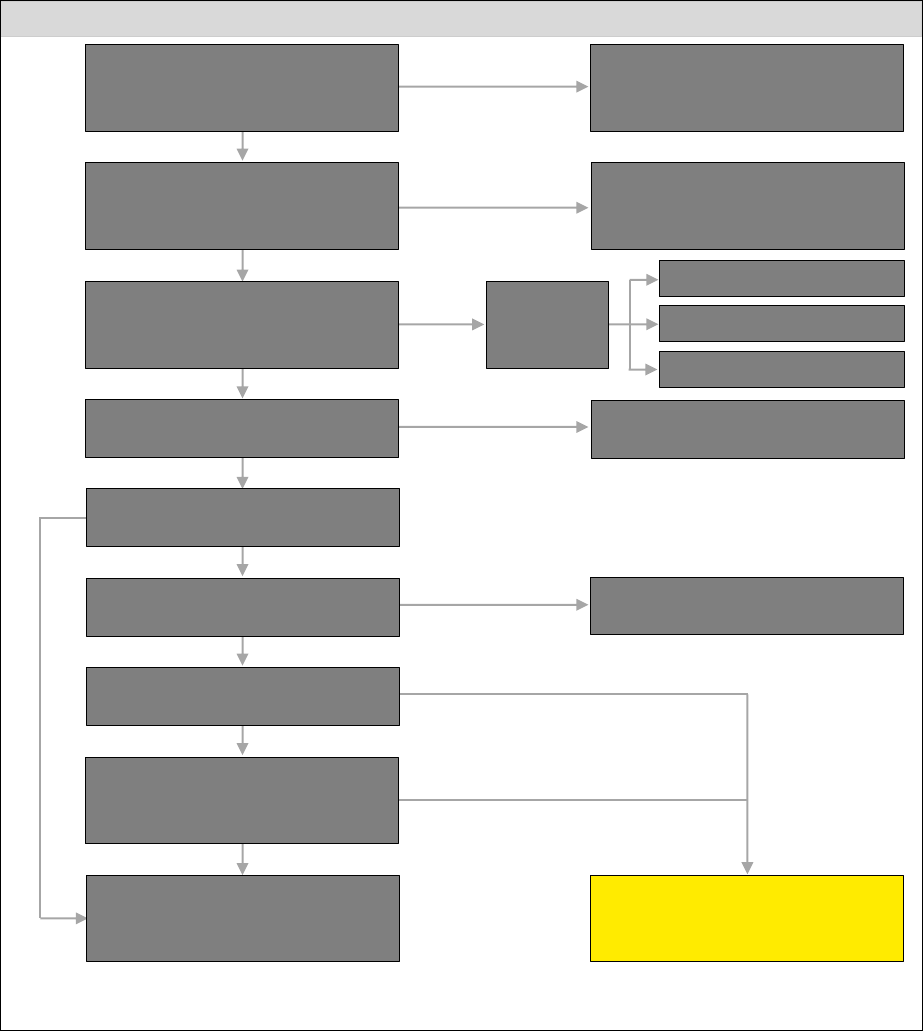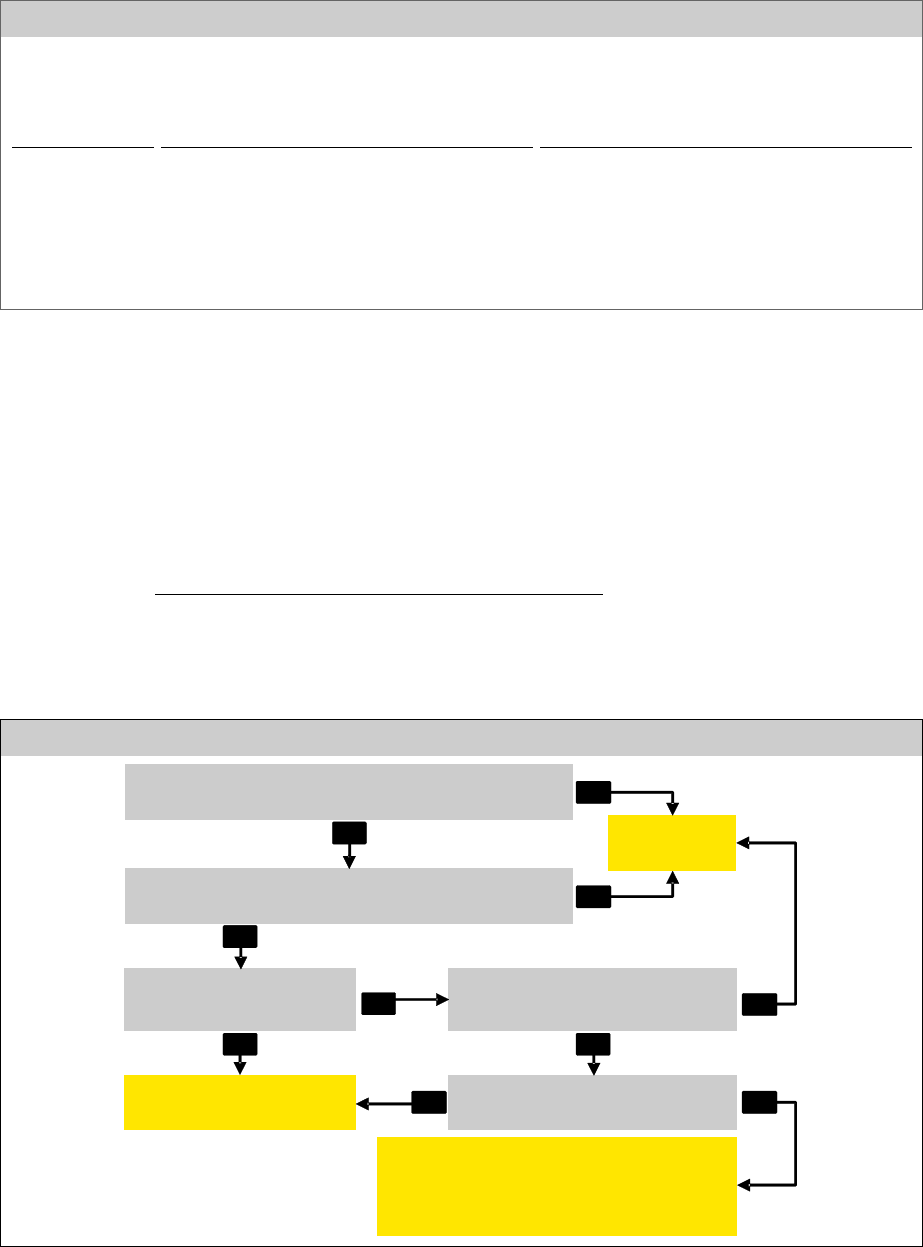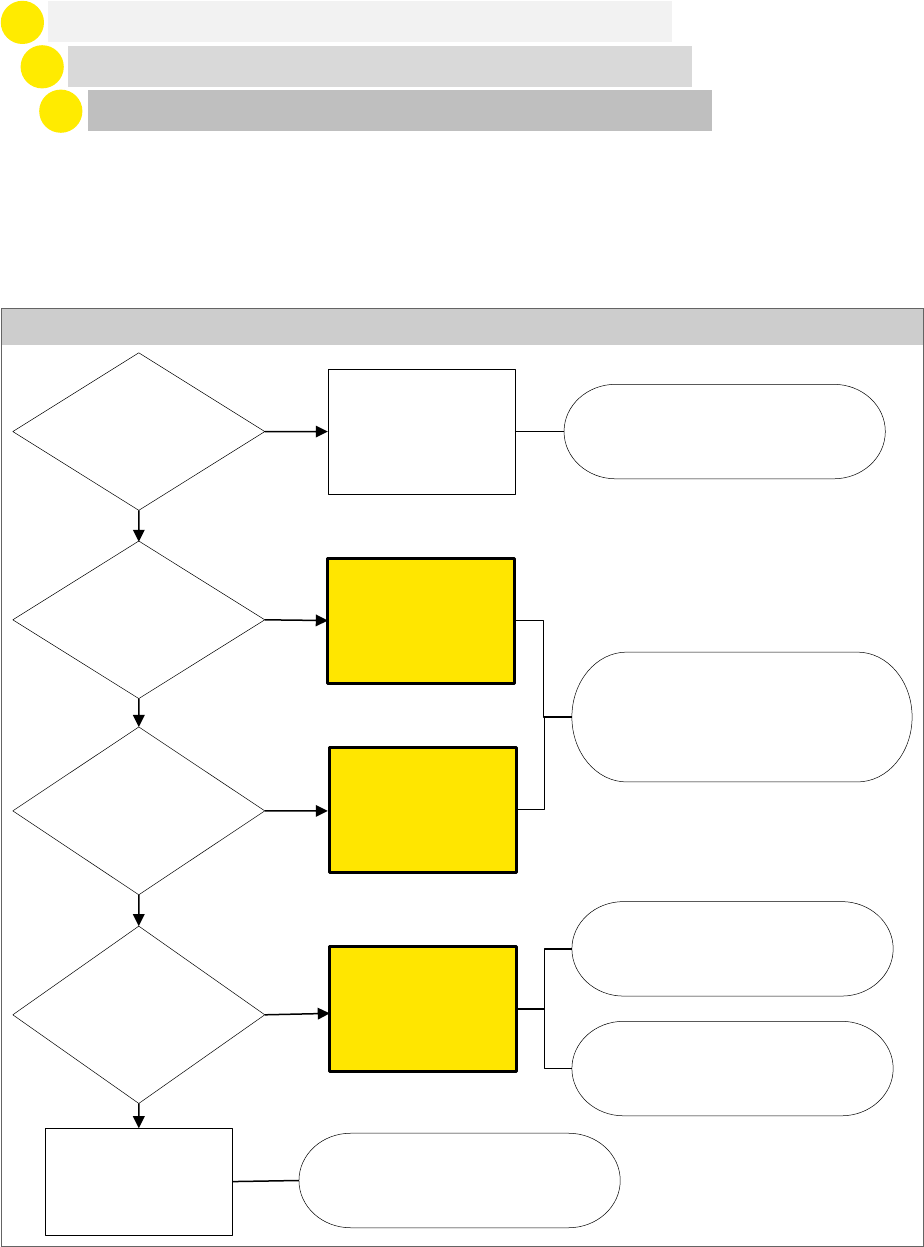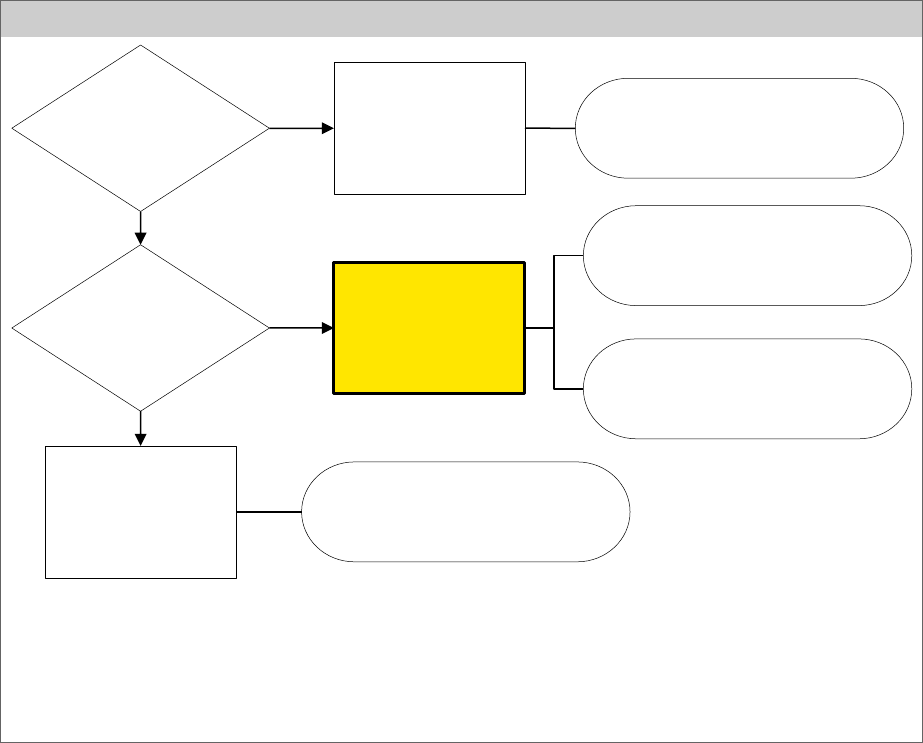
Financial reporting developments
A comprehensive guide
Certain
investments in
debt and equity
securities
May 2023

To our clients and other friends
This Financial reporting developments (FRD) publication summarizes the guidance on the accounting for
certain investments in debt and equity securities and includes excerpts from and references to the
Accounting Standards Codification (ASC or Codification), interpretive guidance and examples.
We have updated this publication to provide enhancements to our interpretive guidance. Refer to
Appendix E for further detail on the updates provided.
The accounting for investments in debt and equity securities continues to be an area of focus by preparers,
financial statement users, auditors and regulators. Questions continue to arise about the application of the
measurement alternative for equity securities, accounting for sales of held-to-maturity debt securities,
transfers between categories of debt securities and other topics.
This publication doesn’t address the accounting for credit impairment of debt securities under the guidance
in Accounting Standards Update (ASU) 2016-13.
1
Refer to Appendix A for a summary of the changes to
the credit impairment model for held-to-maturity and available-for-sale debt securities as a result of that
guidance. Additional guidance related to ASU 2016-13 can be found in our FRD, Credit impairment under
ASC 326. Public business entities (PBEs) that are Securities and Exchange Commission (SEC) filers and
are not smaller reporting companies (as defined by the SEC) were required to begin applying the
standard in 2020. All other entities are required to begin applying the standard in 2023.
We hope this publication will help you understand and apply the accounting for certain investments in
debt and equity securities. We are also available to answer your questions and discuss any concerns you
may have.
May 2023
1
ASU 2016-13, Financial Instruments — Credit Losses (Topic 326): Measurement of Credit Losses on Financial Instruments.
Financial reporting developments Certain investments in debt and equity securities | i
Contents
1 Overview ................................................................................................................... 1
1.1 Overview ............................................................................................................................... 1
2 Accounting for investments in debt securities ............................................................. 2
2.1 Overview ............................................................................................................................... 2
2.2 Scope and scope exceptions ................................................................................................... 2
2.2.1 Scope and scope exceptions — entities ............................................................................ 2
2.2.2 Scope and scope exceptions — instruments ..................................................................... 3
2.2.2.1 Debt securities ................................................................................................. 3
2.2.2.1.1 Definition of a security ............................................................................. 4
2.2.2.1.1.1 Loans ........................................................................................ 5
2.2.2.1.2 Preferred stock ....................................................................................... 6
2.2.2.1.3 Beneficial interests in securitized financial assets ....................................... 7
2.2.2.1.3.1 Securities in the scope of ASC 325-40 .......................................... 9
2.2.2.1.3.2 Applicability of ASC 325-40 to trading securities ......................... 10
2.2.2.1.4 Certain purchased options and forward contracts .................................... 11
2.2.3 Instruments that are not in the scope of ASC 320 ......................................................... 12
2.2.3.1 Derivatives .................................................................................................... 12
2.2.3.2 Other common issues related to scope ............................................................ 13
2.2.3.2.1 Cash and cash equivalents...................................................................... 13
2.2.3.2.2 Short sales of debt securities .................................................................. 13
2.2.3.2.3 Contractual prepayment or settlement in such a way that the holder
would not recover substantially all of its recorded investment ................... 13
2.2.3.2.4 Look-through not permitted (updated May 2023) .................................... 13
2.3 Classification and measurement ........................................................................................... 13
2.3.1 Summary table of classification and measurement ........................................................ 14
2.3.2 Recognition and initial measurement ............................................................................ 15
2.3.2.1 Premiums and discounts ................................................................................. 15
2.3.2.2 Transaction costs........................................................................................... 16
2.3.2.3 Recognition date ............................................................................................ 16
2.3.3 Trading securities ....................................................................................................... 17
2.3.3.1 Entities with classified balance sheets .............................................................. 18
2.3.3.2 Subsequent measurement .............................................................................. 18
2.3.3.2.1 Interest income ..................................................................................... 18
2.3.3.3 Foreign currency gains and losses ................................................................... 18
2.3.3.4 Hedging securities classified as trading ............................................................ 18
2.3.3.5 Considerations for mortgage banking entities .................................................. 19
2.3.4 Held-to-maturity securities .......................................................................................... 19
2.3.4.1 Ability and intent to hold to maturity ............................................................... 19
2.3.4.1.1 Considerations for regulated entities ....................................................... 20
2.3.4.1.2 Considerations for specific instruments ................................................... 20
2.3.4.1.2.1 Pledged securities ..................................................................... 20
Contents
Financial reporting developments Certain investments in debt and equity securities | ii
2.3.4.1.2.2 Repurchase agreements and similar arrangements ...................... 20
2.3.4.1.2.3 Convertible debt ....................................................................... 21
2.3.4.1.2.4 Prepayable debt securities ......................................................... 21
2.3.4.1.2.5 Put and call features ................................................................. 21
2.3.4.1.2.6 Interest-only securities and other securities with principal risk ...... 21
2.3.4.1.2.7 Structured notes ...................................................................... 22
2.3.4.2 Additional considerations when assessing whether held-to-maturity
classification is appropriate ............................................................................ 22
2.3.4.2.1 Asset-liability management programs ..................................................... 22
2.3.4.2.2 Hedging programs ................................................................................. 23
2.3.4.2.3 Investment management policies ............................................................ 23
2.3.4.2.4 Future business plans ............................................................................ 23
2.3.4.2.5 Tax-planning strategies .......................................................................... 23
2.3.4.3 Entities with classified balance sheets .............................................................. 23
2.3.4.4 Subsequent measurement .............................................................................. 23
2.3.4.5 Foreign currency considerations ..................................................................... 23
2.3.4.6 Hedging securities classified as held to maturity ............................................... 24
2.3.5 Available-for-sale securities ......................................................................................... 24
2.3.5.1 Entities with classified balance sheets .............................................................. 25
2.3.5.2 Subsequent measurement .............................................................................. 25
2.3.5.3 Foreign currency considerations ..................................................................... 25
2.3.5.4 Hedging securities classified as available for sale .............................................. 26
2.3.5.5 Effect of available-for-sale security unrealized gains and losses on
certain insurance-related assets and liabilities of insurance companies ............... 26
2.3.6 Forward contracts and purchased options on debt securities ......................................... 26
3 Accounting for equity investments ............................................................................ 28
3.1 Scope and scope exceptions ................................................................................................. 28
3.1.1 Scope and scope exceptions — entities .......................................................................... 28
3.1.2 Scope and scope exceptions — instruments ................................................................... 28
3.1.2.1 Equity securities ............................................................................................ 29
3.1.2.1.1 Forward contracts and purchased options on equity securities .................. 29
3.1.2.1.2 Simple agreement for future equity (SAFE) (updated May 2023) ............... 30
3.1.2.1.3 SEC staff views on written options and combination options ..................... 31
3.1.2.2 Other ownership interests in an entity ............................................................. 32
3.1.2.2.1 Investments in limited partnerships (updated May 2023) .......................... 32
3.1.3 Instruments not in the scope of ASC 321 ...................................................................... 33
3.1.3.1 Derivatives .................................................................................................... 33
3.1.4 Common issues related to scope .................................................................................. 34
3.1.4.1 Look-through not permitted ............................................................................ 34
3.1.4.2 Cash and cash equivalents .............................................................................. 34
3.1.4.3 Short sales of equity securities ........................................................................ 34
3.2 Recognition and initial measurement .................................................................................... 34
3.2.1 Transaction costs ........................................................................................................ 35
3.2.2 Recognition date ......................................................................................................... 35
3.2.3 Entities with classified balance sheets .......................................................................... 37
3.2.4 Equity securities received in exchange for goods or services with customers ...................... 37
Contents
Financial reporting developments Certain investments in debt and equity securities | iii
3.3 Subsequent measurement .................................................................................................... 37
3.3.1 Equity investments with readily determinable fair values ............................................... 38
3.3.1.1 Readily determinable fair value ....................................................................... 38
3.3.1.1.1 Restricted stock .................................................................................... 39
3.3.2 Equity investments without readily determinable fair values .......................................... 40
3.3.2.1 Measurement alternative ................................................................................ 40
3.3.2.1.1 Eligibility ............................................................................................... 40
3.3.2.1.2 Reassessment and discontinuance of the election .................................... 42
3.3.2.1.3 Identifying observable price changes ....................................................... 42
3.3.2.1.3.1 Subsequent discovery of observable price changes ...................... 43
3.3.2.1.4 Identifying a similar investment of the same issuer ................................... 45
3.3.2.1.5 Forward contracts and purchased options on equity securities .................. 47
3.4 Foreign currency gains and losses......................................................................................... 47
3.5 Hedging securities ............................................................................................................... 48
3.6 Equity method investments .................................................................................................. 48
3.6.1 Initial carrying amount of equity securities previously accounted for under
the equity method ....................................................................................................... 48
3.6.2 Changing from ASC 321 accounting to the equity method of accounting ....................... 49
4 Transfers between categories and sales of debt securities ......................................... 51
4.1 Transfers between categories of debt securities .................................................................... 51
4.1.1 Summary table of accounting requirements for transfers between categories ................ 52
4.1.2 Transfers from available for sale to held to maturity ..................................................... 53
4.1.3 Transfers from held to maturity to available for sale ..................................................... 54
4.1.3.1 Transfers of held-to-maturity securities among members of a
consolidated group ........................................................................................ 55
4.1.4 Transfers involving trading securities ........................................................................... 55
4.1.5 Conversions of convertible bonds ................................................................................. 56
4.2 Sales of debt securities ........................................................................................................ 57
4.2.1 Sales of trading securities ............................................................................................ 57
4.2.2 Sales of available-for-sale securities ............................................................................. 57
4.2.2.1 Gain recognition on sales of securities with an arrangement to reacquire them ... 57
4.2.3 Sales of held-to-maturity securities .............................................................................. 58
4.2.3.1 Evaluation of the remaining portfolio following a sale or transfer ....................... 58
4.2.3.1.1 SEC staff views on sales or transfers of held-to-maturity securities ............ 59
4.2.3.2 Permitted sales or transfers ............................................................................ 60
4.2.3.2.1 Credit deterioration ............................................................................... 60
4.2.3.2.2 Change in tax law .................................................................................. 61
4.2.3.2.3 Major business combination or disposition ............................................... 61
4.2.3.2.4 Change in statutory or regulatory requirements regarding
permissible investments ......................................................................... 63
4.2.3.2.5 Significant change in regulatory capital requirements............................... 63
4.2.3.2.6 Isolated, nonrecurring and unusual events ............................................... 63
4.2.3.2.6.1 Tender offers for held-to-maturity securities ............................... 64
4.2.3.3 Sales deemed to be at maturity ....................................................................... 64
4.2.3.4 Secured borrowings ....................................................................................... 65
Contents
Financial reporting developments Certain investments in debt and equity securities | iv
5 Impairment .............................................................................................................. 67
5.1 Debt securities ..................................................................................................................... 67
5.1.1 Overview and scope .................................................................................................... 67
5.1.2 Determining whether a debt security is impaired ........................................................... 69
5.1.3 Evaluating whether an impairment is other than temporary ........................................... 70
5.1.3.1 Entity intends to sell the debt security ............................................................. 71
5.1.3.2 More likely than not the entity will be required to sell prior to
recovery of cost basis .................................................................................... 72
5.1.3.2.1 Sales after the balance sheet date .......................................................... 72
5.1.3.2.2 Third-party management of investment portfolio ..................................... 73
5.1.3.2.3 Securities classified as held to maturity ................................................... 73
5.1.3.3 Entity does not expect to recover the entire amortized cost basis ...................... 73
5.1.3.3.1 Need for detailed cash flow analysis at each report date ........................... 75
5.1.4 Measuring and recognizing an OTTI .............................................................................. 75
5.1.4.1 Recognizing an OTTI ...................................................................................... 75
5.1.4.2 Measuring the credit loss component of an OTTI............................................... 76
5.1.4.2.1 Best estimate of present value of expected cash flows .............................. 76
5.1.4.2.1.1 Single best estimate versus probability-weighted estimate ........... 77
5.1.4.2.1.2 Variable-rate debt securities ...................................................... 78
5.1.4.2.1.3 Use of practical expedients in ASC 310-10 .................................. 78
5.1.4.2.1.4 Examples of measuring the credit loss of a debt security .............. 78
5.1.4.2.1.4.1 Measuring the credit loss of a security not in
the scope of ASC 325-40 ................................................... 78
5.1.4.2.1.4.2 Measuring the credit loss of a debt security in
the scope of ASC 325-40 ................................................... 80
5.1.4.2.1.4.3 Variable-rate debt securities not in the scope of
ASC 325-40 ..................................................................... 81
5.1.4.2.1.4.4 Fair value of previously impaired debt security
increases but expected cash flows decrease ........................ 83
5.1.4.2.1.4.5 Total decline in fair value is less than decline in
expected cash flows .......................................................... 86
5.1.5 Foreign currency considerations .................................................................................. 87
5.1.6 Accounting after an OTTI ............................................................................................. 88
5.1.7 Presentation of OTTI for debt securities ....................................................................... 89
5.1.7.1 Presentation of subsequent changes in fair value of AFS securities
after an OTTI ................................................................................................. 89
5.1.7.2 Presentation of noncredit portions of OTTI for AFS and HTM securities .............. 90
5.2 Equity securities .................................................................................................................. 90
5.2.1 Equity securities measured using the measurement alternative ..................................... 90
5.2.1.1 Foreign currency considerations ..................................................................... 91
6 Presentation and disclosure ..................................................................................... 92
6.1 Presentation and disclosure — debt securities ........................................................................ 92
6.1.1 Balance sheet presentation — debt securities ................................................................ 92
6.1.2 Income statement presentation — debt securities .......................................................... 93
6.1.2.1 Dividend and interest income — debt securities ................................................. 93
6.1.2.2 Other-than-temporary impairment — debt securities ......................................... 93
6.1.3 Other comprehensive income presentation — debt securities ......................................... 94
Contents
Financial reporting developments Certain investments in debt and equity securities | v
6.1.4 Cash flow presentation and disclosure — debt securities ................................................ 95
6.1.5 Disclosures — debt securities ........................................................................................ 95
6.1.5.1 AFS and HTM securities — debt securities ......................................................... 96
6.1.5.2 Unrealized loss disclosures — debt securities .................................................... 99
6.1.5.3 Credit loss rollforward disclosures — debt securities ........................................ 102
6.1.5.4 Disclosing the fair value of debt securities ...................................................... 103
6.1.5.5 Additional footnote disclosure considerations for financial institutions —
debt securities ............................................................................................. 103
6.1.6 Disclosures about transfers between categories and sales of debt securities ................ 103
6.2 Presentation and disclosure — equity securities .................................................................... 104
6.2.1 Overview — equity securities ...................................................................................... 104
6.2.2 Balance sheet presentation — equity securities ............................................................ 105
6.2.3 Income statement presentation — equity securities ..................................................... 106
6.2.4 Cash flow presentation and disclosure — equity securities ............................................ 106
6.2.5 Disclosures — equity securities ................................................................................... 106
6.2.5.1 Equity securities without readily determinable fair values ................................ 106
6.2.5.2 Equity securities held at the reporting date .................................................... 107
6.2.6 Sales of equity securities ........................................................................................... 108
A Summary of ASU 2016-13 ...................................................................................... A-1
B Glossary ................................................................................................................. B-1
C ASC references ....................................................................................................... C-1
D ASC abbreviations .................................................................................................. D-1
E Summary of important changes ............................................................................... E-1

Contents
Financial reporting developments Certain investments in debt and equity securities | vi
Notice to readers:
This publication includes excerpts from and references to the Financial Accounting Standards Board
(FASB or Board) Accounting Standards Codification (Codification or ASC). The Codification uses a
hierarchy that includes Topics, Subtopics, Sections and Paragraphs. Each Topic includes an Overall
Subtopic that generally includes pervasive guidance for the Topic and additional Subtopics, as needed,
with incremental or unique guidance. Each Subtopic includes Sections that in turn include numbered
Paragraphs. Thus, a Codification reference includes the Topic (XXX), Subtopic (YY), Section (ZZ) and
Paragraph (PP).
Throughout this publication references to guidance in the Codification are shown using these reference
numbers. References are also made to certain pre-Codification standards (and specific sections or
paragraphs of pre-Codification standards) in situations in which the content being discussed is excluded
from the Codification.
This publication has been carefully prepared, but it necessarily contains information in summary form
and is therefore intended for general guidance only; it is not intended to be a substitute for detailed
research or the exercise of professional judgment. The information presented in this publication should
not be construed as legal, tax, accounting, or any other professional advice or service. Ernst & Young
LLP can accept no responsibility for loss occasioned to any person acting or refraining from action as a
result of any material in this publication. You should consult with Ernst & Young LLP or other
professional advisors familiar with your particular factual situation for advice concerning specific audit,
tax or other matters before making any decisions.
Portions of FASB publications reprinted with permission. Copyright Financial Accounting Standards Board, 801 Main Avenue,
P.O. Box 5116, Norwalk, CT 06856-5116, USA. Portions of AICPA Statements of Position, Technical Practice Aids and other AICPA
publications reprinted with permission. Copyright American Institute of Certified Public Accountants, 1345 Avenue of the Americas,
27
th
Floor, New York, NY 10105, USA. Copies of complete documents are available from the FASB and the AICPA.

Financial reporting developments Certain investments in debt and equity securities | 1
1 Overview
1.1 Overview
This publication addresses the financial accounting and reporting requirements for certain investments in
debt and equity securities. ASC 320, Investments — Debt Securities, provides accounting and reporting
guidance only for investments in debt securities, including those resulting from the securitization of other
financial instruments. ASC 321, Investments — Equity Securities, provides accounting and reporting
guidance for investments in equity securities and other ownership interests in an entity. This guidance
applies to entities in almost all industries.
This publication doesn’t address the accounting for credit impairment of debt securities under the new
guidance in ASU 2016-13. Refer to Appendix A for a summary of the changes to the credit impairment
model for held-to-maturity and available-for-sale debt securities as a result of that guidance. Additional
guidance related to ASU 2016-13 can be found in our FRD, Credit impairment under ASC 326. PBEs that
are SEC filers and are not smaller reporting companies (as defined by the SEC) were required to begin
applying the standard in 2020. All other entities are required to begin applying the standard in 2023.

Financial reporting developments Certain investments in debt and equity securities | 2
2 Accounting for investments in debt
securities
2.1 Overview
ASC 320 provides guidance on the financial accounting and reporting for investments in debt securities,
including those resulting from the securitization of other financial instruments. The guidance applies to
entities in almost all industries.
2.2 Scope and scope exceptions
2.2.1 Scope and scope exceptions — entities
Excerpt from Accounting Standards Codification
Investments — Debt Securities — Overall
Scope and Scope Exceptions
Entities
320-10-15-2
The guidance in the Investments — Debt Securities Topic applies to all entities, including the following
entities that are not deemed to belong to specialized industries for purposes of this Topic:
a. Cooperatives and mutual entities (such as credit unions and mutual insurance entities)
b. Trusts that do not report substantially all of their debt securities at fair value.
320-10-15-3
The guidance in this Topic does not apply to the following entities:
a. Entities in certain specialized industries. Entities whose specialized accounting practices include
accounting for substantially all investments in debt securities at fair value, with changes in value
recognized in earnings (income) or in the change in net assets.
320-10-15-4
Paragraphs 320-10-35-7 through 35-34 provide guidance on identifying and accounting for
impairment of certain securities and identify the scope application of that guidance for not-for-profit
entities (NFPs). No other part of this Topic applies to NFPs. Subtopic 958-320 establishes standards
for investments in debt securities by NFPs.
Pending content:
Transition Date: (P) December 16, 2019; (N) December 16, 2022 | Transition Guidance: 326-10-65-1
This Topic does not apply to not-for-profit entities (NFPs). Subtopic 958-320 establishes standards
for investments in debt securities by NFPs.
Entities are subject to the guidance, unless they follow certain specialized industry guidance and are
excluded from the scope of ASC 320. Entities in the scope of ASC 320 include commercial entities,
financial institutions, cooperatives and mutual entities and trusts that do not report substantially all of
their debt securities at fair value.

2 Accounting for investments in debt securities
Financial reporting developments Certain investments in debt and equity securities | 3
The following table lists some entities that follow certain specialized industry guidance and are excluded
from the scope of ASC 320.
Industry
Applicable guidance
Brokers and dealers in securities
ASC 940-320, Financial Services — Brokers and Dealers,
Investments — Debt and Equity Securities
Defined benefit pension plans
ASC 960-325, Plan Accounting — Defined Benefit Pension
Plans, Investments — Other
Investment companies
ASC 946-320, Financial Services — Investment Companies,
Investments — Debt and Equity Securities
ASC 958-320 provides guidance on accounting for investments in debt securities held by not-for- profit
entities (NFPs). Prior to the adoption of ASU 2016-13, certain NFPs followed the impairment guidance in
ASC 320-10-35-17 through 35-34. Refer to section 5, Impairment, for additional information. No other
guidance in ASC 320 applies to NFPs. After the adoption of ASU 2016-13, the guidance in ASC 320 does
not apply to NFPs and NFPs should apply guidance in ASC 958-320 for investments in debt securities.
2.2.2 Scope and scope exceptions — instruments
ASC 320 applies to all investments in debt securities, including those resulting from the securitization of
other financial instruments, and loans that meet the definition of a security.
2.2.2.1 Debt securities
The ASC Master Glossary defines a debt security as any security representing a creditor relationship with
an entity and provides examples of instruments that meet this definition. It also lists certain instruments
that do not meet the definition.
Excerpt from Accounting Standards Codification
Master Glossary
Debt Security
Any security representing a creditor relationship with an entity. The term debt security also includes
all of the following:
a. Preferred stock that by its terms either must be redeemed by the issuing entity or is redeemable
at the option of the investor
b. A collateralized mortgage obligation (or other instrument) that is issued in equity form but is
required to be accounted for as a nonequity instrument regardless of how that instrument is
classified (that is, whether equity or debt) in the issuer’s statement of financial position
c. U.S. Treasury securities
d. U.S. government agency securities
e. Municipal securities
f. Corporate bonds
g. Convertible debt
h. Commercial paper

2 Accounting for investments in debt securities
Financial reporting developments Certain investments in debt and equity securities | 4
i. All securitized debt instruments, such as collateralized mortgage obligations and real estate
mortgage investment conduits
j. Interest-only and principal-only strips.
The term debt security excludes all of the following:
a. Option contracts
b. Financial futures contracts
c. Forward contracts
d. Lease contracts
e. Receivables that do not meet the definition of security and, so, are not debt securities, for example:
1. Trade accounts receivable arising from sales on credit by industrial or commercial entities
2. Loans receivable arising from consumer, commercial, and real estate lending activities of
financial institutions.
The definition of debt security in ASC 320 includes instruments beyond legal-form debt. For example, preferred
stock that is either mandatorily redeemable or redeemable at the option of the investor is considered a
debt security under ASC 320, even though preferred stock is considered an equity security in legal form.
2.2.2.1.1 Definition of a security
Excerpt from Accounting Standards Codification
Master Glossary
Security
A share, participation, or other interest in property or in an entity of the issuer or an obligation of the
issuer that has all of the following characteristics:
a. It is either represented by an instrument issued in bearer or registered form or, if not represented
by an instrument, is registered in books maintained to record transfers by or on behalf of the issuer.
b. It is of a type commonly dealt in on securities exchanges or markets or, when represented by
an instrument, is commonly recognized in any area in which it is issued or dealt in as a medium
for investment.
c. It either is one of a class or series or by its terms is divisible into a class or series of shares,
participations, interests, or obligations.
Certain debt instruments must be evaluated carefully to determine whether they meet the definition of a
security, which requires that they have all three characteristics listed in the Master Glossary. For example,
while most certificates of deposit (CDs) do not meet the ASC 320 definition of a security, some negotiable
“jumbo” CDs may meet it. Likewise, certain guaranteed investment contracts (GICs) meet the definition
of a security, while others do not. When considering whether an instrument meets the ASC 320 definition
of a security, entities should consider the following:
• While the definition of security in ASC 320 is modeled after the definition in the Uniform Commercial
Code (UCC), the definitions are not the same because the UCC definition has changed since the
issuance of the ASC 320 definition.

2 Accounting for investments in debt securities
Financial reporting developments Certain investments in debt and equity securities | 5
• The FASB indicated in the Background Information and Basis for Conclusions of FAS 115 (FAS 115
was codified as ASC 320) that when deciding how to define a security for US GAAP purposes, it
decided not to use the definition in the Securities Exchange Act of 1934 because it considered that
definition too broad. For example, that definition includes instruments such as notes for routine
personal bank loans, which the FASB believed should not be included in the scope of ASC 320.
• The determination of whether an investment meets the definition of a security is not a legal
determination and does not require a legal analysis.
• When considering whether an instrument is a security, there is rarely one overriding characteristic
that is determinative. For example, an instrument could meet the second criterion in the ASC 320
definition (i.e., it is a medium for investment) even if it includes certain transfer restrictions.
Therefore, all facts and circumstances should be considered.
The SEC staff has also reiterated that ASC 320 provides its own definition of a security and does not
depend on whether the investment meets the UCC definition.
2
2.2.2.1.1.1 Loans
Excerpt from Accounting Standards Codification
Master Glossary
Loan
A contractual right to receive money on demand or on fixed or determinable dates that is recognized
as an asset in the creditor's statement of financial position. Examples include but are not limited to
accounts receivable (with terms exceeding one year) and notes receivable. This definition
encompasses loans accounted for as debt securities.
Only loans that meet the definition of a security are in the scope of ASC 320. Although certain loans can
be readily converted into securities (e.g., loans insured by the Federal Housing Administration, conforming
mortgage loans), a loan that does not meet the definition of a security is not in the scope of ASC 320
until it has been securitized.
For transferors, beneficial interests received as consideration for transferred loans may not be classified as
investment securities, unless the transfer of the loans meets the criteria for sale accounting under ASC 860.
Loans that do not meet the definition of a security are generally in the scope of ASC 310-10, unless they
are acquired with deteriorated credit quality, in which case they are in the scope of ASC 310-30.
ASC 310-10 applies to a variety of instruments and transactions, including trade account receivables,
loans, loan syndications, factoring arrangements, standby letters of credit, financing receivables
(e.g., notes receivables, credit cards) and rebates.
2
Remarks by Robert Uhl, SEC staff, before the Twenty-Fifth AICPA National Conference on Current SEC Developments, 10 December 1997.
2 Accounting for investments in debt securities
Financial reporting developments Certain investments in debt and equity securities | 6
2.2.2.1.2 Preferred stock
An investment in preferred stock that must be redeemed by the issuing entity or is redeemable at the
investor’s option is considered a debt security under ASC 320, despite its legal form. This is the case
regardless of how the issuer classified the instrument. If preferred stock is determined to be a debt
security, ASC 320 would apply to the instrument.
If the preferred stock is not mandatorily redeemable (i.e., there is no stated redemption date) and the
investor does not have the unilateral right to ultimately redeem it, the preferred stock is considered an
equity security subject to the provisions of ASC 321.
In some cases, the terms of a preferred stock give the investor the option to redeem it only after a certain
amount of time has passed. Even if it does not yet have a present right to redeem, the investor is still considered
to have a unilateral redemption right, and the stock would be classified as a debt security. In other cases, an
investor may have the right to redeem preferred stock only when an event that is not certain to occur occurs.
For example, an investor may have a right to redeem preferred stock only when a certain percentage
(e.g., majority, two-thirds) of investors elects to redeem their preferred stock. The preferred stock generally
would only be considered a debt security if and when the required percentage of interest is obtained, upon
which the investor has a unilateral right to redeem the preferred stock. If an uncertain event is within the control
of the investor, that fact should be considered in determining whether a unilateral redemption right exists.
Certain preferred shares may become redeemable at a future date if an event (e.g., a liquidity event)
does not occur by a specified date. In these cases, we believe that the preferred stock would generally be
classified as a debt security unless the issuer can control the occurrence of the event. Certain liquidity
events are not in the control of the issuer or the investor, such as an initial public offering (IPO).
To further illustrate these concepts, assume an investor holds a preferred stock that becomes
redeemable in five years by the investor unless an IPO of the issuer occurs before that date, in which
case the preferred stock is automatically converted into common stock of the issuer. In this case,
because the investor can redeem the preferred stock by passage of time in five years, the investor is
considered to have a unilateral redemption right, and therefore, the preferred stock would be classified
as a debt security. In contrast, if the issuer controls the occurrence of the event that prevents the
preferred stock from becoming redeemable by the investor, that fact should be considered in the
determination of whether a unilateral redemption right exists for the investor.
Preferred stock that is considered a debt security may be carried at amortized cost if it meets the held-to-
maturity (HTM) criteria. For example, when preferred stock has a fixed redemption date and the investor
has the intent and ability to hold the instrument until that redemption date, that instrument can be
classified as HTM.
The following illustrate the determination of whether an investor has a unilateral right to redemption and
the effect on whether preferred stock is classified as a debt or equity security.

2 Accounting for investments in debt securities
Financial reporting developments Certain investments in debt and equity securities | 7
Illustration 2-1: Preferred stock classified as an equity security
ABC Corporation is a publicly traded entity that issued preferred stock on 1 January 20X1. The preferred stock
is not mandatorily redeemable by ABC Corporation (that is, there is no stated redemption date). However,
beginning on 1 January 20X7, it may be redeemed if a majority of the preferred stockholders vote to do so.
Investor XYZ, which holds approximately 19% of the outstanding preferred stock, does not consider
them to be debt securities because they are not mandatorily redeemable and may only be redeemed if
a majority of preferred stockholders vote to do so, beginning on 1 January 20X7. Because Investor XYZ
holds less than a majority of the outstanding preferred stock, it does not have the unilateral right to
redeem them. Therefore, Investor XYZ classifies the preferred shares it holds as equity securities.
Illustration 2-2: Preferred stock classified as a debt security
Assume the same facts as above, except that Investor XYZ acquires an additional 40% of the outstanding
preferred stock, so it now owns 59% of the outstanding preferred stock.
In this case, the preferred stock meets the definition of a debt security because Investor XYZ owns
more than 50% of the outstanding preferred stock and therefore has the unilateral right to redeem its
preferred stock, as long as it continues to hold a majority interest until 1 January 20X7. Therefore,
Investor XYZ classifies the preferred shares it owns as debt securities as of the day it acquires the
additional 40% of outstanding preferred shares.
Illustration 2-3: Preferred stock classified as a debt security
Company A is a private entity that issued preferred stock on 1 January 20X1. The preferred stock is
redeemable at the option of the investor beginning on 31 December 20X5 if Company A has not
completed an IPO before then. The preferred stock will automatically convert into common stock upon
an IPO. Investor B invests in Company A’s preferred shares on 1 January 20X2. Neither Company A nor
Investor B can control the success of a Company A IPO.
Although a successful IPO by Company A would prevent Investor B from exercising the redemption right,
Company A does not control its ability to successfully complete an IPO. Therefore, because the preferred
stock will become redeemable by Investor B merely by the passage of time, Investor B is considered to
have a unilateral redemption right and classifies the preferred stock as a debt security.
2.2.2.1.3 Beneficial interests in securitized financial assets
Beneficial interests are defined as rights to receive all or portions of specified cash inflows received by a
trust or other entity. They include senior and subordinated shares of interest, principal or other cash
inflows to be passed through or paid through, and residual interests. Beneficial interests may be created
in connection with securitization transactions, such as those involving collateralized debt obligations or
collateralized loan obligations.
Entities must determine whether beneficial interests are in the scope of ASC 325-40. Beneficial interests subject
to the guidance in ASC 325-40 can be either (1) beneficial interests retained in securitization transactions
and accounted for as sales under ASC 860 or (2) purchased beneficial interests in securitized financial assets.

2 Accounting for investments in debt securities
Financial reporting developments Certain investments in debt and equity securities | 8
The following flowchart provides a framework for determining whether ASC 325-40 applies to an asset:
Illustration 2-4: Determining whether an asset is in the scope of ASC 325-40
[A]
If the beneficial interest is not subsequently measured at fair value through earnings, evaluate whether the beneficial interest
has embedded derivatives that require bifurcation in accordance with ASC 815-15.
No
No
Yes
No
Yes
Yes
Yes
No
Yes
Yes
No
Yes
No
No
Yes
No
Is the beneficial interest an investment in
an entity that is consolidated by the holder
of the beneficial interest?
Is the beneficial interest a debt security
under ASC 320 or required to be accounted
for as one under ASC 860-20—35-2?
Does the beneficial interest, in its entirety,
meet the definition of a derivative
under ASC 815?
Is the beneficial interest in the scope of
ASC 310-30?
Does the beneficial interest involve securitized
financial assets?
Do the securitized financial assets have
contractual cash flows?
Is the beneficial interest of high credit quality?
Can the beneficial interest be contractually
prepaid or otherwise settled in a way that
the holder would not recover substantially
all of its recorded investment?
Apply guidance under ASC 320-10, and for
interest income recognition the guidance
under ASC 310-20.
[A]
Apply guidance under ASC 325-40.
[A]
Apply the guidance in ASC 320-10-35-38
through 35-43.
[A]
Apply guidance under ASC 310-30.
[A]
Apply guidance under ASC 815.
Beneficial interests are eliminated in
consolidation.
Determine what
other guidance
applies
Apply guidance under ASC 310.
[A]
Apply guidance under ASC 323.
[A]
Apply guidance under ASC 321.
[A]

2 Accounting for investments in debt securities
Financial reporting developments Certain investments in debt and equity securities | 9
2.2.2.1.3.1 Securities in the scope of ASC 325-40
Excerpt from Accounting Standards Codification
Investments — Other — Beneficial Interests in Securitized Financial Assets
Scope and Scope Exceptions
Instruments
325-40-15-3
The guidance in this Subtopic applies to beneficial interests that have all of the following
characteristics:
a. Are either debt securities under Subtopic 320-10 or required to be accounted for like debt
securities under that Subtopic pursuant to paragraph 860-20-35-2.
b. Involve securitized financial assets that have contractual cash flows (for example, loans, receivables,
debt securities, and guaranteed lease residuals, among other items). Thus, the guidance in this
Subtopic does not apply to securitized financial assets that do not involve contractual cash flows
(for example, common stock equity securities, among other items). See paragraph 320-10-35-38
for guidance on beneficial interests involving securitized financial assets that do not involve
contractual cash flows.
c. Do not result in consolidation of the entity issuing the beneficial interest by the holder of the
beneficial interests.
d. Are not within the scope of Subtopic 310-30.
e. Are not beneficial interests in securitized financial assets that have both of the following
characteristics:
1. Are of high credit quality (for example, guaranteed by the U.S. government, its agencies, or
other creditworthy guarantors, and loans or securities sufficiently collateralized to ensure
that the possibility of credit loss is remote)
2. Cannot contractually be prepaid or otherwise settled in such a way that the holder would not
recover substantially all of its recorded investment.
ASC 325-40 does not apply to beneficial interests that (1) are of high credit quality and (2) cannot be
contractually prepaid or otherwise settled in such a way that the holder would not recover substantially
all of its recorded investment. The following table provides examples of how the guidance may be applied
to certain securities.
Security type
AAA-rated
senior security
Agency
3
interest-only
strip
BBB-rated
subordinated
interest
Residual
interest
High credit quality
Yes
Yes
No
No
Contractually prepaid or otherwise
settled in a way that the holder would
not recover substantially all of its
recorded investment
No
Yes
No
Yes
In the scope of ASC 325-40
No
Yes
Yes
Yes
3
Refers to US government agencies and government-sponsored enterprises, including Government National Mortgage Association
(Ginnie Mae), Federal National Mortgage Association (Fannie Mae) and Federal Home Loan Mortgage Corporation (Freddie Mac).

2 Accounting for investments in debt securities
Financial reporting developments Certain investments in debt and equity securities | 10
ASC 325-40 states that beneficial interests guaranteed by the US government, its agencies or other
creditworthy guarantors and loans or securities that are sufficiently collateralized to make sure that the
possibility of credit loss is remote are considered to be of high credit quality.
Although ASC 325-40 does not specify a minimum credit rating, the SEC staff believes that only beneficial
interests rated AA or higher should be considered of “high credit quality.”
4
There are situations when a beneficial interest may have a so-called split rating, in which one credit
rating agency has rated the instrument as AA or higher, but another credit rating agency has rated it
below AA. In these situations, we understand the SEC staff would not consider the beneficial instrument
to be of high credit quality for purposes of applying ASC 325-40 (i.e., the instrument would be in the
scope of ASC 325-40).
To evaluate whether an investor might not recover substantially all its recorded investment due to a
prepayment or other settlement, an entity considers the contractual terms of the beneficial interest,
rather than the likelihood of prepayments or other settlements occurring. If the underlying borrowers
(i.e., the debtors in the securitized debt instruments) could exercise contractual rights permitting them to
prepay or otherwise settle their debt instruments in a way that would cause the holder of a beneficial
interest in those underlying debt instruments to not recover substantially all of its recorded investment,
this criterion is met. The likelihood of the event occurring that could cause the investor in the beneficial
interest to not recover substantially all of its recorded investment is not considered.
For example, an interest-only strip could meet the definition of “high credit quality” if the structure is supported
by a guarantee from a creditworthy guarantor (e.g., a government-sponsored enterprise). However, because
the holder of the strip only receives cash flows when underlying loans are outstanding, loan prepayments
could result in the holder of the security not recovering substantially all of its recorded investment.
How we see it
ASC 325-40 does not address whether an entity should reevaluate the scope criteria, including the
evaluation of whether a beneficial interest is of high credit quality, after the acquisition date of the
beneficial interest. Some entities evaluate the scope criteria in ASC 325-40 at acquisition and in
connection with the recognition of any other-than-temporary impairment, while others perform a
continual reassessment. An entity should apply its elected accounting policy consistently.
2.2.2.1.3.2 Applicability of ASC 325-40 to trading securities
Excerpt from Accounting Standards Codification
Investments — Other — Beneficial Interests in Securitized Financial Assets
Scope and Scope Exceptions
Instruments
Beneficial Interests Classified as Trading
325-40-15-7
For income recognition purposes, beneficial interests classified as trading are included in the scope of
this Subtopic because it is practice for certain industries (such as banks and investment companies) to
report interest income as a separate item in their income statements, even though the investments
are accounted for at fair value.
4
Remarks by John M. James, SEC staff, before the Thirty-First AICPA National Conference on Current SEC Developments,
11 December 2003.

2 Accounting for investments in debt securities
Financial reporting developments Certain investments in debt and equity securities | 11
Host Contract Portion of a Hybrid Beneficial Interest
325-40-15-8
Included in the scope of this Subtopic are the host contract portion of a hybrid beneficial interest that
requires separate accounting for an embedded derivative under paragraphs 815-15-25-1; 815-15-25-11
through 25-14; and 815-15-25-26 through 25-29 when the host contract otherwise meets the scope
of this Subtopic. The issue of when and how a hybrid contract is to be separated into its component
parts is an implementation issue of Topic 815 and, therefore, not within the scope of this Subtopic.
325-40-15-9
The guidance in this Subtopic does not apply to hybrid beneficial interests measured at fair value
pursuant to paragraphs 815-15-25-4 through 25-6 for which the transferor does not report interest
income as a separate item in its income statements.
ASC 325-40 applies to beneficial interests that are classified as trading or that have been designated to
be measured at fair value with changes in fair value recognized in earnings under the fair value option in
ASC 825-10 (not the fair value option in ASC 815-15, which is discussed below) or that are accounted
for that way under industry-specific guidance. For example, investment companies are generally required
by ASC 946 to report their investments at fair value with changes in fair value reported in earnings.
Some of those entities elect to report interest income separately from other changes in fair value in a
separate line item in their income statements.
The host contract portion of a hybrid beneficial interest that requires separate accounting for the
embedded derivative under ASC 815 may be in the scope of ASC 325-40. However, this guidance does
not apply to a hybrid beneficial interest if the entire instrument is measured at fair value with changes in
fair value recognized in earnings under the fair value option in ASC 815-15 and the entity does not
separately report interest income. An entity that presents interest income separately for these hybrid
beneficial interests applies ASC 325-40, consistent with assets measured at fair value with changes in
fair value recognized in earnings, as discussed in the preceding paragraph.
2.2.2.1.4 Certain purchased options and forward contracts
Excerpt from Accounting Standards Codification
Derivatives and Hedging — Overall
Instruments
Certain Contracts on Debt and Equity Securities
815-10-15-141
The guidance in the Certain Contracts on Debt and Equity Securities Subsections applies only to those
forward contracts and purchased options having all of the following characteristics:
a. The contract is entered into to purchase securities that will be accounted for under either
Topic 320 or Topic 321.
b. The contract’s terms require physical settlement of the contract by delivery of the securities.
c. The contract is not a derivative instrument otherwise subject to this Subtopic.
d. The contract, if a purchased option, has no intrinsic value at acquisition.

2 Accounting for investments in debt securities
Financial reporting developments Certain investments in debt and equity securities | 12
Recognition
Certain Contracts on Debt and Equity Securities
815-10-25-17
Forward contracts and purchased options on debt securities within the scope of this Subsection (see
the Certain Contracts on Debt and Equity Securities Subsection of Section 815-10-15) shall, at
inception, be designated as held to maturity, available for sale, or trading in a manner consistent with
the accounting prescribed by Topic 320 for debt securities. Such forward and option contracts are not
eligible to be hedging instruments.
Although not in the scope of ASC 320, certain physically settled purchased options and forward contracts
to acquire debt securities must be accounted for in a manner consistent with the guidance in ASC 320.
Purchased options and forward contracts often meet the definition of a derivative, and those that do are in
the scope of ASC 815’s guidance on derivative financial instruments. However, an option or forward contract
to acquire a debt security that is not considered to be a derivative should be evaluated based on the criteria
in ASC 815-10-15-141 (see above). If the option or forward contract meets the criteria, the contracts are
required to be classified and measured in a manner similar to debt securities. Refer to section 2.3.6,
Forward contracts and purchased options on debt securities, for additional information.
2.2.3 Instruments that are not in the scope of ASC 320
Excerpt from Accounting Standards Codification
Investments — Debt Securities — Overall
Scope and Scope Exceptions
Instruments
320-10-15-7
The guidance in this Topic does not apply to any of the following:
a. Derivative instruments that are subject to the requirements of Topic 815, including those that
have been separated from a host contract as required by Section 815-15-25. If an investment
would otherwise be in the scope of this Topic and it has within it an embedded derivative that is
required by that Section to be separated, the host instrument (as described in that Section)
remains within the scope of this Topic.
b. Subparagraph superseded by Accounting Standards Update No. 2016-01.
c. Subparagraph superseded by Accounting Standards Update No. 2016-01.
d. Investments in consolidated subsidiaries.
2.2.3.1 Derivatives
Hybrid financial instruments should be analyzed to determine whether any embedded derivatives should
be bifurcated under ASC 815-15. This analysis includes: (1) determining whether the host instrument is
considered a debt or equity host and (2) evaluating whether the embedded feature is clearly and closely
related to the host instrument and, if not, whether it meets the definition of a derivative on a freestanding
basis. The analysis does not need to be performed for hybrid financial instruments classified as trading (or
when the fair value option is elected) since the entire instrument is marked to market through earnings.
For more information on analyzing embedded derivatives, see our FRD, Derivatives and hedging.
Any embedded derivative that is bifurcated is not in the scope of ASC 320. However, when a hybrid
financial instrument would otherwise be in the scope of ASC 320 (because it is a debt security), the host
instrument that remains after an embedded derivative is bifurcated remains subject to ASC 320.
2 Accounting for investments in debt securities
Financial reporting developments Certain investments in debt and equity securities | 13
Refer to section 2.3.6, Forward contracts and purchased options on debt securities, for additional information.
2.2.3.2 Other common issues related to scope
2.2.3.2.1 Cash and cash equivalents
Cash equivalents are short-term, highly liquid investments that are both:
• Readily convertible to known amounts of cash
• So close to maturity that they present insignificant risk of changes in value because of changes in
interest rates
Generally, only short-term, highly liquid investments with original maturities of three months or less
qualify for treatment as cash equivalents. Examples include US Treasury bills, commercial paper and
federal funds sold (for an entity with banking operations).
Even if determined to be cash equivalents, investments in debt securities that are in the scope of
ASC 320-10 are subject to all of the accounting and disclosure requirements in ASC 320-10. However,
since cash equivalents represent short-term, highly liquid investments that are readily convertible to
known amounts of cash, the amortized cost is generally expected to approximate the fair value.
2.2.3.2.2 Short sales of debt securities
Short sales of debt securities represent obligations to deliver securities and are not investments.
However, such transactions are generally marked to market, with changes in fair value recorded in
earnings, under either certain industry guidance (e.g., ASC 940, Financial Services — Brokers and
Dealers) or ASC 815-10-55-57 (if they meet the definition of a derivative).
2.2.3.2.3 Contractual prepayment or settlement in such a way that the holder would not recover
substantially all of its recorded investment
Financial assets (except those that are derivatives under ASC 815-10) that can contractually be prepaid
or otherwise settled in a way that the holder would not recover substantially all of its recorded investment
(e.g., interest-only strips) should be measured like investments in debt securities classified as available
for sale or trading (and not held to maturity), even if they do not meet the definition of a security (ASC 860-
20-35-2; ASC 320-10-25-5a). However, if the financial assets are not in the form of securities, only the
recognition and measurement provisions of ASC 320 apply, not the disclosure requirements (ASC 860-
20-35-3). ASC 320 disclosure requirements apply if the financial assets meet the definition of a security.
2.2.3.2.4 Look-through not permitted (updated May 2023)
When determining whether an investment is in the scope of ASC 320, an entity should not look through
the form of its investment to the nature of the securities held by the investee. For example, an
investment in equity shares of a mutual fund that holds solely debt securities should not be classified as a
debt security because the legal form of the investment is equity.
Refer to section 3.1.4.1 and section 5.1.1 for further discussions on look-through guidance relating to
equity securities.
2.3 Classification and measurement
At acquisition, an entity must classify each acquired debt security in the scope of ASC 320 into one of
three categories:
• Trading — debt securities bought and held primarily to be sold in the near term

2 Accounting for investments in debt securities
Financial reporting developments Certain investments in debt and equity securities | 14
• Held to maturity — debt securities for which management has both the positive intent and ability to
hold until the maturity of the security
• Available for sale — the residual category for debt securities not classified as held to maturity or trading
The classification of each security determines the subsequent measurement basis (i.e., amortized cost
versus fair value) of the security and how it is presented and disclosed in the financial statements.
An entity should carefully consider how it classifies its investment securities based on future business plans
or opportunities that may affect the classification. For example, an entity should consider the possibility
that it might need to sell securities to take advantage of potential business or investment opportunities.
Other factors to consider include regulatory capital requirements for certain financial institutions and the
potential volatility in earnings or OCI that could result from temporary fluctuations in the market value of
securities classified as trading or available for sale, respectively. For example, certain regulated financial
institutions may be subject to additional regulatory capital requirements depending on the amount of
securities classified as trading. In addition, volatility in OCI could result in debt covenant violations arising
from unrealized holding losses when shareholders’ equity is included in debt covenant computations. To
address this issue, many entities’ loan agreements exclude OCI from debt covenant computations.
2.3.1 Summary table of classification and measurement
The table below summarizes the three classifications of investments in debt securities as defined in
ASC 320 and the accounting treatment for each category:
Description
Carrying value in the
statement of
financial position
Classification in the
statement of
financial position
Unrealized gains and
losses
Trading
Debt securities bought
and held principally for
the purpose of selling
in the near term
5
Fair value
Classified as current or
noncurrent,
6
as
appropriate (see
section 2.3.3.1)
Included in earnings
immediately
Held-to-
maturity
Debt securities that
the entity has both the
positive intent and
ability to hold to
maturity
Amortized cost
7
Classified as current or
noncurrent, based on
maturity or
redemption date
Disclosed in the notes
to the financial
statements but not
recognized until
realized
8
Available-for-
sale
Debt securities not
classified as either
held to maturity or
trading
Fair value
Classified as current or
noncurrent, as
appropriate (see
section 2.3.5.1)
Included in
accumulated other
comprehensive
income, net of tax
effect, until realized
10
5
Classification of debt securities as trading is not precluded because the entity does not intend to sell in the near term.
6
Trading securities maturing more than one year after the reporting date should be classified as noncurrent assets if the company
has no intention of selling those securities in the next 12 months.
7
Amortized cost is the cost as adjusted for accretion, amortization, collection of cash, previous other-than-temporary impairment
recognized in earnings, less any cumulative-effect adjustments, foreign exchange and hedging, if any.
8
Certain unrealized losses that are determined to be other than temporary should be recognized in earnings (see further
discussion in section 5, Impairment).

2 Accounting for investments in debt securities
Financial reporting developments Certain investments in debt and equity securities | 15
2.3.2 Recognition and initial measurement
ASC 320 provides guidance on the subsequent measurement of securities but is silent on recognition and
initial measurement.
Generally, in practice, securities are initially measured at the transaction price plus transaction costs.
In many cases, the transaction price (excluding transaction costs discussed below) equals the fair value
at acquisition.
2.3.2.1 Premiums and discounts
Securities are often purchased at a discount to or at a premium above the instruments’ par amount or
face value. Premiums and discounts on debt securities classified as available for sale or held to maturity
are generally accounted for as yield adjustments over the life of the related security, in accordance with
ASC 310-20.
9
Premiums and discounts on debt securities classified as trading are not in the scope of
ASC 310-20 and are generally considered part of the security’s fair value.
ASC 310-20 provides guidance for certain callable debt securities held at a premium. It defines a premium
for these callable debt securities as the amount by which the amortized cost basis of the security exceeds
the amount repayable at the earliest call date. The premium on purchased debt securities that have
explicit, noncontingent call features and are callable at a fixed price and on a preset date should be
amortized to the next call date, unless the entity applies the guidance in ASC 310-20 allowing it to
consider estimated prepayments. The entity should perform a reassessment at each call date. If the call
option is not exercised at the next call date, the effective yield is reset prospectively. That is, after the
first call date, the entity amortizes any excess of the amortized cost basis over the next call price to the
next call date. If there are no other call dates, or if the amortized cost basis does not exceed the next call
price, the entity amortizes any excess of the amortized cost basis over par to maturity. Discounts should
be amortized to maturity (i.e., over the contractual life of the security).
ASU 2020-08
10
further clarifies that an entity should reevaluate whether a callable debt security is
within the scope of this guidance each reporting period. That is, the conclusion about whether a callable
debt security is subject to this guidance can change from one period to the next. The ASU also clarifies
that the next call date is the first date when a call option at a specified price becomes exercisable. When
that date has passed, the next call date is when the next call option at a specified price becomes
exercisable, if applicable.
Municipal bonds are often callable at a fixed price “on or after” a specific date. In response to a technical
inquiry, the FASB staff said that the guidance in ASC 310-20 for callable debt securities held at a premium
applies if the amortized cost basis of municipal bonds is above the call amount at the next call date. The
following example illustrates this point.
9
Investment companies applying ASC 946 should amortize premiums and discounts using the interest method pursuant to ASC
946-320-35-20. The amortization of premiums on purchased callable debt securities that have explicit, noncontingent call
features that are callable at fixed prices on preset dates shall be consistent with the guidance in paragraph 310-20-35-33.
10
ASU 2020-08, Codification Improvements to Subtopic 310-20, Receivables — Nonrefundable Fees and Other Costs, is effective for
PBEs. For all other entities, it is effective for fiscal years beginning after 15 December 2021 and interim periods within fiscal
years beginning after 15 December 2022. Early adoption is permitted for these entities for fiscal years, and interim periods
within those fiscal years, beginning after 15 December 2020.

2 Accounting for investments in debt securities
Financial reporting developments Certain investments in debt and equity securities | 16
Illustration 2-5: Municipal bonds callable at a fixed price on or after a specific date
An entity purchases 10-year municipal bonds with a par value of $100 for $110 on 1 January 20X1
that are callable at $105 on or after 31 December 20X2 and at $103 on or after 31 December 20X5.
The entity amortizes the excess of the amortized cost basis over the next call price (i.e., $5 ($110 –
$105)) over the first two years, ending 31 December 20X2. If the first call is not exercised, the entity
amortizes the excess of the amortized cost basis over the next call price (i.e., $2 ($105 – $103)) over
the next three years, ending 31 December 20X5. If the bonds are not called on the second call date,
the entity must amortize the remaining $3 ($103 – $100) premium, which represents the excess of
the amortized cost basis over par, over the remaining five years (i.e., to maturity).
2.3.2.2 Transaction costs
ASC 320 does not provide guidance on how entities account for transaction costs related to investments
in debt securities. For debt securities classified as available for sale or held to maturity, some entities may
have a policy of applying the guidance in ASC 310-20 to account for these costs, which results in them
being deferred and accounted for as yield adjustments over the life of the related securities. Generally,
transaction costs for trading securities are recognized in net income in the first reporting period after the
acquisition as a result of the period-end adjustment to measure trading securities at fair value.
While there is diversity in practice in the treatment of transaction costs, entities should account for them
consistently for all investments in debt securities. The Codification provides certain industry-specific
guidance on the treatment of these costs. For example, ASC 946-320-30-1, which provides guidance for
investment companies, states that the transaction price of a debt security should include commissions
and other charges that are part of the purchase transaction. Because investment companies are required
to subsequently measure all investments at fair value and recognize changes in fair value in earnings, they
immediately recognize transaction costs as unrealized losses.
2.3.2.3 Recognition date
ASC 320 does not provide guidance on when an entity should recognize the acquisition of a security.
Entities recognize purchased securities on either the trade date or the settlement date. Agreements to
purchase or sell a security should be evaluated to determine whether they are derivatives under ASC 815.
In general, ASC 815 provides a scope exception for regular-way securities trades, which are defined as
contracts that provide for delivery of a security within a period of time (after the trade date) generally
established by regulations or conventions in the marketplace or exchange in which the transaction is
being executed. For example, in the US, most corporate securities are regularly settled in three business
days. The regular settlement cycle length may vary by country, exchange, instrument or issuer. Refer to
section 3.2.2, Recognition date, for additional information.

2 Accounting for investments in debt securities
Financial reporting developments Certain investments in debt and equity securities | 17
The following example illustrates the difference between recognizing an investment on the trade date
and on the settlement date.
Illustration 2-6: Trade-date accounting versus settlement-date accounting
Assume an entity purchases $10,000 of corporate bonds. The trade settles three days after the trade
order is submitted, and the fair value remains at $10,000.
Journal entries
on the:
Trade-date accounting
Settlement-date accounting
Trade date
Dr. Trading securities
Cr. Payable to broker
$ 10,000
10,000
No entry.
Settlement date
Dr. Payable to broker
Cr. Cash
10,000
10,000
Dr. Trading securities
Cr. Cash
$ 10,000
10,000
2.3.3 Trading securities
Excerpt from Accounting Standards Codification
Investments — Debt Securities — Overall
Recognition
Classification of Debt Securities
320-10-25-1
At acquisition, an entity shall classify debt securities into one of the following three categories:
a. Trading securities. If a security is acquired with the intent of selling it within hours or days, the
security shall be classified as trading. However, at acquisition an entity is not precluded from
classifying as trading a security it plans to hold for a longer period. Classification of a security as
trading shall not be precluded simply because the entity does not intend to sell it in the near term.
Subsequent Measurement
320-10-35-1
Investments in debt securities shall be measured subsequently as follows:
a. Trading securities. Investments in debt securities that are classified as trading shall be measured
subsequently at fair value in the statement of financial position. Unrealized holding gains and
losses for trading securities shall be included in earnings.
Trading securities include debt securities bought and held primarily to be sold in the near term. Trading
activities typically involve active and frequent buying and selling to generate profits on short-term
movements in market prices or spreads. ASC 320 does not specify how long securities in this category
can be held because the length of time will vary between investors and the nature of the securities.
The Master Glossary defines trading securities as those that are sold in the near term and held for only a
short period of time. This definition contemplates a holding period generally measured in hours and days
rather than months or years. Thus, if a security is acquired with the intent of selling it within hours or
days, the security should be classified as trading.
However, at acquisition, an entity is not precluded from classifying as trading a security it plans to hold
for a longer period or one it acquires without the intent to sell in the near term. The terms “generally”
and “principally” were deliberately used to describe the trading category. However, the decision to
2 Accounting for investments in debt securities
Financial reporting developments Certain investments in debt and equity securities | 18
classify a security as trading should be made and documented at acquisition. If an entity elects to classify
a security in the trading category, it should be prepared to maintain that classification until the security is
sold or matures. Transfers into or out of the trading category should be rare.
The classification as trading for securities not anticipated to be sold in the near term may be appropriate
for entities that want to better match changes in the fair value of any liabilities required to be measured
at fair value with changes in the fair value of their debt security investments.
2.3.3.1 Entities with classified balance sheets
An entity that presents a classified statement of financial position should report all trading securities as
either current or noncurrent. Investments in debt securities classified as trading are often presented as
current assets because they represent the investment of cash available for current operations. However,
an entity may hold certain debt securities (including those maturing more than one year after the reporting
date) in its trading portfolio that it does not intend to sell in the next 12 months. In these situations, the
trading securities should be reported as noncurrent.
2.3.3.2 Subsequent measurement
Trading securities should be subsequently measured at fair value. The entire change in the fair value of
a security classified as trading should be reported in net income in the period the change occurs.
Because unrealized holding losses are included in earnings, it is not necessary to evaluate trading
securities for impairment.
Dividends, interest income and unrealized holding gains and losses should be included in earnings.
2.3.3.2.1 Interest income
ASC 320 does not provide guidance on determining and reporting interest income for trading securities.
Except for investments subject to ASC 325-40, which provides a consistent interest income recognition
model for certain beneficial interests classified as held to maturity, available for sale and trading, there is
little guidance in US GAAP for determining interest income for assets measured at fair value with changes
reported in earnings. The interest income recognition models in ASC 310 exclude loans and debt securities
measured at fair value with changes reported in earnings.
An interest recognition model based solely on the stated coupon rate of the instrument would not be
prohibited, and we believe this approach is commonly applied in practice. Alternatively, a method that
takes into account the effective yield of a debt instrument may better portray the economic substance of
the transaction. Because of the lack of specific guidance, entities have some flexibility in determining the
effective yield on an interest-bearing trading security.
2.3.3.3 Foreign currency gains and losses
For investments in securities denominated in a currency other than the entity’s functional currency,
unrealized gains and losses recorded under ASC 320 include changes resulting from movements in both
foreign exchange rates and other market factors. A holder may report the entire change in fair value of a
foreign currency-denominated trading security in a single line item in the income statement, without
separately reporting any foreign exchange component of the overall change in the fair value of the security.
2.3.3.4 Hedging securities classified as trading
ASC 815 prohibits hedge accounting if the hedged item is remeasured (or will be remeasured subsequent
to acquisition) to fair value with changes in fair value attributed to the hedged risk reported in earnings.
Therefore, entities aren’t permitted to use fair value and cash flow hedge accounting for securities
classified as trading, and they aren’t permitted to use cash flow hedge accounting for forecasted
acquisitions of securities that will be classified as trading upon acquisition.

2 Accounting for investments in debt securities
Financial reporting developments Certain investments in debt and equity securities | 19
2.3.3.5 Considerations for mortgage banking entities
A mortgage banking entity should classify as trading any mortgage-backed securities that it commits to
sell before or during the securitization process. Mortgage-backed securities held for investment should
be classified into one of the three debt security categories under ASC 320.
2.3.4 Held-to-maturity securities
Excerpt from Accounting Standards Codification
Investments — Debt Securities — Overall
Recognition
Classification of Debt Securities
320-10-25-1
At acquisition, an entity shall classify debt securities into one of the following three categories:
c. Held-to-maturity securities. Investments in debt securities shall be classified as held-to-maturity
only if the reporting entity has the positive intent and ability to hold those securities to maturity.
Subsequent Measurement
320-10-35-1
Investments in debt securities shall be measured subsequently as follows:
c. Held-to-maturity securities. Investments in debt securities classified as held to maturity shall be
measured subsequently at amortized cost in the statement of financial position. A transaction
gain or loss on a held-to-maturity foreign-currency-denominated debt security shall be accounted
for pursuant to Subtopic 830-20.
2.3.4.1 Ability and intent to hold to maturity
Individual debt securities should be classified as held to maturity only if, at acquisition, management has
both the positive intent and ability to hold the individual debt securities until maturity. A positive intent
and ability to hold a security to maturity is different from the mere absence of an intent to sell. If an
entity is uncertain of its intention to hold a debt security to maturity, it should not classify that
investment as held to maturity.
The FASB believes the use of amortized cost must be justified for each investment in a debt security.
The highly restrictive guidance on held-to-maturity debt securities has resulted in relatively few debt
securities being classified in this category.
The held-to-maturity category does not include securities an entity intends to hold for only an indefinite
period. As a result, an entity may not classify a security as held to maturity if, for example, it considers
that the security would be available for sale in response to changes in any of the following:
• Market interest rates
• Prepayment risk
• Liquidity needs
• Availability of and the yield on alternative investments
• Funding sources and terms
• Foreign currency risk

2 Accounting for investments in debt securities
Financial reporting developments Certain investments in debt and equity securities | 20
In establishing intent, an entity should consider its historical experience, such as sales and transfers of
debt securities classified as held to maturity. Past sales or transfers of held-to-maturity debt securities
are inconsistent with an expressed intent to hold debt securities to maturity. Refer to section 4, Transfers
between categories and sales of debt securities, for further discussion of sales and transfers of held-to-
maturity securities that would call into question or “taint” an entity’s assertion that it has the intent and
ability to hold the remaining portfolio to maturity.
When an entity assesses whether it has the intent and ability to hold debt securities to maturity, it does
not need to consider remote scenarios that it could not have anticipated, such as a run on a bank. We
believe that very few events would qualify for this exception.
2.3.4.1.1 Considerations for regulated entities
Regulators of financial institutions can, under certain circumstances, conclude that the continued
ownership of any asset represents an undue safety and soundness risk to an institution and, accordingly,
require a financial institution to dispose of that asset. The federal banking regulatory agencies note that
only in rare circumstances have examiners required a financial institution to dispose of mortgage securities
that have become high risk after acquisition. However, an examiner has the authority to require a
financial institution to dispose of any security or asset.
The FASB did not intend that a regulator’s overall divestiture authority be considered as an automatic
constraint of an institution’s ability to hold a debt security to maturity, because such a conclusion would
have precluded any use of the held-to-maturity category by regulated financial institutions. However, the
FASB recognized that facts and circumstances could indicate that an institution does not have the ability
to hold a debt security to maturity. Refer to section 4, Transfers between categories and sales of debt
securities, for a discussion of sales of held-to-maturity securities that would call into question (i.e., “taint”)
an entity’s assertion that it has the intent and ability to hold the remaining portfolio to maturity.
2.3.4.1.2 Considerations for specific instruments
2.3.4.1.2.1 Pledged securities
Companies often pledge debt securities as collateral to borrow funds at reduced interest rates. Such a
pledge can be consistent with an entity’s assertion that it has the intent and ability to hold the security to
maturity if the transaction is not considered a sale under ASC 860-10, and the entity intends and expects
to satisfy the obligation without surrendering the debt security. An entity should make an ongoing
assessment of the probability that the securities will be used to repay the related obligation. If the entity
determines that the securities will not be needed to repay the related obligation, the securities can be
classified as held to maturity, as long as the entity has the positive intent and ability to hold them to maturity.
If the transaction is considered a sale under ASC 860-10-40-5 and the held-to-maturity security is
transferred for a reason other than those specified in ASC 320-10-25-6, ASC 320-10-25-9 and ASC 320-
10-25-14, the transfer would taint the held-to-maturity portfolio. Refer to section 4, Transfers between
categories and sales of debt securities, for further guidance.
2.3.4.1.2.2 Repurchase agreements and similar arrangements
A held-to-maturity security can be subject to a repurchase agreement or a securities lending agreement as
long as the transaction is accounted for as a secured borrowing under ASC 860-20, and the entity intends
and expects to be able to satisfy the obligation and recover access to its collateral (ASC 320-10-25-18(e)).
A repurchase agreement that does not meet the criteria to be treated as a sale under ASC 860 is treated
as a collateralized borrowing (secured) transaction. ASC 320-10-25-18(e) states that a seller-borrower
can classify a debt security subject to a repurchase agreement accounted for as a secured borrowing
under ASC 860-20 as a held-to-maturity security, as long as the institution has the positive intent and
ability to repay the borrowing and recover access to its collateral.
Additional guidance related to ASC 860 can be found in our FRD, Transfers and servicing of financial assets.
2 Accounting for investments in debt securities
Financial reporting developments Certain investments in debt and equity securities | 21
2.3.4.1.2.3 Convertible debt
Convertible debt securities should not be classified as held to maturity. When an entity classifies a
security as held to maturity, it means that the entity is indifferent to future opportunities to profit from
changes in the security’s fair value and intends to accept its stipulated contractual cash flows, including
the repayment of principal at maturity. Convertible debt securities generally bear a lower interest rate
because the investor hopes to benefit from the appreciation in the value of the option embedded in the
debt security. Given the unique opportunities for profit embedded in a convertible security, it generally
would be contradictory to assert the positive intent and ability to hold a convertible debt security to
maturity and forgo the opportunity to exercise the conversion feature.
If convertible debt is bifurcated into an equity option and a host debt instrument under the requirements
of ASC 815-15, it still would be contradictory to assert the positive intent and ability to hold the debt
host contract to maturity and forgo the opportunity to exercise the conversion feature because the entire
hybrid instrument (including the host contract) would be tendered in the conversion.
2.3.4.1.2.4 Prepayable debt securities
A debt security should not be classified as held to maturity if it can contractually be prepaid or otherwise settled
in a way that its holder would not recover substantially all of the recorded investment. While the term
“substantially all” is not defined in ASC 320, it has been defined elsewhere in US GAAP. As a result of its use in
other US GAAP, “substantially all” is generally interpreted in practice to mean 90% of the recorded investment.
Securities with these types of characteristics should be evaluated under ASC 815-15 to determine
whether they have embedded derivatives that must be accounted for separately. If a security with those
characteristics does not contain an embedded derivative that must be accounted for separately, it should
be subsequently classified as available for sale or trading. Refer to section 2.2.3.2.3, Contractual prepayment
or settlement in such a way that the holder would not recover substantially all of its recorded investment,
for additional information.
2.3.4.1.2.5 Put and call features
A debt security with a put feature (i.e., one that allows the holder to redeem the instrument for cash at a
specified price) may be classified as held to maturity only if the entity determines at acquisition that the
security meets the requirements, including expected recovery of substantially all of the entity’s recorded
investment in the security. However, exercising the put feature on a security classified as held to maturity
would call into question the entity’s stated intent to hold other debt securities to maturity in the future.
As a result, management should carefully consider whether to classify such securities as held to maturity.
We believe that the maturity date of the instrument should not be considered the date the put feature
becomes exercisable. Rather, it should be the instrument’s stated maturity date.
A debt security with a call feature that allows the issuer to repurchase the security at a specified price can
generally be classified as held to maturity. The issuer’s exercise of a call feature effectively accelerates the
debt security’s maturity and should not be viewed as inconsistent with classification in the held-to-maturity
category. However, a callable debt security purchased by the investor at a significant premium might be
precluded from held-to-maturity classification under ASC 860-20-35-2 if it can be prepaid or otherwise
settled in a way that the holder of the security would not recover substantially all of its investment.
2.3.4.1.2.6 Interest-only securities and other securities with principal risk
Securitized debt instruments, including interest-only strips and principal-only strips, are in the scope of
ASC 320. A security cannot be designated as held to maturity if it can be prepaid or otherwise settled in
a way that the holder of the security would not recover substantially all of its recorded investment.
Interest-only securities and securities that have principal risk (e.g., some structured notes) should not be
classified as held to maturity because of the inherent prepayment uncertainty and potential loss of principal.

2 Accounting for investments in debt securities
Financial reporting developments Certain investments in debt and equity securities | 22
For example, a holder of an interest-only strip on a mortgage-backed security may not recover its entire
investment if the underlying mortgages prepay at a faster rate than anticipated. Accordingly, mortgage-backed
interest-only certificates are prohibited from being classified as held to maturity by ASC 320-10-25-5(a).
In addition, certain interest-only securities and other securities with principal risk may be hybrid instruments
that are required to be accounted for under ASC 815. For more information on analyzing embedded
derivatives, see our FRD, Derivatives and hedging .
2.3.4.1.2.7 Structured notes
Excerpt from Accounting Standards Codification
Master Glossary
Structured Note
A debt instrument whose cash flows are linked to the movement in one or more indexes, interest rates,
foreign exchange rates, commodities prices, prepayment rates, or other market variables. Structured
notes are issued by U.S. government-sponsored enterprises, multilateral development banks, municipalities,
and private entities. The notes typically contain embedded (but not separable or detachable) forward
components or option components such as caps, calls, and floors. Contractual cash flows for principal,
interest, or both can vary in amount and timing throughout the life of the note based on nontraditional
indexes or nontraditional uses of traditional interest rates or indexes.
Most structured notes are subject to the bifurcation requirements of ASC 815-15 because they often
contain embedded components that are not clearly and closely related to a debt instrument and that
meet the definition of a derivative. As a result, the embedded derivative component would be bifurcated
in accordance with ASC 815, and the host instrument would be subject to ASC 320. For any structured
notes not subject to ASC 815-15, an entity should follow ASC 320-10-35-40 and classify them into one
of the three categories of debt securities.
Because of their terms, some structured notes can contractually be prepaid or otherwise settled in a way
that the holder of the security would not recover substantially all of its recorded investment. Such
securities should not be classified as held to maturity.
If structured note securities are issued together to achieve a certain strategic investment result for the
investor (e.g., two structured notes with opposite interest rate reset provisions), the investor should
follow ASC 320-10-25-19 and 25-20 and account for the securities as a single unit of account until one
of the securities is sold. Upon the sale, the previous carrying amount should be allocated between the
security sold and the security retained, based on the relative fair values of the notes at the sale date.
2.3.4.2 Additional considerations when assessing whether held-to-maturity classification is
appropriate
2.3.4.2.1 Asset-liability management programs
An entity’s decision to classify a security as held to maturity means that, during the term of the security,
the entity’s intentions with respect to that security will not be affected by interest rate changes or
prepayment expectations. Thus, entities that use an active asset-liability management program to manage
interest rate risk will find it difficult to classify securities as held to maturity if those securities are subject
to sale to satisfy the objectives of the asset-liability program. ASC 320 requires management to classify as
available for sale or trading all securities that might be sold to achieve the desired mix of asset and liability
maturity dates and interest rates. An entity may decide that it can achieve that desired mix without having
all of its debt securities available for disposition. Debt securities designated as unavailable to be sold could
still qualify for held-to-maturity classification.
2 Accounting for investments in debt securities
Financial reporting developments Certain investments in debt and equity securities | 23
2.3.4.2.2 Hedging programs
An entity that maintains a dynamic hedging program in which changes in external factors require that
certain securities be sold to maintain an effective hedge would not have the intent and ability to hold
those securities to maturity. However, entities may designate certain debt securities as unavailable to be
sold to accomplish those ongoing adjustments deemed necessary under its dynamic hedging program,
thereby enabling these debt securities to be accounted for at amortized cost because the entity has a
positive intent and ability to hold them to maturity.
2.3.4.2.3 Investment management policies
When an entity is evaluating whether it has an intent to hold a security to maturity, it should consider its
operating policies regarding investments. For example, a policy to consider selling any security 24 months
before maturity, regardless of its previous classification, would be inconsistent with an entity’s assertion
that it had the intent to hold a security to maturity. Therefore, such a policy would preclude an entity
from classifying any debt security as held to maturity.
2.3.4.2.4 Future business plans
An entity should also consider future business plans and expected cash flow needs. For example, assume
that an entity holds a $10 million debt security that matures in five years and has outstanding an $8 million
long-term note payable that matures in three years. If the entity intends to sell the security to extinguish
the debt, it should not classify the security as held to maturity. Furthermore, if the entity classifies the
security as held to maturity, it should be able to demonstrate an alternative means of repayment.
2.3.4.2.5 Tax-planning strategies
An entity may also consider certain securities available for sale to implement tax-planning strategies
(e.g., a strategy to generate capital gains so existing capital losses can be used) to support the assertion
that a valuation allowance is not necessary for a deferred tax asset. Securities that are available for sale
to implement tax-planning strategies now or in the future should not be classified as held to maturity.
2.3.4.3 Entities with classified balance sheets
Held-to-maturity securities should be classified as current or noncurrent based on the maturity date (or
call date if it is probable that the call will be exercised within the next operating period or fiscal year) of
the individual debt securities. The classification of a held-to-maturity security as current that does not
have a maturity or redemption date within the next year would be inconsistent with an entity’s ability and
intent to hold the security until maturity.
The balance sheet classification for held-to-maturity securities generally should agree with the disclosure
of maturities included in the notes to the financial statements. However, differences might result if an
entity uses expected repayments (i.e., expected call option exercise) in the balance sheet classification
and contractual maturities in the notes to the financial statements.
2.3.4.4 Subsequent measurement
Investments in debt securities classified as held to maturity should be subsequently measured at amortized
cost in the statement of financial position. Dividend and interest income, including amortization of any
premium or discount arising from acquisition, should be included in earnings. Entities should consider
whether a decline in fair value below the amortized cost basis is other than temporary. Refer to section 5,
Impairment, for further guidance.
2.3.4.5 Foreign currency considerations
Foreign currency-denominated debt securities classified as held to maturity are considered monetary
assets because their settlement amounts are fixed and do not depend on future prices. Any change in
exchange rates between the functional currency of the holder of the debt security and the currency in

2 Accounting for investments in debt securities
Financial reporting developments Certain investments in debt and equity securities | 24
which the debt security is denominated will cause an increase or decrease in expected functional
currency cash flows. Under ASC 830-20-35-1, this represents a foreign currency transaction gain or loss,
which generally should be included in net income for the period in which the exchange rate changes.
2.3.4.6 Hedging securities classified as held to maturity
ASC 815 prohibits hedges of interest rate risk for held-to-maturity securities. However, a held-to-maturity
security can be hedged for credit risk or foreign currency risk in a fair value hedge. In these cases, the
carrying value of the held-to-maturity security should be adjusted for changes in its fair value attributable
solely to the risk eligible to be hedged.
2.3.5 Available-for-sale securities
Excerpt from Accounting Standards Codification
Investments — Debt Securities — Overall
Recognition
Classification of Debt Securities
320-10-25-1
At acquisition, an entity shall classify debt securities into one of the following three categories:
b. Available-for-sale securities. Investments in debt securities not classified as trading securities or
as held-to-maturity securities shall be classified as available-for-sale securities.
Subsequent Measurement
320-10-35-1
Investments in debt securities shall be measured subsequently as follows:
b. Available-for-sale securities. Investments in debt securities that are classified as available for sale shall
be measured subsequently at fair value in the statement of financial position. Unrealized holding gains
and losses for available-for-sale securities (including those classified as current assets) shall be
excluded from earnings and reported in other comprehensive income until realized except as indicated
in the following sentence. All or a portion of the unrealized holding gain and loss of an available-for-
sale security that is designated as being hedged in a fair value hedge shall be recognized in earnings
during the period of the hedge, pursuant to paragraphs 815-25-35-1 through 35-4.
Pending content:
Transition Date: (P) December 16, 2022; (N) December 16, 2023 | Transition Guidance: 815-20-65-6
Investments in debt securities shall be measured subsequently as follows:
b. Available-for-sale securities. Investments in debt securities that are classified as available for
sale shall be measured subsequently at fair value in the statement of financial position.
Unrealized holding gains and losses for available-for-sale securities (including those classified
as current assets) shall be excluded from earnings and reported in other comprehensive
income until realized except as indicated in the following sentences. All or a portion of the
unrealized holding gain and loss of an available-for-sale security that is designated as being
hedged in a fair value hedge that is not a portfolio layer method hedge shall be recognized in
earnings during the period of the hedge, pursuant to paragraphs 815-25-35-1(b), 815-25-35-4
and 815-25-35-6. The portion of the unrealized holding gain and loss of a closed portfolio that
includes an available-for-sale security or securities that is designated as being hedged in a
portfolio layer method hedge pursuant to paragraph 815-20-25-12A shall be recognized in
earnings during the period of the hedge pursuant to paragraphs 815-25-35-1(c), 815-25-35-4
and 815-25-35-6.
2 Accounting for investments in debt securities
Financial reporting developments Certain investments in debt and equity securities | 25
The available-for-sale category is the default or residual security classification. That is, debt securities
that are not classified as either held to maturity or trading should be classified as available for sale.
The intent of management and the existence of trading activity are factors that should be considered in
determining whether a security should be classified as trading or available for sale, not the type of
security or the period of time it is expected to be held (although, as discussed in section 2.3.3, Trading
securities, an intent to trade is not required in order to classify a security as trading). Securities should
not be classified as available for sale if the entity intends to trade those securities. If an entity decides to
sell a security that it has classified as available for sale, it should not transfer the security to trading
before disposition. Available-for-sale securities should also not be transferred to a trading category
because the passage of time has caused the maturity date to be within one year.
2.3.5.1 Entities with classified balance sheets
Available-for-sale debt securities generally should be classified as current or noncurrent, based on
maturities and the entity’s expectations of sales and redemptions in the following year. The classification
should be consistent with the assertions regarding the determination of other-than-temporary impairments
(i.e., a decision to sell results in current classification). ASC 210-10-45-1(f) states that entities should
generally classify as current assets marketable securities that are available to be converted into cash to
fund current operations. Thus, we believe that if an entity views its available-for-sale portfolio as available
for use in its current operations, it may classify marketable securities as current, even if it does not
necessarily intend to dispose of the securities in the following year.
Because the classifications of available-for-sale securities are based on management’s intentions rather
than actual maturity dates, the balance sheet classification may not be consistent with the disclosure of
contractual maturities of debt securities included in the notes to the financial statements. Management
should consider disclosing material differences between the balance sheet and the notes to the financial
statements to help readers understand the information presented.
To facilitate the preparation of the required disclosures in the notes to the financial statements (see section 6,
Presentation and disclosure) and to track the components of a security’s carrying amount, entities should
consider maintaining separate accounts for the par value, fair value adjustments and unamortized discount
or premium. In the statement of financial position, the fair value adjustment is a component of the carrying
amount of the security, not a separate line item.
2.3.5.2 Subsequent measurement
Available-for-sale securities are subsequently measured at fair value. Any unrealized gains and losses on
available-for-sale securities are included in OCI. The deferred income tax consequences of unrealized
holding gains and losses on available-for-sale securities are also reported in OCI, resulting in a net
presentation within OCI.
Dividend and interest income, including amortization of the premium or discount arising at acquisition, as
well as realized gains and losses, should be included in earnings.
While available-for-sale securities are carried at fair value, entities still need to consider whether a decline
in fair value below the amortized cost basis is other than temporary. A detailed discussion of identifying
and measuring impairment of securities is included in section 5, Impairment.
2.3.5.3 Foreign currency considerations
For investments in securities denominated in a foreign currency, unrealized gains and losses recorded
under ASC 320 include changes resulting from movements in foreign exchange rates and movements in
other market factors. A holder of an available-for-sale security should account for the entire change in fair
value of a foreign currency-denominated security in accordance with ASC 320 (i.e., include it in OCI, net of tax
effects), without separating any foreign exchange component of the change in the fair value of the security.

2 Accounting for investments in debt securities
Financial reporting developments Certain investments in debt and equity securities | 26
2.3.5.4 Hedging securities classified as available for sale
Available-for-sale securities are eligible to be designated as hedged items under ASC 815. The prohibition
in ASC 815 on hedge accounting for items that are measured at fair value with changes in fair value
reported in net income does not apply to an available-for-sale security because changes in fair value of
those securities are recognized in OCI, net of deferred taxes, not in net income.
If an available-for-sale security is designated as a hedged item in a fair value hedge, the changes in fair
value of the security attributable to the hedged risk are reflected in net income (i.e., not in OCI) while
hedge accounting is applied. However, the changes in fair value of the available-for-sale security
attributable to other risks not being hedged continue to be recognized in OCI. By contrast, the entire
change in fair value of an available-for-sale security that is designated as a hedged item in a cash flow
hedge is reflected in OCI.
If an available-for-sale security has a bifurcated derivative (e.g., the conversion feature in an available-
for-sale convertible bond), the host security is accounted for under ASC 320, but the bifurcated
derivative is accounted for under ASC 815.
2.3.5.5 Effect of available-for-sale security unrealized gains and losses on certain insurance-
related assets and liabilities of insurance companies
ASC 944 requires the measurement of certain insurance-related assets and liabilities to take into
consideration investment returns. These assets and liabilities include deferred policy acquisition costs
(DPACs), intangible assets arising from insurance contracts acquired in business combinations
(i.e., present value of future profits (PVFP)) and certain policyholder liabilities. The investment returns
included in the measurement of these assets and liabilities are those gains and losses recorded in the
income statement, such as realized gains and losses from sale of securities and unrealized gains and
losses from trading securities. However, the effect of unrealized gains and losses from available-for-sale
securities is not addressed in ASC 944.
ASC 320-10-S99-2
11
provides SEC staff guidance that says these insurance-related assets and liabilities
should be adjusted as if the unrealized gains and losses on available-for-sale securities were actually
realized. An entity that makes such an adjustment would also make an offsetting adjustment to OCI for
the movement in the carrying value of the insurance-related assets and liabilities.
As an example, DPACs for universal-life type contracts are amortized using estimated gross profits over
the life of the contracts, and unrealized gains and losses from available-for-sale securities are not
included in the amortization model. In this circumstance, the insurance entity would update the
estimated gross profits as if the unrealized gains and losses from the available-for-sale securities were
realized and re-estimate the balance sheet amount with the corresponding adjustment recorded in OCI.
While the guidance does not address this point, we believe that these adjustments cannot result in the
DPACs or PVFP exceeding their original levels, plus accrued interest.
2.3.6 Forward contracts and purchased options on debt securities
Purchased options or forward contracts to acquire debt securities that are not considered to be derivatives
and meet the criteria in ASC 815-10-15-141 are required to be classified and measured in a manner
similar to debt securities. At inception, the contracts are designated as either held to maturity, available
for sale or trading in a manner consistent with ASC 320.
11
SEC Staff Announcement, Adjustments in Assets and Liabilities for Holding Gains and Losses as Related to the Implementation of
Subtopic 320-10.

2 Accounting for investments in debt securities
Financial reporting developments Certain investments in debt and equity securities | 27
The following table summarizes the guidance in ASC 815-10-35-5 on subsequent measurement and
other considerations for these types of purchased options and forward contracts.
Held-to-maturity securities
Available-for-sale securities
Trading securities
• Changes in the fair value of the
forward contract or purchased
option should not be recognized,
unless a decline in the fair value of
the underlying securities is other
than temporary.
• Debt securities purchased under a
forward contract should be
recorded at the forward contract
price at the settlement date.
• Debt securities purchased by
exercising an option should be
recorded at the option strike
price, plus any remaining carrying
amount for the option premium at
the exercise date.
• If an option expires worthless and
the same debt security is
purchased in the market, the
security should be recorded at its
market price, plus any remaining
carrying amount for the option
premium.
• If an entity does not take delivery
under the forward contract or
purchase the same debt security
in the market if the option expires
worthless, the entity’s intent to
hold other debt securities to
maturity will be questioned.
• Changes in the fair value of the
forward contract or purchased
option should be recognized in
OCI (separate component of
shareholders’ equity) as they
occur, unless a decline in the fair
value of the underlying securities
is other than temporary.
• Debt securities purchased under a
forward contract should be
recorded at fair value on the
settlement date.
• Debt securities purchased by
exercising an option should be
recorded at the option strike
price, plus the fair value of the
option at the exercise date.
• If the option expires worthless and
the same debt security is
purchased in the market, the
security should be recorded at its
market price, plus any remaining
carrying amount for the option
premium.
• Changes in the fair value of the
forward contract or purchased
option should be recognized in net
income as they occur.
• Debt securities purchased under a
forward contract or by exercising
an option should be recorded
at fair values on the settlement
date.

3 Accounting for equity investments
Financial reporting developments Certain investments in debt and equity securities | 28
3 Accounting for equity investments
3.1 Scope and scope exceptions
3.1.1 Scope and scope exceptions — entities
Excerpt from Accounting Standards Codification
Investments — Equity Securities — Overall
Scope
Entities
321-10-15-2
The guidance in the Investments — Equity Securities Topic applies to all entities, including the following
entities that are not deemed to be specialized industries for purposes of this Topic:
a. Cooperatives and mutual entities (such as credit unions and mutual insurance entities)
b. Trusts that do not report substantially all of their securities at fair value.
321-10-15-3
The guidance in this Topic does not apply to entities in certain specialized industries whose specialized
accounting practices include accounting for substantially all investments at fair value, with changes in
value recognized in earnings (income) or in the change in net assets.
ASC 321 applies to all entities, including cooperatives and mutual entities (such as credit unions and
mutual insurance entities) and trusts that do not report substantially all of their securities at fair value.
It does not apply to entities in certain industries with specialized accounting practices that include
accounting for substantially all investments at fair value, with changes in fair value recognized in income
or in the change in net assets.
Examples of entities excluded from the scope of the guidance include:
12
• Brokers and dealers in securities (ASC 940)
• Defined benefit pension and other postretirement plans (ASC 960, 962 and 965)
• Investment companies (ASC 946)
3.1.2 Scope and scope exceptions — instruments
The scope of ASC 321 includes investments in equity securities and other ownership interests in an entity,
including investments in partnerships, unincorporated joint ventures and limited liability companies.
12
ASU 2019-04 excludes health and welfare plans from the scope of ASC 321.

3 Accounting for equity investments
Financial reporting developments Certain investments in debt and equity securities | 29
3.1.2.1 Equity securities
An equity security is any security representing an ownership interest in an entity (e.g., common, preferred,
other capital stock) or the right to acquire (e.g., warrants, rights, forward purchase contracts, call options)
or dispose of (e.g., put options, forward sale contracts) an ownership interest in an entity at fixed or
determinable prices.
The following items are excluded from the definition of an equity security:
• Written equity options (because they represent obligations of the writer, not investments)
• Cash-settled options on equity securities or options on equity-based indexes (because they do not
represent ownership interests in an entity)
• Convertible debt or preferred stock that must be redeemed by the issuer or is redeemable at the
option of the investor
3.1.2.1.1 Forward contracts and purchased options on equity securities
Excerpt from Accounting Standards Codification
Derivatives and Hedging — Overall
Instruments
Certain Contracts on Debt and Equity Securities
815-10-15-141
The guidance in the Certain Contracts on Debt and Equity Securities Subsections applies only to those
forward contracts and purchased options having all of the following characteristics:
a. The contract is entered into to purchase securities that will be accounted for under either
Topic 320 or Topic 321.
b. The contract’s terms require physical settlement of the contract by delivery of the securities.
c. The contract is not a derivative instrument otherwise subject to this Subtopic.
d. The contract, if a purchased option, has no intrinsic value at acquisition.
Pending Content:
Transition Date: (P) December 16, 2020; (N) December 16, 2021 | Transition Guidance: 825-10-65-6
815-10-15-141A
For the purposes of applying paragraph 815-10-15-141(a) for forward contracts and purchased
options, an entity shall not consider whether, upon the settlement of the forward contract or the
exercise of the purchased option, individually or with existing investments, the underlying securities
would be accounted for under either of the following:
a. The equity method in accordance with Topic 323
b. The fair value option in accordance with Topic 825 if those securities otherwise would have
been accounted for under Topic 323.

3 Accounting for equity investments
Financial reporting developments Certain investments in debt and equity securities | 30
Recognition
Certain Contracts on Debt and Equity Securities
815-10-25-18
Forward contracts and purchased options on equity securities within the scope of this Subsection (see
the Certain Contracts on Debt and Equity Securities Subsection of Section 815-10-15) shall, at
inception, be recognized in a manner consistent with the accounting prescribed by Topic 321 for
equity securities. Such forward and option contracts are not eligible to be hedging instruments.
Certain physically settled purchased options or forward contracts to acquire ownership interests in an
entity should be accounted for in a manner consistent with the guidance in ASC 321. To be accounted for
in this manner, an option or forward contract, among other criteria, must not meet the definition of a
derivative in ASC 815 and therefore wouldn’t be in the scope of that guidance.
An option or forward contract to acquire an equity security not considered to be a derivative should be
evaluated based on the criteria in ASC 815-10-15-141. If the option or forward contract meets those
criteria (i.e., the contract is entered into to purchase securities accounted for under ASC 321, requires
physical settlement, is not a derivative and has no intrinsic value at acquisition), it is recognized and
measured in a manner consistent with the accounting prescribed in ASC 321 for equity securities.
ASU 2020-01
13
clarifies that, when determining whether the criteria in ASC 815-10-15-141(a) are met,
an entity should not consider whether the underlying equity securities would be accounted for under the
equity method in ASC 323 or the fair value option in ASC 825 when the forward contract or purchased
option is settled.
3.1.2.1.2 Simple agreement for future equity (SAFE) (updated May 2023)
A simple agreement for future equity (SAFE) is a contract that provides an investor with the right to
acquire ownership interests of an entity upon certain future events, such as qualified equity financings. A
SAFE is a contract that provides an investor with the right to acquire ownership interests of an entity
upon certain future events, such as qualified equity financings, liquidity events (e.g., a change of control,
an initial public offering) or dissolution. In exchange, the entity receives cash from the investor at the
inception of the contract. A SAFE does not represent a current ownership interest (e.g., common stock).
The SAFE may specify that the entity will deliver to the investor a variable number of its shares upon a
qualified equity financing transaction. In some cases, the investor may be given an option to elect to
receive either a cash payment equal to the purchase amount or a variable number of shares upon
settlement. Upon the occurrence of the specified events, the investor would automatically or optionally
(if the investor exercises its option to acquire ownership) receive equity interests in the entity without
making any further payment for them. SAFEs do not typically include a stated maturity date, interest,
dividends or shareholder voting rights.
13
ASU 2020-01 was effective for public business entities for fiscal years beginning after 15 December 2020, and interim periods
within those fiscal years. For all other entities, the amendments are effective for fiscal years beginning after 15 December 2021,
and interim periods within those fiscal years.

3 Accounting for equity investments
Financial reporting developments Certain investments in debt and equity securities | 31
Determining the classification of a SAFE will depend on facts and circumstances. In general, an investor
begins the analysis by determining whether the SAFE in its entirety is a derivative under ASC 815
(i.e., measured at fair value with changes in fair value reported in earnings). If a SAFE is not determined
to be a derivative in its entirety (e.g., because it fails to meet the criterion for minimal or no initial net
investment), it is generally considered a hybrid instrument with embedded derivatives that requires an
analysis of the instrument under ASC 815-15 to determine whether any of the embedded derivatives
should be bifurcated.
This analysis includes (1) determining whether the host instrument is considered a debt or equity
instrument and (2) evaluating whether the embedded feature is clearly and closely related to the host
instrument and, if not, whether it meets the definition of a derivative on a freestanding basis. If an
embedded derivative exists and requires bifurcation, the bifurcated derivative is subject to ASC 815 and
measured at fair value with changes in fair value reported in earnings. Alternatively, the holder may elect
the fair value option to measure the whole instrument at fair value in accordance with ASC 825.
If the SAFE is not a derivative in its entirety or is not remeasured at fair value under otherwise applicable
US GAAP with changes in fair value reported in earnings, the classification and measurement will depend
on whether it is considered a debt security under ASC 320, an equity security under ASC 321 or a loan
under ASC 310. Judgment will be required to make the determination based on facts and circumstances.
SAFEs would not generally meet the definition of a debt security under ASC 320 or a loan under ASC 310
because they do not represent a creditor relationship with the issuing entity or a right to receive cash on
demand or on fixed or determinable dates.
3.1.2.1.3 SEC staff views on written options and combination options
Although ASC 321 doesn’t define written equity options as equity securities, SEC registrants that enter
into a written option and purchased option simultaneously with the same counterparty (combination
option) should carefully assess whether the result is a net written or purchased option.
The SEC staff has long held
14
that written options should be recorded at fair value and marked to fair
value through earnings. With respect to transactions involving a combination of options, the SEC staff
has noted that an entity needs to consider the terms of the transaction, including whether a net premium
was paid or received, the underlying, the notional amounts and the maturity dates, to determine whether
there is a net written option or net purchased option.
If an entity that is an SEC registrant enters into a transaction involving a combination of written and
purchased options on shares and determines that there is a net written option, it needs to record that
option at fair value and mark it to fair value through earnings. However, if the entity determines that
there is a net purchased option, it needs to account for that equity option under ASC 321.
For example, assume that Entity B holds shares in a private company. On 1 January 20X1, Entity A
enters into a written put option and a purchased call option on those shares with Entity B. The written put
expires on 31 December 20X5, and the purchased call expires on 31 December 20X8. Entity A pays a
premium of $100 to Entity B. Entity A assesses these options on a combined basis and concludes that it
holds a net purchased equity option that must be accounted for under ASC 321.
14
Pascal Desroches, Professional Accounting Fellow, Office of the Chief Accountant, SEC, at the 27th Annual National AICPA
Conference on Current SEC Developments, 7 December 1999. Refer to the SEC website at
https://www.sec.gov/news/speech/speecharchive/1999/spch332.htm.

3 Accounting for equity investments
Financial reporting developments Certain investments in debt and equity securities | 32
3.1.2.2 Other ownership interests in an entity
ASC 321 also applies to other ownership interests in an entity. To determine the appropriate accounting,
an investor holding these ownership interests should understand the legal form of the entity that issued
the investment (e.g., a partnership, limited liability partnership, limited liability company), as well as the
terms and nature of the investment.
3.1.2.2.1 Investments in limited partnerships (updated May 2023)
The guidance in ASC 323-30-S99 on the application of the equity method to investments in limited
partnerships requires entities to account for investments of greater than 3% to 5% in limited partnerships
under the equity method. Investments in limited partnerships and similar entities that are not accounted
for under the equity method are in the scope of ASC 321.
Entities may invest in limited liability entities (e.g., limited partnerships) that manage or invest in
affordable housing projects that qualify for low-income housing tax credits. The low-income housing tax
credit (LIHTC) program is designed to encourage investment in the construction and rehabilitation of low-
income housing. An investor in a flow-through limited liability entity that manages or invests in qualified
projects receives tax benefits in the form of tax deductions from operating losses and low-income
housing tax credits over 10 years. ASC 323-740-25-1 allows investors in qualified affordable housing
projects through limited liability entities to elect to account for those investments using the proportional
amortization method (described in paragraphs 323-740-35-2 and 323-740-45-2), provided certain
conditions are met. In addition, ASC 323-740-25-2A says that it may be appropriate to use the cost
method to account for investments in qualified affordable housing projects.
In March 2023, the FASB issued ASU 2023-02,
15
which expanded the use of the proportional
amortization method to investments in tax credit structures other than just LIHTC programs. An investor
in a tax equity investment may elect the proportional amortization method for qualifying investments on
a tax credit program-by-program basis. To qualify for the proportional amortization method, an
investment must meet the criteria previously applicable only to LIHTC investments. The new guidance
also eliminates certain guidance previously provided for LIHTC investments related to the cost method,
equity method impairment and delayed equity contributions.
In this publication, we refer to equity securities and other ownership interests that are in the scope of
ASC 321 as equity investments. For guidance on equity investments not covered by ASC 321, refer to
the following FRDs:
• Consolidation: Determination of a controlling financial interest and accounting for changes in
ownership interests includes guidance on interests that represent controlling financial interests that
require consolidation under ASC 810.
• Equity method investments and joint ventures includes guidance on investments accounted for under
ASC 323 and investments in general partnerships, limited partnerships, limited liability companies, trusts
and other entities that maintain specific ownership accounts. It also includes guidance on arrangements and
strategic ventures with other parties to manage risk, enter new markets and perform other similar activities.
15
For public business entities, the amendments are effective for fiscal years beginning after 15 December 2023, including interim
periods within those fiscal years. For all other entities, the amendments are effective for fiscal years beginning after 15
December 2024, including interim periods within those fiscal years. Early adoption is permitted for all entities in any interim
period. If an entity adopts the amendments in an interim period, it shall adopt them as of the beginning of the fiscal year that
includes that interim period.

3 Accounting for equity investments
Financial reporting developments Certain investments in debt and equity securities | 33
3.1.3 Instruments not in the scope of ASC 321
Excerpt from Accounting Standards Codification
Investments — Equity Securities — Overall
Scope
Instruments
321-10-15-5
The guidance in this Topic does not apply to any of the following:
a. Derivative instruments that are subject to the requirements of Topic 815, including those that
have been separated from a host contract as required by Section 815-15-25. If an investment
otherwise would be in the scope of this Topic and it has within it an embedded derivative that is
required by that Section to be separated, the host instrument (as described in that Section)
remains within the scope of this Topic.
b. Investments accounted for under the equity method (Topic 323).
c. Investments in consolidated subsidiaries.
d. An exchange membership that has the characteristics specified in paragraph 940-340-25-1(b) for
an ownership interest in the exchange.
e. Federal Home Loan Bank and Federal Reserve Bank Stock (Subtopic 942-325).
Rights to acquire or dispose of ownership interests in an entity may meet the criteria to be considered
derivative instruments (i.e., they may meet the definition of a derivative). In these circumstances, the
rights are accounted for in accordance with ASC 815-10.
3.1.3.1 Derivatives
Hybrid financial instruments should be analyzed to determine whether any embedded derivatives should
be bifurcated under ASC 815-15. This analysis includes determining the nature of the host instrument
(i.e., whether the host instrument is considered a debt host or an equity host) and evaluating whether the
embedded feature is clearly and closely related to the host instrument and, if not, whether it meets the
definition of a derivative on a freestanding basis. This analysis does not need to be performed for hybrid
financial instruments that are measured at FV-NI. That is, this analysis is only performed for hybrid financial
instruments that are equity investments when those equity investments are measured using the measurement
alternative. For more information on analyzing embedded derivatives, see our FRD, Derivatives and hedging.
Any embedded derivative that is bifurcated is not in the scope of ASC 321. However, when the hybrid
financial instrument would otherwise be in the scope of ASC 321, the host instrument that remains after
an embedded derivative is bifurcated remains subject to ASC 321.

3 Accounting for equity investments
Financial reporting developments Certain investments in debt and equity securities | 34
3.1.4 Common issues related to scope
3.1.4.1 Look-through not permitted
When determining whether an equity security is in the scope of ASC 321, an entity should not look
through the form of its investment to the nature of the securities held by an investee.
Illustration 3-1: Determining whether a security is in the scope of ASC 321
Company A holds common stock of an unconsolidated entity that is not accounted for under the equity
method. Company A is not in a specialized industry that is excluded from the scope of ASC 321. If
substantially all of the investee’s assets consist of investments in debt securities (e.g., an investment
fund that invests in debt securities), it would not be appropriate for Company A to look through the
form of the investment to the nature of the securities held by the investee. The investment would be
considered an equity security, and ASC 321 would apply to that type of investment.
3.1.4.2 Cash and cash equivalents
ASC 321 does not provide a scope exception for financial instruments solely because they are classified
as cash equivalents on an entity’s balance sheet. Cash equivalents are short-term, highly liquid
investments that are both:
• Readily convertible to known amounts of cash
• So close to maturity that they present insignificant risk of changes in value because of changes in
interest rates
Generally, only short-term, highly liquid investments with original maturities of three months or less
qualify for treatment as cash equivalents. Examples of short-term investments commonly considered to
be cash equivalents are US Treasury bills, commercial paper and federal funds sold (for an entity with
banking operations).
Equity securities generally do not meet the definition of a cash equivalent because they do not have
stated maturities. However, interests in certain money market funds (i.e., money market funds regulated
pursuant to Rule 2a-7 under the Investment Company Act of 1940) can be classified as cash and cash
equivalents even though they are considered equity securities. These interests in money market funds
are in the scope of ASC 321-10 and subject to all of ASC 321-10’s accounting and disclosure requirements.
Since cash equivalent items represent short-term, highly liquid investments that are readily convertible to
known amounts of cash, their carrying value would generally be expected to approximate their fair value.
3.1.4.3 Short sales of equity securities
Short sales of securities represent obligations to deliver securities and are not investments. However,
such transactions are generally marked to market, with changes in fair value recorded in earnings as they
occur, under either AICPA Audit and Accounting Guides for certain industries or ASC 815-10-55-57, if
they meet the definition of a derivative.
3.2 Recognition and initial measurement
While ASC 321 provides guidance on the subsequent measurement of equity investments, it is generally
silent on their recognition and initial measurement upon acquisition. Generally, securities are initially
measured at the transaction price plus transaction costs. In many cases, the transaction price (excluding
transaction costs) equals the fair value at acquisition. NFPs should follow the recognition and
measurement guidance in ASC 958-321.

3 Accounting for equity investments
Financial reporting developments Certain investments in debt and equity securities | 35
3.2.1 Transaction costs
ASC 321 does not provide guidance on how to account for transaction costs related to investments in
equity securities. When an equity investment is recorded at price plus transaction costs and remeasured
at FV-NI, the transaction costs are recognized in net income in the period of acquisition as a result of the
period-end adjustment of the investment’s carrying amount to fair value.
For equity investments that are measured using the measurement alternative, the investment’s carrying
amount is adjusted to fair value at the time of the next observable price change for the identical or
similar investment of the same issuer or when an impairment is recognized. If the investor accounts for
the transaction costs at acquisition as part of the investment’s carrying amount, the transaction costs
are recognized in net income when the carrying amount is adjusted.
There has been diversity in practice in the treatment of transaction costs. The Codification provides
certain industry-specific guidance on the treatment of transaction costs. For example, ASC 946-320-30-1
states that the transaction price of a debt or equity security should include commissions and other
charges that are part of the purchase transaction. Because investment companies are required to
subsequently measure all investments at fair value with changes in fair value recognized in earnings,
transaction costs are immediately recognized as an unrealized loss.
3.2.2 Recognition date
ASC 321 does not address when an entity should recognize the acquisition of an equity security.
However, entities recognize purchased securities on either the trade date or the settlement date.
Agreements to purchase or sell a security should be evaluated to determine whether they are derivatives
under ASC 815 or if the scope exception for regular-way security trades is met.
In general, ASC 815 provides a scope exception for regular-way security trades. Regular-way security trades
are defined as contracts that provide for delivery of a security within a period of time (after the trade date)
generally established by regulations or conventions in the marketplace or exchange in which the transaction
is being executed. For example, in the US, most corporate securities are regularly settled in three business
days. The regular settlement cycle length may vary by country, exchange, instrument or issuer.
Excerpt from Accounting Standards Codification
Derivatives and Hedging — Overall
Scope and Scope Exceptions
Instruments
Instruments Not within Scope
Regular-Way Security Trades
815-10-15-15
Regular-way security trades are defined as contracts that provide for delivery of a security within the
period of time (after the trade date) generally established by regulations or conventions in the
marketplace or exchange in which the transaction is being executed. For example, a contract to
purchase or sell a publicly traded equity security in the United States customarily requires settlement
within three business days. If a contract for purchase of that type of security requires settlement in
three business days, the regular-way security trades scope exception applies, but if the contract
requires settlement in five days, the regular-way security trades scope exception does not apply unless
the reporting entity is required to account for the contract on a trade-date basis.
3 Accounting for equity investments
Financial reporting developments Certain investments in debt and equity securities | 36
Trades that settle after the established convention (e.g., three business days for equity securities in the
US) should be accounted for as forward contracts in accordance with ASC 815. In addition, a contract for
an existing security does not qualify for the regular-way security trade exception if the contract requires
or permits net settlement and a market mechanism exists to facilitate net settlement.
Contracts to purchase or sell when-issued securities (securities that have been authorized but not yet
issued) or other securities that do not yet exist qualify for the regular-way security trade exception if all
of the following criteria are met:
• There is no other way to purchase or sell that security
• Delivery of that security and settlement will occur within the shortest period possible for that type
of security
• It is probable at inception and throughout the contract that the contract will not settle net and will
result in physical delivery of a security when it is issued
In all cases, the scope exception would also be applied when an entity is required, or has a policy, to
account for purchases and sales of existing securities, when-issued securities or other securities that do
not yet exist on a trade-date basis (ASC 815-10-15-17).
US GAAP requires entities in the following industries to record regular-way purchases and sales of
securities on the trade date:
• Defined benefit plans (ASC 960-325-25-1)
• Depository and lending financial institutions (ASC 942-325-25-2)
• Brokers and dealers in securities (ASC 940-320-25-1)
• Employee benefit plans (ASC 962-325-25-1 and ASC 965-320-25-1)
• Investment companies (ASC 946-320-25-1)
Entities outside of these industries can elect, as an accounting policy, to account for purchases and sales
of securities on a trade-date or settlement-date basis. For example, Statements of Statutory Accounting
Principles issued by the National Association of Insurance Commissioners require certain insurance
entities to apply trade-date accounting in their statutory financial statements. Most property and
casualty insurance entities and life and health insurance entities have adopted an accounting policy for
purchases and sales of securities in their GAAP financial statements on a trade-date basis, consistent
with their statutory reporting.

3 Accounting for equity investments
Financial reporting developments Certain investments in debt and equity securities | 37
The following example illustrates the difference between recognizing an investment on the trade date
and the settlement date.
Illustration 3-2: Trade-date accounting versus settlement-date accounting
Assume an entity purchases 5,000 shares of Company A for $2 per share. The trade settles three
days after the trade order is submitted, and the fair value remains at $2 per share.
Journal entries
Trade-date accounting
Settlement-date accounting
Trade date
Dr. Investment in
equity securities
Cr. Payable to broker
$ 10,000
10,000
No entry.
Settlement date
Dr. Payable to broker
Cr. Cash
10,000
10,000
Dr. Investment in
equity securities
Cr. Cash
$ 10,000
10,000
3.2.3 Entities with classified balance sheets
ASC 210-10-45-1(f) states that entities should generally classify as current assets marketable securities
that are available to be converted into cash to fund current operations. Thus, we generally believe that if
an entity views its equity securities with readily determinable fair values as available for use in its current
operations, it may classify those securities as current, even if it does not necessarily intend to dispose of
the securities in the following year.
3.2.4 Equity securities received in exchange for goods or services with customers
ASC 606 applies to the receipt of equity securities in exchange for goods or services with customers.
Refer to our FRD, Revenue from contracts with customers (ASC 606), for further details.
3.3 Subsequent measurement
The following illustration shows how an entity evaluates the recognition and measurement of equity
investments.
Illustration 3-3: Equity investments decision tree
Is the equity investment accounted for under
the equity method or does it result in consolidation?
Does specialized industry guidance apply
(e.g., broker-dealers, investment companies)?
Is the measurement
alternative elected?
Does the equity investment qualify
for the NAV practical expedient in
ASC 820?
Measure at FV-NI
Measure at cost less any impairment,
adjusted to fair value under ASC 820, if there
are observable price changes for an identical
or similar investment of the same issuer
Apply other
US GAAP
Does the equity investment
have a readily determinable
fair value?
No
Yes
No
Yes
Yes
No
Yes
Yes
No
No

3 Accounting for equity investments
Financial reporting developments Certain investments in debt and equity securities | 38
3.3.1 Equity investments with readily determinable fair values
Under ASC 321, equity investments with readily determinable fair values are required to subsequently be
measured at FV-NI. Unrealized holding gains and losses for these securities is recorded in earnings.
3.3.1.1 Readily determinable fair value
Excerpt from Accounting Standards Codification
Master Glossary
Readily Determinable Fair Value
An equity security has a readily determinable fair value if it meets any of the following conditions:
a. The fair value of an equity security is readily determinable if sales prices or bid-and-asked
quotations are currently available on a securities exchange registered with the U.S. Securities and
Exchange Commission (SEC) or in the over-the-counter market, provided that those prices or
quotations for the over-the-counter market are publicly reported by the National Association of
Securities Dealers Automated Quotations systems or by OTC Markets Group Inc. Restricted stock
meets that definition if the restriction terminates within one year.
b. The fair value of an equity security traded only in a foreign market is readily determinable if that
foreign market is of a breadth and scope comparable to one of the U.S. markets referred to above.
c. The fair value of an equity security that is an investment in a mutual fund or in a structure similar
to a mutual fund (that is, a limited partnership or a venture capital entity) is readily determinable if
the fair value per share (unit) is determined and published and is the basis for current transactions.
The fair value of an equity security is readily determinable if it meets any of the conditions listed in the
Master Glossary. The key factor is whether sales prices or bid-and-asked quotations are currently available.
The determination of whether an equity security has a readily determinable fair value is made as of each
balance sheet date, but there doesn’t necessarily have to be a trade on the balance sheet date. Price
quotations available a few days before or after that date are considered currently available. The third
condition of the definition addresses investments in a mutual fund or in a structure similar to a mutual fund
and states that they have readily determinable fair values if the fair value per share (unit) is determined and
published and is the basis for current transactions. The FASB did not provide guidance on what it meant
by “published” and “basis for current transactions” or “similar to a mutual fund.”
Unlike price quotes for mutual funds, price quotes for investments in most hedge funds, private equity funds
and venture capital funds are generally not available on a securities exchange or in an over-the-counter
market. Further, paragraph BC2 in the Basis for Conclusions of ASU 2009-12
16
acknowledges that many
investments in hedge funds, private equity funds, real estate funds, venture capital funds and funds of funds
do not have readily determinable fair values. However, because the amended definition applies to investments
in entities “similar to a mutual fund,” investors need to consider the facts and circumstances of their
alternative investments to determine whether they have readily determinable fair values. Refer to section 18
of our FRD, Fair value measurement, for further discussion.
16
ASU 2009-12, Fair Value Measurements and Disclosures (Topic 820): Investments in Certain Entities That Calculate Net Asset
Value per Share (or Its Equivalent).

3 Accounting for equity investments
Financial reporting developments Certain investments in debt and equity securities | 39
3.3.1.1.1 Restricted stock
ASC 820 indicates that the effect on fair value of a restriction on the sale or use of an asset differs
depending on whether the restriction is deemed to be a characteristic of the asset (i.e., asset-specific) or
the entity holding the asset (i.e., entity-specific). A restriction that would transfer with the asset in an
assumed sale is generally considered asset-specific and, therefore, would likely be considered by market
participants in pricing the asset. Conversely, a restriction that would not transfer with the asset in an
assumed sale is generally considered entity-specific and would not be considered when measuring fair value.
If a restriction is not considered in the measurement of fair value under ASC 820, it should not be
considered in the determination of whether the security has a readily determinable fair value. That is, an
entity-specific restriction on the sale or use of a security is not considered in the assessment of readily
determinable fair value, but an asset-specific restriction is considered. A security with an asset-specific
restriction on its sale or use that terminates more than one year after the reporting date does not have a
readily determinable fair value.
A security is a restricted security if its sale is contractually or governmentally prohibited. Restricted
securities are sometimes acquired in unregistered form through private placement offerings, but they
also may be acquired in registered form restricted by contract (e.g., securities subject to a “lockup”
provision in an underwriting agreement). Before the adoption of ASU 2022-03
17
(see discussion below),
a lockup provision in an underwriting agreement is generally an attribute of the holder and would not
cause the related securities to be considered restricted for purposes of the assessment of readily
determinable fair value. After the adoption of ASU 2022-03, a lockup provision in an underwriting
agreement is always an attribute of the holder. Securities that can reasonably be expected to qualify for
sale within one year, such as under Rule 144 or similar SEC rules, should not be considered restricted.
The fair value of restricted stock with an asset-specific restriction that terminates within one year from the
reporting date should be measured based on the quoted price of an otherwise identical unrestricted
security of the same issuer, adjusted for the effect of the restriction, in accordance with ASC 820.
Arrangements entered into after an acquisition that limit an investor’s ability to sell securities (otherwise
subject to the provisions of ASC 321) do not cause the securities to be “restricted.” Those limitations are
considered analogous to pledging the securities as collateral, which is accounted for under ASC 860-30-25.
Diversity in practice exists in the measurement of the fair value of equity securities subject to contractual
sale restrictions (e.g., restrictions on the sale of securities issued in capital-raising and other transactions
such as business combinations). ASU 2022-03 was issued to eliminate the diversity. It clarifies that a
contractual restriction on the sale of an equity security is not considered part of the unit of account of the
equity security and, therefore, should not be considered when measuring fair value. This is because the
contractual sale restriction is viewed as a characteristic of the entity holding the security rather than a
characteristic of the asset.
After the adoption of ASU 2022-03, all entities should measure the fair value of an equity security
subject to a contractual sale restriction the same way they measure an identical equity security that is
not subject to such a restriction (e.g., based on the quoted price). Applying a discount to reflect a
contractual sale restriction that is not a characteristic of the asset is not permitted. Recognizing such a
restriction as a separate unit of account is also not permitted.
17
ASU 2022-03, Fair Value Measurement (Topic 820): Fair Value Measurement of Equity Securities Subject to Contractual Sale
Restrictions, is effective for PBEs for fiscal years beginning after 15 December 2023, and interim periods within those fiscal years.
For all other entities, it is effective for fiscal years beginning after 15 December 2024, and interim periods within those fiscal
years. Early adoption is permitted. The guidance will be applied prospectively, with special transition provisions for entities that
qualify as investment companies under ASC 946.

3 Accounting for equity investments
Financial reporting developments Certain investments in debt and equity securities | 40
Refer to section 5 of our FRD, Fair value measurement, for further discussion.
3.3.2 Equity investments without readily determinable fair values
Entities can elect a measurement alternative for equity investments that do not have readily determinable
fair values and do not qualify for the practical expedient in ASC 820 to estimate fair value using the NAV
per share (or its equivalent). Under the alternative, the investments are measured at cost, less any
impairment. If an entity identifies observable price changes in orderly transactions for the identical or a
similar investment of the same issuer, it must measure its equity investment at fair value in accordance
with ASC 820 as of the date that the observable transaction occurred. A separate election to use the
alternative needs to be made for each eligible investment and the alternative should be applied
consistently from period to period until the investment’s fair value becomes readily determinable
(although an entity may subsequently elect to measure the equity investment at fair value under certain
conditions, see discussion below). Entities are also required to reassess at each reporting period whether
an investment qualifies for the alternative.
Excerpt from Accounting Standards Codification
Investments — Equity Securities — Overall
Subsequent Measurement
Equity Securities without Readily Determinable Fair Values
321-10-35-2
An entity may elect to measure an equity security without a readily determinable fair value that does not
qualify for the practical expedient to estimate fair value in accordance with paragraph 820-10-35-59 at
its cost minus impairment, if any. If an entity identifies observable price changes in orderly
transactions for the identical or a similar investment of the same issuer, it shall measure the equity
security at fair value as of the date that the observable transaction occurred. An election to measure
an equity security in accordance with this paragraph shall be made for each investment separately.
Once an entity elects to measure an equity security in accordance with this paragraph, the entity shall
continue to apply the measurement guidance in this paragraph until the investment does not qualify to
be measured in accordance with this paragraph (for example, if the investment has a readily
determinable fair value or becomes eligible for the practical expedient to estimate fair value in
accordance with paragraph 820-10-35-59). The entity shall reassess at each reporting period whether
the equity investment without a readily determinable fair value qualifies to be measured in accordance
with this paragraph. If an entity measures an equity security in accordance with this paragraph (and
the security continues to qualify for measurement in accordance with this paragraph), the entity may
subsequently elect to measure the equity security at fair value. If an entity subsequently elects to
measure an equity security at fair value, the entity shall measure all identical or similar investments of
the same issuer, including future purchases of identical or similar investments of the same issuer, at
fair value. The election to measure those securities at fair value shall be irrevocable. Any resulting
gains or losses on the securities for which that election is made shall be recorded in earnings at the
time of the election.
3.3.2.1 Measurement alternative
3.3.2.1.1 Eligibility
To apply the measurement alternative to an equity investment, an entity must first determine that the
investment doesn’t have a readily determinable fair value. If an entity determines that its equity
investment does not have a readily determinable fair value, the entity must then consider whether the
investment qualifies for the NAV practical expedient described in ASC 820.

3 Accounting for equity investments
Financial reporting developments Certain investments in debt and equity securities | 41
To qualify to be measured using the NAV practical expedient, an equity investment cannot have a readily
determinable fair value, among other criteria. When making this determination, an entity applies the
definition of readily determinable fair value in the ASC Master Glossary, with one exception. Although the
Master Glossary notes that a restricted share is deemed to have a readily determinable fair value only if
the restriction terminates within one year, the guidance in ASC 820 states that an entity does not
consider the length of an equity security’s restriction period when determining whether the investment
qualifies to be measured using the NAV practical expedient. That is, the entity ignores the restriction on
the transferability of an equity investment when analyzing whether the investment has a readily determinable
fair value for purposes of determining whether the investment qualifies to be measured using the NAV
practical expedient. See section 18 of our FRD, Fair value measurement, for a further discussion of readily
determinable fair value and the NAV practical expedient.
Question 3-1 If an entity holds an equity investment that qualifies to be measured using the NAV practical
expedient under ASC 820, can it use the measurement alternative?
No. The measurement alternative may only be used when the fair value of an equity investment is not readily
determinable and the investment does not qualify for the NAV practical expedient.
Under ASC 820, an entity may only elect the NAV practical expedient at initial recognition of the instrument.
The scope of the NAV practical expedient is limited to investments without readily determinable fair values in
entities that calculate NAV per share (or its equivalent, such as member units or an ownership interest in
partners’ capital) consistently with the measurement principles of ASC 946, Financial Services — Investment
Companies. That is, the investment must be in an entity that measures its investment assets at fair value (in
accordance with the principles of ASC 820) on a recurring basis. For example, investments in hedge funds,
private equity funds and venture capital funds may be eligible for the NAV practical expedient.
If an entity determines that an equity investment qualifies to be measured using the NAV practical expedient,
the investment cannot be measured using the measurement alternative. In these circumstances, the equity
investment should be measured at FV-NI or, if elected, using the NAV practical expedient.
Question 3-2 What are some key considerations for an entity that holds equity investments that qualify to be
measured under the NAV practical expedient?
As a practical matter, an entity may determine that it would be operationally less difficult to elect the
NAV practical expedient rather than to estimate a fair value measurement in accordance with ASC 820.
However, if management decides to use the NAV practical expedient for qualifying equity investment(s),
that does not alleviate its responsibility to understand, assess and conclude on the appropriateness of the
NAV provided by the investee fund. This may potentially create practical challenges for first-time application
of the expedient. Entities need to have processes and controls in place to determine the continued
eligibility of investments they measure using the NAV practical expedient and whether any adjustments
should be made to the NAV when using that value to measure their equity investments. For example, an
adjustment to the NAV may be required if it is not calculated as of the entity’s measurement date.
Entities also need to consider the timing of when NAV information is available because that may present
practical challenges. That is, an investor needs to determine whether investee NAV information will be available
in sufficient time for its financial reporting purposes. In addition, an investor needs to make sure that the
investee has performed appropriate procedures in determining the NAV that the investor will use in its financial
reporting. Refer to section 18 of our FRD, Fair value measurement, for further discussion.

3 Accounting for equity investments
Financial reporting developments Certain investments in debt and equity securities | 42
3.3.2.1.2 Reassessment and discontinuance of the election
An entity has to make a separate election to use the measurement alternative for each eligible
investment. Entities are required to reassess at each reporting period whether an investment they elect
to measure using the measurement alternative continues to qualify for the alternative. If an investment
no longer qualifies to be measured using the measurement alternative, the entity should stop applying
the measurement alternative to the investment and begin to measure it at FV-NI.
An entity that has elected to measure an investment using the measurement alternative should consistently
apply the alternative to that investment from period to period as long as the investment continues to qualify
to be measured using the measurement alternative. However, an entity may change its measurement
approach to a fair value method in accordance with ASC 820, even if the investment continues to qualify
for the measurement alternative.
An entity that elects to change its measurement approach for an equity security will have to do so for
that security and all identical or similar investments of the same issuer. The guidance does not address
what should be considered a “similar” equity investment when applying the measurement alternative or
when electing to discontinue its use. As a result, entities should develop a reasonable framework to
interpret the term “similar” and consistently apply it.
Further, the election to discontinue the measurement alternative is irrevocable and applies to all future
purchases of identical or similar investments of the same issuer. The Board explained in the Background
Information and Basis for Conclusions of ASU 2018-03 that it believes an entity should not measure
the same equity security in different ways simply because of differences in the timing of the purchases.
Question 3-3 Can an entity “unelect” the fair value option under ASC 825 and elect the measurement alternative
upon adoption of a new accounting standard?
No. Under ASC 825-10-25-2, the election to measure an eligible financial instrument using the fair value
option (FVO) is irrevocable unless a new election date occurs as discussed in ASC 825-10-25-4. Adoption
of a new accounting standard is not considered a new election date. Accordingly, it would not be
appropriate for an entity to “unelect” the FVO and elect the measurement alternative for an equity
investment without a readily determinable fair value upon adoption of a new accounting standard.
3.3.2.1.3 Identifying observable price changes
Excerpt from Accounting Standards Codification
Investments — Equity Securities — Overall
Implementation Guidance and Illustrations
Equity Securities without Readily Determinable Fair Values
Identifying Observable Price Changes
321-10-55-8
To identify observable price changes, an entity should consider relevant transactions that occurred on
or before the balance sheet date that are known or can reasonably be known. To identify price changes
that can reasonably be known, the entity should make a reasonable effort (that is without expending
undue cost and effort) to identify any observable transactions that it may not be readily aware of. The
entity need not conduct an exhaustive search for all observable price changes.

3 Accounting for equity investments
Financial reporting developments Certain investments in debt and equity securities | 43
ASC 321 provides limited guidance on identifying observable price changes. It states that when identifying
observable price changes, entities should consider relevant transactions that occurred on or before the
balance sheet date that are known or can reasonably be known. To identify price changes that can be
reasonably known, entities are expected to make a reasonable effort (without expending undue cost and
effort) to identify any observable transactions but are not required to perform exhaustive searches. We
believe that price changes to be used generally result from observable and orderly transactions where the
fair value of the consideration is readily determinable. For example, assume an entity becomes aware of a
transaction in which the issuer of equity securities that the entity holds issued identical or similar securities
on or before the balance sheet date. If those identical or similar securities were issued in exchange for
cash or another security with a readily determinable fair value, the entity would consider that transaction
price observable and adjust the carrying amount of its investment. However, if those identical or similar
securities were issued to employees in exchange for services, the transaction would not create an observable
price that the investor would be required to use to adjust the carrying amount of its investment. Further,
the issuance of equity securities to settle a preexisting forward contract or options pursuant to the original
contractual terms would also not create an observable price on the settlement date because the terms of
the forward or options were established before that date. For additional information on orderly transactions,
refer to section 6 of our FRD, Fair value measurement.
How we see it
Applying the measurement alternative for equity investments without readily determinable fair values may be
challenging. Identifying observable price changes for these instruments requires entities to develop
policies, processes and controls to make sure they comply with the standard. Identifying transactions that
can reasonably be known and evaluating whether undue cost and effort will need to be expended
requires judgment. Specific facts and circumstances need to be considered as part of this assessment.
3.3.2.1.3.1 Subsequent discovery of observable price changes
Entities that measure equity investments using the measurement alternative are expected to make a
reasonable effort to identify observable transactions in the same or similar investments of the same
issuer. When such an observable transaction is identified, the entity must adjust the carrying value of the
equity investment it holds to its fair value.
An entity may identify after the issuance of its financial statements an observable transaction in the same
or similar investments of the same issuer that occurred before the balance sheet date of those financial
statements. In response to a technical inquiry, the FASB staff said it believes that an entity should not
disregard an observable transaction that occurred in a previous reporting period that is discovered after the
financial statements of that previous period are issued. Therefore, the entity should adjust the carrying
value of its equity investment to fair value determined as of the observable transaction date (assuming
there have been no subsequent observable transactions or impairment) in the period of discovery.
In these circumstances, the entity needs to demonstrate that it made reasonable efforts in the earlier
reporting periods to identify transactions that occurred on or before the balance sheet dates of those earlier
periods. Unless the entity can demonstrate that it made reasonable efforts in those earlier periods, the
subsequent discovery and adjustment might be viewed as the correction of an accounting error. If the entity
can demonstrate that it made reasonable efforts but still could not identify such transactions, the subsequent
discovery and adjustment would not be considered a correction of an accounting error. An entity should
perform procedures to identify observable transactions up to the date that its financial statements are
issued or available for issuance. The following illustration addresses this fact pattern.

3 Accounting for equity investments
Financial reporting developments Certain investments in debt and equity securities | 44
Illustration 3-4: Identification of observable transaction in subsequent reporting period
Entity A is a calendar-year entity that invests in common shares issued by Entity XYZ in January
20X1. The common shares do not have a readily determinable fair value or qualify for the NAV
practical expedient. Entity A elects to use the measurement alternative to measure the shares.
Before issuing its 20X1 annual financial statements, Entity A made reasonable efforts to identify
transactions that occurred during that reporting period for the same or similar securities of Entity XYZ
that were known or could reasonably be known. It could not identify any such transactions.
On 15 June 20X2 (after issuing first-quarter 20X2 financial statements), Entity A becomes aware of
an observable transaction in the same common shares of Entity XYZ that occurred on 28 November
20X1. The observable price is higher than the carrying value of Entity A’s investment. Entity A has not
identified any other observable transactions for the same or similar securities of Entity XYZ that have
occurred. Further, there have been no impairment indicators for this investment.
Entity A should not disregard the 28 November 20X1 observable transaction, rather it should adjust
the carrying value of its investment in the period of discovery (i.e., in its second-quarter 20X2 financial
statements) to the fair value as of 28 November 20X1. Assuming Entity A had made reasonable
efforts in earlier periods to identify observable prices, the subsequent discovery and adjustment would
not be considered a correction of an accounting error.
An entity may identify after the balance sheet date but before its financial statements for the period have
been issued, an observable transaction in the same or similar investments of the same issuer that
occurred before the balance sheet date. In this case, the entity should adjust the carrying value of its
equity investment in those (not-yet-released) financial statements to fair value as of the date of the
observable transaction. The following illustration addresses this fact pattern.
Illustration 3-5: Information obtained after the reporting date
Assume that an entity owns a series of preferred stock that is measured using the measurement
alternative. On 15 March 20X1, the entity is informed that the issuer of those securities issued a new
series of preferred stock on that date to third-party investors. Despite making reasonable efforts the
entity could not obtain information about the rights and obligations of the newly issued securities or the
price at which they were purchased and sold by 31 March 20X1 (i.e., the end of its first-quarter reporting
period). On 15 April 20X1 (before issuing its first-quarter financial statements), the entity obtains
additional information about the recently issued preferred shares (i.e., those issued on 15 March 20X1)
and concludes that the securities are similar to those it held as of 31 March 20X1. It also discovers
that the transaction price is higher than the price at which its investment is currently recorded.
In this case, the entity would adjust the carrying value of its preferred stock to fair value as of
15 March 20X1 in its first-quarter financial statements for the observable price information that it
obtained on 15 April 20X1 about an orderly transaction for the same or similar security of the same
issuer that occurred during the first quarter.
If an observable transaction occurs after the balance sheet date but before the financial statements are issued,
the entity needs to consider the facts and circumstances to determine whether it should adjust the carrying
value of its investment as of that balance sheet date. Generally, an entity adjusts the carrying value of an
investment to its fair value in accordance with ASC 820 as of the date an observable transaction occurs.
However, a price observed in a transaction that occurs after the balance sheet date but before the financial
statements are issued that is less than the carrying value of the investment on the balance sheet date could be
an indicator of impairment as of the balance sheet date. If the entity determines that the investment is impaired,
it should measure the investment at fair value in accordance with ASC 820 as of the balance sheet date and
record the impairment loss in those financial statements. The following illustration addresses this fact pattern.

3 Accounting for equity investments
Financial reporting developments Certain investments in debt and equity securities | 45
Illustration 3-6: Observable transaction after the reporting date
Entity A is a calendar-year entity that invests in Series A preferred shares on 1 November 20X1. It elects
to measure these preferred shares using the measurement alternative. Subsequently, Entity A is informed
that the issuer of those shares issued Series B preferred shares to third-party investors on 20 January 20X2.
Entity A has not yet filed its 20X1 annual financial statements. It obtains information regarding the
rights and obligations of the Series B preferred shares and the price at which they were issued. Entity A
concludes that the Series B preferred shares are similar to the Series A preferred shares that it holds.
If the observable transaction price for the Series B preferred shares is greater than the carrying value
of the Series A preferred shares as of 31 December 20X1, Entity A should adjust the carrying value of
its Series A preferred shares to fair value as of the observable transaction date (i.e., 20 January 20X2).
That is, Entity A does not adjust its 20X1 annual financial statements for this transaction.
However, an observable transaction price for the Series B preferred shares that is less than the
carrying value of the Series A preferred shares as of 31 December 20X1 could be an indicator that the
investment is impaired as of the reporting date. If Entity A concludes the investment is impaired, it
would adjust the carrying value of its Series A preferred shares to fair value as of 31 December 20X1
(i.e., in its 20X1 annual financial statements).
3.3.2.1.4 Identifying a similar investment of the same issuer
Excerpt from Accounting Standards Codification
Investments — Equity Securities — Overall
Implementation Guidance and Illustrations
Equity Securities without Readily Determinable Fair Values
Identifying Similar Investment of Same Issuer
321-10-55-9
To identify whether a security issued by the same issuer is similar to the equity security held by the
entity, the entity should consider the different rights and obligations of the securities. Differences in
rights and obligations could include characteristics such as voting rights, distribution rights and
preferences, and conversion features. The entity should adjust the observable price of a similar
security for the different rights and obligations to determine the amount that should be recorded as
an upward or downward adjustment in the carrying value of the security measured in accordance
with paragraph 321-10-35-2 to reflect the fair value of the security as of the date that the observable
transaction for the similar security took place.
ASC 321 states that if the securities are considered to be similar, an entity should adjust the observable
price of the similar security for any differences in rights and obligations to determine any adjustment in the
carrying value of the security being measured. Any adjustment should reflect the fair value of the security
in accordance with the principles of ASC 820 as of the date that the observable transaction took place,
rather than the current reporting date. It would be inappropriate to adjust the fair value to reflect events
or other circumstances that occurred after the transaction date because market conditions would not be
the same.
The FASB has not provided much guidance on how to identify a similar investment of the same issuer.
The implementation guidance states that when determining whether an equity instrument issued by the
same issuer is similar to the equity investment it holds, an entity should consider the different rights and
obligations associated with the instruments, such as voting rights, distribution rights and preferences,

3 Accounting for equity investments
Financial reporting developments Certain investments in debt and equity securities | 46
and conversion features. When evaluating any differences in the rights and obligations of two instruments
for purposes of determining whether the two instruments should be considered similar, an entity may
consider (1) the significance of the effect of the differences on the fair values of the instruments and
(2) the complexity of the calculation required to adjust the observable price for the different rights and
obligations in determining whether the instruments are similar.
The following illustration shows how an entity may determine whether equity investments are similar
under the measurement alternative.
Illustration 3-7: Determining if equity investments are similar
Example 1: Series A and Series B preferred shares
Entity ABC owns Series A preferred shares that are measured using the measurement alternative. It
observes an orderly transaction in Series B preferred shares of the same issuer. The Series A and
Series B preferred shares have different dividend rates, but all of their other features are the same.
In this case, Entity ABC may conclude that the Series A and Series B preferred shares are similar.
Therefore, it would adjust the carrying value of its Series A preferred shares to their fair value as of
the observable transaction date.
Example 2: Common shares and Series A preferred shares
Entity ABC owns common shares that are measured using the measurement alternative. It observes an
orderly transaction in Series A preferred shares of the same issuer. Investors in the common shares
have voting rights and rights to any dividends that are declared. Investors in the Series A preferred
shares have rights to a cumulative dividend, liquidation rights and a nonvoting board seat.
In this case, Entity ABC may conclude that the common shares and Series A preferred shares are not similar.
Therefore, it would not adjust the carrying value of its common shares for this observed transaction.
However, if the observable price in the Series A preferred share transaction is below the carrying
value of the entity’s common shares, this could be an indicator of impairment that would require
measurement of the common shares at fair value.
An observable price for an instrument of the same issuer that is not similar but is below the carrying
value of the entity’s investment could be an indicator of impairment that could result in a fair value
measurement. For example, a Series A preferred stock that has an observable price may have sufficiently
different liquidation and other rights from the Series B preferred stock of the same issuer that an entity
holds, and the entity may therefore determine that the Series A stock is not similar to its Series B stock.
However, an observable price for the Series A stock that is lower than the entity’s carrying value of the
Series B stock could be an indicator of impairment for the Series B stock. Other indicators of impairment
and the measurement requirements when an investment is considered impaired are discussed below.
How we see it
Determining whether another ownership interest is similar to the equity investment held requires
significant judgment. Entities need to establish a framework with key considerations for determining
whether an equity security for which the measurement alternative is elected is similar to another
security issued by the same issuer. The framework needs to be reasonable and consistently applied.
Interpretations of what is similar may vary in practice.

3 Accounting for equity investments
Financial reporting developments Certain investments in debt and equity securities | 47
3.3.2.1.5 Forward contracts and purchased options on equity securities
Forward contracts and purchased options (that are not derivatives and that meet the other requirements
of ASC 815-10-15-141, as amended) on equity securities are accounted for in a manner consistent with
the accounting for other equity investments. That is, unless the measurement alternative is elected, they
are measured at fair value with changes in fair value recognized in earnings as they occur.
If the forward contracts and purchased options (that are not derivatives and that meet the other criteria in
ASC 815-10-15-141, as amended), do not have readily determinable fair values, an entity may elect to
use the measurement alternative discussed above. When an entity elects to use the measurement
alternative to remeasure these forward contracts and purchased options, it must remeasure the forward
contract or purchased option to fair value when observable transactions involving the underlying equity
securities or impairment of those securities occur, by updating all inputs to the fair value calculation. That
is, an entity must update all inputs to the valuation of the forward contract or purchased option, not just
the input relating to the change in the value of the underlying equity security. Changes in observable
prices or impairment of these forward contracts and purchased options are recognized in earnings as they
occur. Use of the cost method is not permitted. Equity securities purchased under a forward contract or
by exercising an option are recorded at their fair values at the settlement date.
3.4 Foreign currency gains and losses
Equity securities may be denominated in a currency other than the entity’s functional currency. ASU 2019-04
clarifies that foreign currency-denominated equity investments that are measured using the measurement
alternative are nonmonetary items that should be remeasured using their historical exchange rates.
Entities should use the exchange rate on the later of the date the investment was acquired or the date on
which the carrying value was adjusted, if applicable, to remeasure these investments.
For an equity investment that is measured using the measurement alternative, a carrying value adjustment
to fair value is required either as a result of (1) an observable price in an orderly transaction for the same
or similar security of the same issuer or (2) an impairment to reflect the investment’s then-current fair value.
Therefore, if a foreign currency-denominated equity investment that is measured using the measurement
alternative is subsequently adjusted to reflect its then-current fair value, the exchange rate on the date of
that adjustment must be used, and the entire change in the carrying value is recognized in earnings. This
is consistent with the accounting for equity investments that are measured at FV-NI, whereby the entire
fair value change (including the amount attributable to changes in foreign exchange rates using current
exchange rates) is recognized in earnings.
The following illustration addresses the accounting for a foreign currency-denominated equity
investment when a price in an orderly transaction for the same or similar security of the same issuer is
observed during a reporting period. For an illustration of the accounting when such a price is observed
for a foreign currency-denominated equity investment after the reporting date that indicates impairment,
refer to Illustration 5-8 in section 5.
Illustration 3-8: Observable transaction for a foreign currency-denominated equity
investment during the reporting period
Entity A is a calendar-year entity with a US dollar (US$) functional currency. It purchases 1,000 shares
of Series A preferred stock of Company ABC, a Canadian entity, on 1 June 20X1 at 100 Canadian
dollars (CAD) per share. The exchange rate on 1 June 20X1 is CAD1 to US$1. Entity A records this
investment at US$100,000 and elects to measure it using the measurement alternative.
On 15 November 20X1, Entity A is informed that another investor sold Series A preferred stock of
Company ABC to a third party on 1 November 20X1 for CAD150 per share. The exchange rate on 1
November 20X1 was CAD1.2 to US$1.

3 Accounting for equity investments
Financial reporting developments Certain investments in debt and equity securities | 48
Entity A determines that this sale results in an observable price change in an orderly transaction, and
that the transaction price of CAD150 per share is the fair value under ASC 820 on that transaction
date. Therefore, Entity A must adjust the carrying amount of its Series A preferred stock to reflect the
fair value at 1 November 20X1 (in this case, the 1 November 20X1 transaction price was determined
to be the ASC 820 fair value), using the exchange rate of CAD1.2 to US$1. Entity A records a carrying
amount adjustment of US$25 per share (CAD150/1.2 - US$100), or US$25,000 for its 1,000 shares,
through earnings.
3.5 Hedging securities
ASC 815 prohibits hedge accounting if the hedged item is remeasured (or will be remeasured after
acquisition) with changes attributable to the hedged risk reported currently in earnings. As such, fair
value and cash flow hedge accounting is not permitted for equity securities with readily determinable fair
values accounted for in accordance with ASC 321.
3.6 Equity method investments
3.6.1 Initial carrying amount of equity securities previously accounted for under the
equity method
Excerpt from Accounting Standards Codification
Investments — Equity Securities — Overall
Initial Measurement
Equity Securities Previously Accounted for Under the Equity Method
Equity Method Is No Longer Appropriate
321-10-30-1
If an equity security no longer qualifies to be accounted for under the equity method (for example, due
to a decrease in the level of ownership), the security's initial basis shall be the previous carrying amount
of the investment. Paragraph 323-10-35-36 states that the earnings or losses that relate to the stock
retained by the investor and that were previously accrued shall remain as a part of the carrying amount
of the investment and that the investment account shall not be adjusted retroactively. Subsequently,
the security shall be accounted for pursuant to paragraph 321-10-35-1.
Pending Content:
Transition Date: (P) December 16, 2020; (N) December 16, 2021 | Transition Guidance: 825-10-65-6
321-10-30-1
If an equity security no longer qualifies to be accounted for under the equity method (for example,
due to a decrease in the level of ownership), the security’s initial basis for which subsequent
changes in fair value are measured shall be the previous carrying amount of the investment.
Paragraph 323-10-35-36 states that the earnings or losses that relate to the stock retained by the
investor and that were previously accrued shall remain as a part of the carrying amount of the
investment and that the investment account shall not be adjusted retroactively. Upon
discontinuance of the equity method, an entity shall remeasure the equity security in accordance
with paragraph 321-10-35-1 or 321-10-35-2, as applicable. For purposes of applying paragraph
321-10-35-2 to the investor’s retained investment, if the investor identifies observable price
changes in orderly transactions for the identical or a similar investment of the same issuer that
results in it discontinuing the equity method, the entity shall remeasure its retained investment at
fair value immediately after it no longer applies the guidance in Topic 323.

3 Accounting for equity investments
Financial reporting developments Certain investments in debt and equity securities | 49
When an investment no longer qualifies for the equity method (e.g., due to a decrease in the level of
ownership) and is then determined to be in the scope of ASC 321, the investment’s initial ASC 321 cost
basis should be the carrying amount of the investment on the date that it no longer qualifies for the
equity method (e.g., before the decrease in ownership). The equity method earnings or losses should
remain as part of the initial cost basis of the security (i.e., the carrying amount should not be adjusted
retroactively). Subsequently, the security is accounted for in accordance with ASC 321. See our FRD,
Equity method investments and joint ventures, for additional guidance.
Prior to ASU 2020-01, some believed that investments that no longer qualify for the equity method and
are accounted for under the measurement alterative in accordance with ASC 321 should be remeasured
at fair value as of the transaction date that caused the discontinuance of the equity method, while others
believed such a remeasurement was not permitted. Because of the diversity in practice, the FASB issued
ASU 2020-01 to clarify that an entity that applies the measurement alternative in ASC 321 should
consider all observable transactions, including those that require it to apply or discontinue the equity
method. If a transaction occurs results in discontinuing the equity method, the entity needs to determine
whether the transaction represents an observable transaction. If it determines that the transaction is an
observable transaction, the entity must remeasure the retained investment at fair value in accordance
with ASC 820.
3.6.2 Changing from ASC 321 accounting to the equity method of accounting
Excerpt from Accounting Standards Codification
Investments — Equity Method and Joint Ventures — Overall
Subsequent Measurement
Change in Level of Ownership or Degree of Influence
Increase in Level of Ownership or Degree of Influence
323-10-35-33
Paragraph 323-10-15-12 explains that an investment in common stock of an investee that was
previously accounted for on other than the equity method may become qualified for use of the equity
method by an increase in the level of ownership described in paragraph 323-10-15-3 (that is,
acquisition of additional voting stock by the investor, acquisition or retirement of voting stock by the
investee, or other transactions). If an investment qualifies for use of the equity method (that is, falls
within the scope of this Subtopic), the investor shall add the cost of acquiring the additional interest in
the investee (if any) to the current basis of the investor’s previously held interest and adopt the equity
method of accounting as of the date the investment becomes qualified for equity method accounting.
Pending content:
Transition Date: (P) December 16, 2020; (N) December 16, 2021 | Transition Guidance: 825-10-65-6
323-10-35-33
Paragraph 323-10-15-12 explains that an investment in common stock of an investee that was
previously accounted for on other than the equity method may become qualified for use of the
equity method by an increase in the level of ownership described in paragraph 323-10-15-3 (that is,
acquisition of additional voting stock by the investor, acquisition or retirement of voting stock by the
investee, or other transactions). If an investment qualifies for use of the equity method (that is, falls
within the scope of this Subtopic), the investor shall add the cost of acquiring the additional interest
in the investee (if any) to the current basis of the investor’s previously held interest and adopt the
equity method of accounting as of the date the investment becomes qualified for equity method
accounting. The current basis of the investor’s previously held interest in the investee shall be
remeasured in accordance with paragraph 321-10-35-1 or 321-10-35-2, as applicable, immediately

3 Accounting for equity investments
Financial reporting developments Certain investments in debt and equity securities | 50
before adopting the equity method of accounting. For purposes of applying paragraph 321-10-35-2
to the investor’s previously held interest, if the investor identifies observable price changes in
orderly transactions for an identical or a similar investment of the same issuer that results in it
applying Topic 323, the entity shall remeasure its previously held interest at fair value immediately
before applying Topic 323.
An investment that was previously accounted for in accordance with ASC 321 may subsequently become
subject to the equity method because of an increase in the level of ownership (e.g., as a result of the
acquisition of additional voting shares of common stock). In these situations, the investor needs to
determine, based on the facts and circumstances, whether the increase in the level of ownership resulted
from a transaction that represents an observable price change in an orderly transaction for an identical
or similar investment in the investee. If it determines that the transaction is an observable price change,
we believe that the carrying amount of the entire investment (that is, the previously held interest plus the
additional interest acquired) is adjusted to its fair value as of the date of the additional investment.
If the investor determines that the transaction is not an observable price change, the cost of the new
investment is added to the carrying amount of its existing investment. The total amount becomes the
new initial measurement of the equity method investment.
The investor should subsequently measure the investment in accordance with ASC 323. See our FRD,
Equity method investments and joint ventures, for additional guidance.
As noted above, ASU 2020-01 clarifies that an entity that applies the measurement alternative in ASC 321
should consider all observable transactions, including those that require it to apply or discontinue the
equity method. If a transaction occurs results in the investment being accounted for under the equity
method, the entity needs to determine whether the transaction represents an observable transaction. If
it determines that the transaction is an observable transaction, the entity must remeasure the previously
held interest at fair value in accordance with ASC 820 and add the remeasured amount to the cost of the
additional investment to determine the initial cost basis of the equity method investment.

Financial reporting developments Certain investments in debt and equity securities | 51
4 Transfers between categories and sales
of debt securities
4.1 Transfers between categories of debt securities
Excerpt from Accounting Standards Codification
Investments — Debt Securities — Overall
Subsequent Measurement
Reassessment of Classification
320-10-35-5
At each reporting date, the appropriateness of the classification of an entity’s investments in debt
securities shall be reassessed. For example, if an entity no longer has the ability to hold debt securities
to maturity, their continued classification as held-to-maturity would not be appropriate.
ASC 320 requires entities to determine, at acquisition, how to classify a security and to document that
decision. They cannot wait until a later date. Entities are then required to reassess the appropriateness of
the classifications at each report date. This requirement is based on the concept that circumstances can
change throughout the holding period of an investment security. For example, if, after initially classifying a
debt security as available for sale, an entity is able to demonstrate that it has both the ability to hold the
security to maturity and the intent to do so, it could transfer the security to the held-to-maturity category.
Because an entity is not expected to change its intent about a held-to-maturity security, the requirement
to reassess the appropriateness of a held-to-maturity security’s classification focuses on the entity’s
ability to hold the security to maturity. While ASC 320 acknowledges that facts and circumstances can
change, that acknowledgment in no way diminishes the restrictive nature of the held-to-maturity
category. In practice, transfers between categories do not occur frequently, and some transfers between
categories are only allowed in rare circumstances.
Transfers of securities between categories of investments are accounted for at fair value as of the transfer
date, but the accounting treatment of the unrealized holding gains and losses and related income tax
effects on any temporary differences is determined by the category into which the security is transferred.
ASC 848, Reference Rate Reform, provides temporary optional expedients and exceptions to the US
GAAP guidance on contract modifications and hedge accounting to ease the financial reporting burdens
related to the expected market transition from the London Interbank Offered Rate and other interbank
offered rates to alternative reference rates. ASC 848 permits an entity to make a one-time election to
sell and/or reclassify HTM debt securities that reference the London Interbank Offered Rate or another
eligible reference rate without calling into question the entity’s previous classification. This one-time
election can be applied to eligible debt securities that were classified as held to maturity before 1
January 2020 and can be made by an entity any time before 1 January 2025.
18
For further discussion,
refer to our Technical Line publication, A closer look at the FASB’s accounting relief related to reference
rate reform, and our To the Point, FASB defers sunset date of reference rate reform relief.
18
In December 2022, the FASB issued ASU 2022-06, Reference Rate Reform (Topic 848): Deferral of the Sunset Date of Topic 848, which
deferred the sunset date for applying the reference rate reform relief in ASC 848 to 31 December 2024 from 31 December 2022.

4 Transfers between categories and sales of debt securities
Financial reporting developments Certain investments in debt and equity securities | 52
ASU 2022-01
19
amends ASC 815 to expand the use of the portfolio layer method for fair value hedges of
interest rate risk. The transition guidance in ASU 2022-01 allows an entity to reclassify debt securities
from held to maturity to available for sale if it includes them in a closed portfolio that is hedged under the
portfolio layer method. The entity has 30 days after the date of adoption to reclassify securities and
include them in a hedged closed portfolio. See Appendix E, A closer look at fair value hedging under the
portfolio layer method, of our FRD, Derivatives and hedging, for additional information on the
reclassification of the HTM debt securities under ASU 2022-01.
4.1.1 Summary table of accounting requirements for transfers between categories
The following table summarizes the accounting and disclosure requirements for a transfer of securities:
Measurement basis
Effect of transfer on
shareholder’s equity
Effect of
transfer on
net income
Presentation and
disclosure requirements
Transfer
allowed?
Transfer from available for sale to held to maturity
The security is transferred
at fair value at the date of
transfer. The unrealized
gain or loss component of
the carrying value at the
date of transfer is
amortized over the
remaining life of the
security as a yield
adjustment.
The unrealized gain or
loss at the date of
transfer (carried as a
separate component of
shareholders’ equity) is
amortized over the
remaining life of the
security as a yield
adjustment.
None
None
Yes
Transfer from held to maturity to available for sale
The security is transferred
at fair value at the date of
transfer. The carrying
amount of the investment
increases or decreases
with the recognition of
unrealized gain or loss is
recognized.
The separate
component of
shareholders’ equity is
increased or decreased
by the unrealized gain
or loss amount at the
date of transfer, net of
tax effect.
None
Disclose in the notes to
the financial statements
the net carrying amount,
unrealized gain or loss at
the date of transfer and
the circumstances leading
to the decision to transfer.
Yes, but
transfers
should be
rare.
Transfer from trading to available for sale
The security is transferred
at fair value at the date of
transfer and becomes the
new cost basis of the
security.
None
None
Disclose the noncash
transfer, if significant,
between operating and
investing activities.
Yes, but
transfers
should be
rare.
Transfer from available for sale to trading
The security is transferred
at fair value at the date of
transfer and becomes the
new cost basis of the
security.
The unrealized gain or
loss at the date of
transfer (carried as a
separate component of
shareholders’ equity) is
recognized in net
income.
The unrealized
gain or loss at
the date of
transfer is
recognized in net
income.
Disclose the noncash
transfer, if significant,
between operating and
investing activities.
Disclose in the notes to
the financial statements
the gross unrealized gains
and losses included in net
income resulting from
such transfers.
Yes, but
transfers
should be
rare.
19
ASU 2022-01, Derivatives and Hedging, (Topic 815): Fair Value Hedging — Portfolio Layer Method, is effective for PBEs for fiscal
years beginning after 15 December 2022, and for all other entities for fiscal years beginning after 15 December 2023. However,
early adoption is permitted.

4 Transfers between categories and sales of debt securities
Financial reporting developments Certain investments in debt and equity securities | 53
4.1.2 Transfers from available for sale to held to maturity
Excerpt from Accounting Standards Codification
Investments — Debt Securities — Overall
Subsequent Measurement
Transfers of Securities Between Categories
320-10-35-10
The transfer of a security between categories of investments shall be accounted for at fair value. At
the date of the transfer, the security’s unrealized holding gain or loss shall be accounted for as follows:
d. For a debt security transferred into the held-to-maturity category from the available-for-sale
category, the unrealized holding gain or loss at the date of the transfer shall continue to be reported
in a separate component of shareholders' equity, such as accumulated other comprehensive
income, but shall be amortized over the remaining life of the security as an adjustment of yield in
a manner consistent with the amortization of any premium or discount. The amortization of an
unrealized holding gain or loss reported in equity will offset or mitigate the effect on interest
income of the amortization of the premium or discount (discussed in the following sentence) for
that held-to-maturity security. For a debt security transferred into the held-to-maturity category,
the use of fair value may create a premium or discount that, under amortized cost accounting,
shall be amortized thereafter as an adjustment of yield pursuant to Subtopic 310-20.
When a security is transferred from available for sale to held to maturity, the difference between its
amortized cost basis and fair value at the date of transfer (including any other-than-temporary impairment
previously recognized in OCI) is amortized as a yield adjustment in accordance with ASC 310-20. The fair value
at the date of transfer, adjusted for subsequent amortization, becomes the security’s amortized cost basis.
The following is an example of a transfer from the available-for-sale category to the held-to-maturity
category (note that the income tax effect has not been considered):
Illustration 4-1: Transfer of securities from available for sale to held to maturity
A corporate bond with a par value of $1,000, amortized cost of $940 and a fair value of $1,120 is
transferred from the available-for-sale category to the held-to-maturity category, with three years
remaining to maturity. At the date of transfer, the carrying amount on the statement of financial
position and in OCI will remain the same.
The unamortized discount of $60 (par value of $1,000 less an amortized cost of $940), the fair value
adjustment at the date of the transfer of $180 (fair value of $1,120 less an amortized cost of $940),
and the unrealized gain of $180 included in OCI are amortized in accordance with ASC 310-20, so that
at maturity, the amortized cost of the security is equal to its par value, and the unrealized gain or loss
included in OCI is reduced to zero.
The net annual financial statement effect would be as follows (while the effective interest method is
required, the example uses the straight-line method for simplicity):
Increase (decrease)
in net income
Amortization of initial discount ($60 divided by 3 years)
$ 20
Amortization of the fair value adjustment ($180 divided by 3 years)
(60)
Amortization of other comprehensive income ($180 divided by 3 years)
60
$ 20

4 Transfers between categories and sales of debt securities
Financial reporting developments Certain investments in debt and equity securities | 54
Following the transfer, the relevant balances in the statement of financial position, income statement
and disclosure in the notes to the financial statements would be:
Description
At date of
transfer
1 year later
2 years later
At maturity
Statement of Financial Position
Held-to-maturity securities
$ 1,000
$ 1,000
$ 1,000
$ 1,000
Fair value adjustment
180
120
60
—
Unamortized discount
(60)
(40)
(20)
—
Carrying amount
$ 1,120
$ 1,080
$ 1,040
$ 1,000
Accumulated other comprehensive income —
unrealized (gains) and losses
$ (180)
$ (120)
$ (60)
$ —
Income statement
Discount accretion
$ —
$ 20
$ 20
$ 20
Footnote disclosure
Net carrying amount
$ 1,120
$ 1,080
$ 1,040
$ 1,000
This example excludes the effect of income taxes. If taxes had been considered, the balance in OCI at
the date of the transfer would have been net of the estimated tax effect. As the balance in OCI is
amortized, the tax effect of the unrealized holding gain or loss previously recorded should be reversed
through the reconciliation of such accounts. The amortization of the balance in OCI coupled with the
reversal of the related tax effect should be offset by the amortization of the security’s fair value
adjustment account, with no effect on net income. However, it is possible that the amounts would not
offset each other entirely (e.g., if tax rates change, if capital gains are available to offset capital losses).
Entities also should consider the effect of transfers into the held-to-maturity category on their accounting
policy and investment disclosures. In the example above, it may be confusing to users of the financial
statements to state that investments classified as held to maturity are carried at amortized cost when the
security in this example is presented in the statement of financial position at a value in excess of cost.
They may want to include in their accounting policy a statement such as the following:
“Transfers of debt securities into the held-to-maturity category from the available-for-sale category
are made at fair value at the date of transfer. Any unrealized holding gains or losses at the date of
transfer are retained in other comprehensive income and in the carrying value of the held-to-
maturity securities. Such amounts are amortized over the remaining life of the security.”
4.1.3 Transfers from held to maturity to available for sale
Excerpt from Accounting Standards Codification
Investments — Debt Securities — Overall
Subsequent Measurement
Transfers of Securities Between Categories
320-10-35-10
The transfer of a security between categories of investments shall be accounted for at fair value. At
the date of the transfer, the security's unrealized holding gain or loss shall be accounted for as follows:
c. For a debt security transferred into the available-for-sale category from the held-to-maturity
category, the unrealized holding gain or loss at the date of the transfer shall be reported in other
comprehensive income.

4 Transfers between categories and sales of debt securities
Financial reporting developments Certain investments in debt and equity securities | 55
320-10-35-11
Transfers from the held-to-maturity category should be rare, except for transfers due to the changes
in circumstances identified in paragraph 320-10-25-6(a) through (f).
Transfers from the held-to-maturity category should be rare. When a security is transferred from the
held-to-maturity category to available-for-sale category, the security’s amortized cost basis carries over
to the available-for-sale category for the following purposes:
• Subsequent amortization of the historical premium or discount
• Comparisons of fair value and amortized cost for the purpose of determining unrealized holding
gains and losses
• Required disclosures of amortized cost
The difference between the security’s amortized cost and fair value at the date of transfer should be
recognized as an unrealized gain or loss recorded in OCI. An entity would also cease accreting any other-
than-temporary impairment of the held-to-maturity security previously recognized in OCI.
Transferring a security out of the held-to-maturity category is inconsistent with an expressed intent to
hold similar debt securities to maturity and would call into question (i.e., “taint”) the entity’s assertion that
it has the intent and ability to hold the remaining portfolio to maturity. This could necessitate the transfer
of all remaining held-to-maturity securities to available-for-sale. The FASB originally discussed the idea of
permitting entities to sell or transfer a small percentage of securities from the held-to-maturity category
without “tainting” the classification of the remaining securities in this category. However, the FASB decided
not to allow this because it would contradict the premise underlying the use of amortized cost. That is,
management intends to hold each security classified as held to maturity until maturity.
ASC 320-10-25-6(a) through (f) describes a number of circumstances where an entity’s change in intent to
hold a security to maturity would not call into question its intent to hold other debt securities to maturity
currently or in the future. These circumstances are further discussed in section 4.2, Sales of debt securities.
4.1.3.1 Transfers of held-to-maturity securities among members of a consolidated group
Some entities transfer securities to other entities within a consolidated group (e.g., between subsidiaries,
between a parent and subsidiary, to special purpose vehicles). Because these transfers have no effect on
the consolidated financial statements, they do not create a potential tainting problem under ASC 320 for
purposes of the consolidated financial statements. However, a transfer of a held-to-maturity security by
an entity to another entity in the consolidated group may taint all held-to-maturity securities for the
standalone financial statements of the transferring entity.
4.1.4 Transfers involving trading securities
Excerpt from Accounting Standards Codification
Investments — Debt Securities — Overall
Subsequent Measurement
Transfers of Securities Between Categories
320-10-35-10
The transfer of a security between categories of investments shall be accounted for at fair value. At
the date of the transfer, the security’s unrealized holding gain or loss shall be accounted for as follows:
a. For a security transferred from the trading category, the unrealized holding gain or loss at the
date of the transfer will have already been recognized in earnings and shall not be reversed.

4 Transfers between categories and sales of debt securities
Financial reporting developments Certain investments in debt and equity securities | 56
b. For a security transferred into the trading category, the portion of the unrealized holding gain or
loss at the date of the transfer that has not been previously recognized in earnings shall be
recognized in earnings immediately.
320-10-35-12
In addition, given the nature of a trading security, transfers into or from the trading category also
should be rare.
Given the nature of a trading security, transfers to or from the trading category should be rare. The SEC
staff has noted that the term “rare” establishes a very high threshold.
20
The SEC staff has also stated
that changes in investment strategies, achieving accounting results more closely matching economic
hedging activities and repositioning the portfolio due to anticipated changes in the economic outlook are
not consistent with the notion of rare as contemplated in ASC 320. That is, they occur frequently.
However, the SEC staff has indicated that transfers between the trading and available-for-sale categories
may be acceptable for any of the following reasons:
• A change in regulatory or statutory requirements
• Significant business combinations
• Other events that greatly alter the company’s liquidity position or investing strategy
Other facts and circumstances might also exist that would make such transfers acceptable, but those facts
and circumstances would need to involve an event that is unusual and highly unlikely to recur in the near term.
Available-for-sale securities should not be transferred to the trading category when management has
decided to sell the security or because the passage of time has caused the maturity date to be within one
year of the report date. The definition of available for sale implies the ability to sell the security without
transferring it to another category.
The income statement classification of gains and losses for transfers involving trading securities is not
specified in ASC 320. However, gains and losses that have accumulated before the time of transfer should
be classified in a manner consistent with the classification of realized gains and losses for the category from
which the security is being transferred, not the category into which the security is being transferred.
4.1.5 Conversions of convertible bonds
A convertible bond meets the definition of a debt security under ASC 320. As discussed in section 2.3.4.1.2.3,
Convertible debt, a convertible bond should not be classified as held to maturity but, rather, as either
available for sale or trading. Depending on the bond’s terms, the holder will receive, upon conversion,
cash or equity securities of the issuer or a combination of the two.
There is some diversity in practice in accounting for the conversion of bonds to equity securities. Some
believe that upon conversion, the cost basis of the bonds should be carried over to the equity securities.
Others believe the fair value of the equity securities on the conversion date becomes the cost basis of the
equity securities.
20
Remarks by John M. James, SEC staff, before the 2004 AICPA National Conference on Current SEC and PCAOB Developments,
6 December 2004.

4 Transfers between categories and sales of debt securities
Financial reporting developments Certain investments in debt and equity securities | 57
In circumstances where an equity security has a readily determinable fair value, or where the equity
securities do not have a readily determinable fair value and the holder does not elect the measurement
alternative for the equity securities, the carrying value of the equity securities is required to be fair value.
In these cases, any difference between the cost basis of the bond before conversion and the fair value of the
equity securities received upon conversion should be recognized as a gain or loss in the income statement.
However, where an equity security does not have a readily determinable fair value and the entity elects
to apply the measurement alternative, the holder should not recognize a gain or loss in the income
statement upon conversion if the holder believes the cost basis of the bonds should be carried over to the
equity securities upon conversion. That’s because, in these circumstances, the carrying value of the equity
security is not adjusted to fair value until the entity identifies an observable transaction for the same or a
similar security of the same issuer or recognizes an impairment.
If the holder believes the fair value of the equity securities on the conversion date becomes the cost basis
of the equity securities, the holder should recognize the equity securities at fair value and recognize any
difference between the cost basis of the bond before conversion and the fair value of the equity securities
received upon conversion as a gain or loss in the income statement. Whichever approach is chosen should be
consistently applied.
4.2 Sales of debt securities
4.2.1 Sales of trading securities
The sale of a trading security generally does not give rise to a gain or loss on the date of sale since all
changes in a trading security’s fair value are generally reported in earnings as they occur. However, if an
entity does not recognize changes in fair value daily, it would need to record a final mark-to-market on
the security to recognize any final fair value adjustments before the sale of the security.
Entities that report realized gains and losses separately from unrealized gains and losses should reverse
the unrealized gain or loss and recognize a realized gain or loss on the date of sale. In that case, an entity
should record the security’s change in fair value up to the point of sale as an unrealized gain or loss
(i.e., adjust the carrying amount of the security to its fair value immediately before the sale).
4.2.2 Sales of available-for-sale securities
For a sale of an available-for-sale security, a gain or loss should be recognized in net income for the
difference between the sale proceeds and the security’s amortized cost basis. In addition, the unrealized
gain or loss recorded in OCI is reversed on the date of the sale. This reversal should be presented as a
reclassification adjustment in the statement of comprehensive income. If the entity is not taxed on a
mark-to-market basis, the deferred tax accounts would also be adjusted on the date of sale.
We believe that an entity should record the security’s change in value up to the point of sale. That is, the
entity should adjust the carrying amount of the security to its fair value immediately before the sale, with
a corresponding adjustment to OCI and related deferred tax amounts, if any.
4.2.2.1 Gain recognition on sales of securities with an arrangement to reacquire them
ASC 860 states that a transferor maintains effective control over the transferred assets during the
period they have been sold when there is a concurrent contract to repurchase or redeem the transferred
financial assets from the transferee. As a result, when there is any contractual arrangement (including an
oral agreement) between the parties to buy back the securities, the transaction should be accounted for
as a financing (i.e., in substance it is a repurchase agreement). Therefore, it is inappropriate to recognize
a gain. On the other hand, wash sales are accounted for as sales. See our FRD, Transfers and servicing
of financial assets, for additional guidance.

4 Transfers between categories and sales of debt securities
Financial reporting developments Certain investments in debt and equity securities | 58
4.2.3 Sales of held-to-maturity securities
Excerpt from Accounting Standards Codification
Investments — Debt Securities — Overall
Subsequent Measurement
Sales and Transfers that Taint the Entity’s Held-to-Maturity Intent
320-10-35-8
A sale or transfer of a security classified as held-to-maturity that occurs for a reason other than those
specified in paragraphs 320-10-25-6, 320-10-25-9, and 320-10-25-14, calls into question (taints) the
entity’s intent about all securities that remain in the held-to-maturity category. The entity makes the
same assertion about all debt securities in the held-to-maturity category — namely, that it has the
positive intent and ability to hold each security to maturity. Only a sale or transfer in response to
certain changes in conditions will not call into question an entity's intent to hold other debt securities
to maturity in the future.
320-10-35-9
When a sale or transfer of held-to-maturity securities represents a material contradiction with the
entity’s stated intent to hold those securities to maturity or when a pattern of such sales has occurred,
any remaining held-to-maturity securities shall be reclassified to available-for-sale. The reclassification
shall be recorded in the reporting period in which the sale or transfer occurred and accounted for as a
transfer under the following paragraph.
A sale of a security classified as held to maturity results in a gain or loss recognized in net income. The gain
or loss is measured as the difference between the sales proceeds and the security’s amortized cost.
Entities that sell or transfer held-to-maturity securities for reasons other than those that are described in
section 4.2.3.2, Permitted sales or transfers, may (1) need to reclassify all of their held-to-maturity
securities to the available-for-sale category and (2) be restricted from classifying future purchases of
investment securities as held to maturity.
4.2.3.1 Evaluation of the remaining portfolio following a sale or transfer
Excerpt from Accounting Standards Codification
Investments — Debt Securities — Overall
Subsequent Measurement
Reassessment of Classification
320-10-35-7
After securities are reclassified to available-for-sale in response to a taint, judgment is required in
determining when circumstances have changed such that management can assert with a greater
degree of credibility that it now has the intent and ability to hold debt securities to maturity.
An entity should document the circumstances of every sale or transfer of debt securities classified as
held to maturity and consider how the rest of the held-to-maturity portfolio is affected, regardless of
whether the sale is permitted under ASC 320. For example, assume a financial institution sells securities
from its held-to-maturity portfolio to meet a significant and unanticipated increase in loan demand or a
commercial entity sells certain of its corporate bonds in response to the availability of a higher-grade
investment with a better yield. Those reasons conflict with management’s previous intent to hold the
securities to maturity and create a rebuttable presumption that the entity will not hold remaining held-to-
maturity securities to maturity. The burden of proof is placed on the entity to overcome that presumption.

4 Transfers between categories and sales of debt securities
Financial reporting developments Certain investments in debt and equity securities | 59
Even sales that the entity believes are permitted may potentially taint the remaining held-to-maturity
portfolio or a portion of that portfolio. For example, as a result of a change in tax law that eliminates the
current exemption on income earned on certain securities, an entity sells a portion of its holdings of that
type of security. The sale raises a question about the entity’s intent to hold the remaining investments in
similar securities (i.e., the remaining securities affected by the change in tax law) to maturity.
If the sale of a held-to-maturity security occurs without justification (i.e., for a reason other than those
explicitly permitted in ASC 320), the materiality of that contradiction of intent must be evaluated.
How we see it
Entities contemplating sales of securities classified as held to maturity for reasons other than those
permitted in ASC 320 should carefully consider the consequences (i.e., the effect on its other held-to-
maturity securities and on future transactions).
Once an entity has “tainted” its held-to-maturity classification, it cannot assert that it has the intent and
ability to hold any newly acquired debt securities to maturity until circumstances change. ASC 320 does
not prescribe a minimum timeframe or criteria for determining when those circumstances have changed.
Instead, ASC 320 requires that judgment be applied in such situations.
4.2.3.1.1 SEC staff views on sales or transfers of held-to-maturity securities
The SEC staff strictly interprets the requirements in ASC 320 for held-to-maturity securities. Any sales or
transfers of securities from the held-to-maturity portfolio, other than in the limited circumstances described
in section 4.2.3.2, Permitted sales or transfers, will lead to a presumption by the SEC staff that the entire
portfolio of held-to-maturity securities should be reevaluated for reclassification to the available-for-sale or
trading portfolios. Although that presumption may be overcome in rare situations, each additional sale or
transfer from the held-to-maturity portfolio strengthens the presumption that the entire portfolio should
be reclassified.
The FASB indicated in the Basis for Conclusions in FAS 115 that “if the sale of a held-to-maturity security
occurs without justification, the materiality of that contradiction of the enterprise’s previously asserted
intent must be evaluated.” As a result, the SEC staff has said that sales of held-to-maturity securities for
reasons other than those described in ASC 320-10-25-6 will result in the staff’s challenge of
management’s (1) previous assertions regarding the classification of these securities, (2) assertions
regarding the classification of other held-to-maturity securities and (3) future assertions regarding the
classification of securities as held to maturity for an extended time after the sale.
In certain cases, the SEC staff has concluded that an entity is precluded from classifying securities as held
to maturity for up to two years until the entity reestablishes the credibility of its classification policy.
21
The SEC staff also has indicated that segregation (i.e., compartmentalization) of securities for purposes of
analyzing the effect of sales or transfers of held-to-maturity securities is not acceptable.
22
For example, entities
should not separate US Treasury securities from corporate bonds in the held-to-maturity category for purposes
of evaluating management’s assertions about the intent to hold US Treasury securities to maturity. The entire
held-to-maturity security portfolio would be considered tainted if any prohibited sales or transfers occur.
21
Remarks by Tracey C. Barber, SEC staff, before the Twenty-Second Annual National Conference on Current SEC Developments,
10 January 1995.
22
Remarks by Tracey C. Barber, SEC staff, before the Twenty-Second Annual National Conference on Current SEC Developments,
10 January 1995.

4 Transfers between categories and sales of debt securities
Financial reporting developments Certain investments in debt and equity securities | 60
4.2.3.2 Permitted sales or transfers
ASC 320 provides six exceptions to the rule that held-to-maturity securities should not be sold or transferred
to other classifications. Other situations should not be analogized to these exceptions.
Excerpt from Accounting Standards Codification
Investments — Debt Securities — Overall
Recognition
Restrictions on Classification of a Debt Security as Held-to-Maturity
Circumstances Consistent with Held-to-Maturity Classification
320-10-25-6
The following changes in circumstances may cause the entity to change its intent to hold a certain
security to maturity without calling into question its intent to hold other debt securities to maturity in
the future. The sale or transfer of a held-to-maturity security due to one of the following changes in
circumstances shall not be considered inconsistent with its original classification:
a. Evidence of a significant deterioration in the issuer’s creditworthiness (for example, a
downgrading of an issuer’s published credit rating)
b. A change in tax law that eliminates or reduces the tax-exempt status of interest on the debt security
(but not a change in tax law that revises the marginal tax rates applicable to interest income)
c. A major business combination or major disposition (such as sale of a component of an entity) that
necessitates the sale or transfer of held-to-maturity securities to maintain the entity’s existing
interest rate risk position or credit risk policy
d. A change in statutory or regulatory requirements significantly modifying either what constitutes a
permissible investment or the maximum level of investments in certain kinds of securities,
thereby causing an entity to dispose of a held-to-maturity security
e. A significant increase by the regulator in the industry’s capital requirements that causes the
entity to downsize by selling held-to-maturity securities
f. A significant increase in the risk weights of debt securities used for regulatory risk-based
capital purposes.
4.2.3.2.1 Credit deterioration
ASC 320-10-25-6(a) allows an entity to sell a security classified as held to maturity prior to its scheduled
maturity date in the event of a significant deterioration in the issuer’s creditworthiness. ASC 320 does
not define what constitutes a significant deterioration. Significance should be measured in relation to the
individual security rather than in relation to the security portfolio or the entity’s financial position. We
believe an entity may conclude that a significant deterioration has occurred when it is reasonably possible
that all amounts due will not be collected.
Although entities are not restricted from making prudent investment decisions, basing a sale on speculation
of deterioration would not be consistent with the held-to-maturity concept. Evidence of credit deterioration
might include published sources such as reports of a downgrade in the investment rating by rating agencies
(e.g., Standard & Poor’s, Moody’s). In addition, ASC 320-10-25-5(d) allows an entity to sell a held-to-
maturity security prior to a downgrade in the issuer’s published credit rating or inclusion on a “credit
watch” list, provided that the sale is in response to an actual deterioration of the issuer’s creditworthiness.
4 Transfers between categories and sales of debt securities
Financial reporting developments Certain investments in debt and equity securities | 61
The evidence of credit deterioration could also consist of the entity’s internal credit evaluation that
documents factors such as the following:
• Issuer’s historical financial performance
• Forecasts for the issuer’s industry
• A continued decline in the security’s market value that is not consistent with the decline in the
market value of similar securities
• An indication that the issuer may file for protection under federal bankruptcy laws
If the evidence supporting the deterioration of an issuer’s creditworthiness is primarily a continued
decline in the security’s fair value, the entity should consider whether the security has been other-than-
temporarily impaired as discussed in section 5, Impairment.
The assessment of the deterioration of the issuer’s creditworthiness of purchased securities should be
based on the credit quality on the date of purchase, not the credit deterioration since the date of
issuance. For example, an entity would not be able to sell a purchased credit impaired held-to-maturity
security without calling into question management’s intent to hold the remaining portfolio to maturity
unless the security experienced additional credit deterioration after the holder’s acquisition date.
The determination that significant deterioration has occurred requires an evaluation of the facts and
circumstances regarding the entity’s ability to recover all amounts due under the terms of the security.
The SEC staff has not objected to sales or transfers of held-to-maturity securities based on concerns about
the issuer’s creditworthiness when entities develop and apply policies and procedures for documenting
their basis for determining significant deterioration of an issuer’s creditworthiness. The SEC staff believes
that an entity’s creditworthiness evaluation process must involve its accounting personnel.
4.2.3.2.2 Change in tax law
The attractiveness of certain debt securities to investors is directly related to the tax treatment of the
securities. This aspect of the security is so significant that there could be a justifiable change in management’s
intent to hold the security to maturity if a change in tax law affects that type of debt security (e.g., if US
Congress repeals the federal tax-exempt status of certain small issue state and municipal bonds). However,
this provision was not intended to cover sales or transfers of securities in response to broader changes in
the tax law that revise the marginal tax rate applicable to interest income, such as an increase or
decrease in the federal income tax rate.
4.2.3.2.3 Major business combination or disposition
Generally, sales or transfers of debt securities that occur concurrent with or shortly after a major
business combination or disposition and are intended to maintain the entity’s existing risk exposure
policy would not call into question management’s intent to hold the remaining held-to-maturity portfolio
to maturity. However, this provision applies only if the business combination or disposition is “major,”
and the securities held before the business combination or that remain after a disposition are not
consistent with the entity’s existing credit risk policy or interest rate risk position. While ASC 320 does
not define a “major” business combination or disposition, we believe that such an event must be
significant enough to warrant disclosure in the financial statements under US GAAP or SEC requirements.
It is important to emphasize that sales of held-to-maturity securities are permitted only when the combination or
disposition “necessitates the sale or transfer of held-to-maturity securities to maintain the enterprise’s existing
interest rate risk position or credit risk policy.” Sales of held-to-maturity securities to fund an acquisition or
a disposition are inconsistent with a stated positive intent and ability to hold securities to maturity.

4 Transfers between categories and sales of debt securities
Financial reporting developments Certain investments in debt and equity securities | 62
The exception provided in ASC 320-10-25-6(c) does not apply to sales of held-to-maturity securities in
anticipation of a major business combination or disposition, and such sales would taint the entity’s other
securities classified as held to maturity. Although the sale of a component of an entity is an example of a
major disposition, a purchase or sale of a large pool of financial assets (e.g., conforming mortgages) or
liabilities (e.g., deposit liabilities) would not be considered a major business combination or disposition
that would justify the sale of held-to-maturity securities.
An entity that consummates a business combination and plans to transfer or sell securities to maintain its
risk profile should evaluate the classification of held-to-maturity securities concurrent with or shortly
after a major business combination or disposition. The term “shortly” is not defined in ASC 320.
However, as time passes, it is increasingly difficult to demonstrate that the business combination or
disposition necessitated the transfer or sale rather than other events or circumstances.
ASC 320 does not distinguish between sales of securities obtained in a business combination and those held
before the business combination. We understand from our discussion with the FASB staff that securities
obtained in a business combination should be classified based on the intent and ability of the acquiring
entity. Accordingly, the sale or transfer of a security previously classified by the acquired entity as held to
maturity would not taint the held-to-maturity portfolio of the acquiring entity. However, the acquiring
entity needs to demonstrate that any sales of its held-to-maturity securities owned before a business
combination are consistent with the objectives of the entity’s existing credit and interest rate risk policy.
Management must evaluate the facts and circumstances to determine whether the securities held before a
business combination or that remain following a disposition are consistent with the entity’s existing credit or
interest rate risk policy. The following examples illustrate the thought process that management should go
through following a major business combination or disposition. This process should be documented.
Illustration 4-2: Sales or transfers of held-to-maturity securities after a business combination
Example 1
Company A acquires Company B. Company A has an existing policy (formal or informal) of not issuing
any variable-rate debt that would expose it to interest rate risk. If Company A sells certain of its held-
to-maturity securities to provide funds to extinguish the outstanding variable-rate long-term debt of
Company B, the sale would not bring into question Company A’s intent to hold its remaining portfolio
to maturity.
Example 2
Assume the same facts as in Example 1, except that Company A sells certain of its securities classified
as held to maturity to provide funds to extinguish outstanding fixed-rate long-term debt of Company B.
Because the fixed-rate debt does not appear to be inconsistent with Company A’s existing credit or
interest rate exposure policies, the sale could taint the remaining held-to-maturity portfolio of the
combined company.
Example 3
Company C, a multi-line insurance company, disposes of its individual annuity business. Its held-to-
maturity investment portfolio includes a block of securities purchased with the intent of matching the
interest rate risk associated with the annuity contracts outstanding. If, shortly after the disposition of
the annuities business, Company C sells those designated securities that are not transferred to the
company that acquired the annuities, the sale generally would not call into question Company C’s
intent to hold the remaining portfolio to maturity.

4 Transfers between categories and sales of debt securities
Financial reporting developments Certain investments in debt and equity securities | 63
4.2.3.2.4 Change in statutory or regulatory requirements regarding permissible investments
If an institution is required to dispose of held-to-maturity securities because of a significant change in
regulatory requirements for debt security holdings (i.e., permissible investments or concentration limits
on investments), that disposition would not call into question management’s intent to hold the remaining
securities in that category to maturity. The change in regulations must apply to all entities affected by
the legislation or regulatory action.
If a regulator directs a particular institution rather than all institutions supervised by that regulator to sell
or transfer held-to-maturity securities to increase liquid assets (or for similar purposes), that institution
would generally not be relieved of the presumption that all of its held-to-maturity securities are tainted
unless the event precipitating the regulatory requirement was isolated, nonrecurring and unusual and
could not have been reasonably anticipated, as discussed in section 4.2.3.2.6, Isolated, nonrecurring and
unusual events.
Entities should consider the effect that statutory and regulatory requirements may have on their
investment classifications and other investment decisions when classifying the securities.
4.2.3.2.5 Significant change in regulatory capital requirements
The FASB distinguished between broad changes in regulatory capital requirements and regulatory orders
for a particular institution to increase its capital when it provided the two “change in circumstances”
provisions in ASC 320-10-25-6. These provisions stipulated that if an institution disposed of held-to-maturity
securities in response to significant increases in capital requirements, such sales would not call into
question the classification of the institution’s remaining held-to-maturity securities. On the other hand,
sales of held-to-maturity securities to replenish capital to meet existing or increased regulatory requirements
imposed on an individual institution would not be consistent with the held-to-maturity concept.
4.2.3.2.6 Isolated, nonrecurring and unusual events
Excerpt from Accounting Standards Codification
Investments — Debt Securities — Overall
Recognition
Restrictions on Classification of a Debt Security as Held-to-Maturity
Circumstances Consistent with Held-to-Maturity Classification
320-10-25-9
In addition to the changes in circumstances listed in paragraph 320-10-25-6(a) through (f), certain
other events may cause the entity to sell or transfer a held-to-maturity security without necessarily
calling into question (tainting) its intent to hold other debt securities to maturity. Such events must
meet all of the following four conditions to avoid tainting its intent to hold other debt securities to
maturity in the future:
a. The event is isolated.
b. The event is nonrecurring.
c. The event is unusual for the reporting entity.
d. The event could not have been reasonably anticipated.

4 Transfers between categories and sales of debt securities
Financial reporting developments Certain investments in debt and equity securities | 64
In addition to the six exceptions described above, ASC 320 includes a general provision that exempts
sales or transfers resulting from other events that are isolated, nonrecurring and unusual for the reporting
entity that could not have been reasonably anticipated. Other than remote scenarios, very few events
(such as a run on a bank) would meet all of those conditions.
4.2.3.2.6.1 Tender offers for held-to-maturity securities
A tender offer is an offer generally made to all holders of a particular class of an entity’s security by the
issuer or another bidder. This offer is often subject to the tendering of a minimum or maximum number
of securities, but it is still an offer to buy at a specific price or premium.
ASC 320-10-25-13(d) states that a sale of held-to-maturity securities in response to an unsolicited
tender offer
23
from the issuer is not an event that is isolated, nonrecurring and unusual, and therefore
would taint the classification of the remaining held-to-maturity securities.
If a third party initiates a tender offer and the holder voluntarily participates in the tender offer, the sale
would call into question the classification of the holder’s remaining HTM securities. However, if the holder
is forced or required to sell its securities in the tender offer, the sale would not call into question the
entity’s intent to hold remaining securities to maturity.
4.2.3.3 Sales deemed to be at maturity
Excerpt from Accounting Standards Codification
Investments — Debt Securities — Overall
Recognition
Restrictions on Classification of a Debt Security as Held-to-Maturity
Circumstances Consistent with Held-to-Maturity Classification
Sale After a Substantial Portion of Principal Is Collected
320-10-25-14
Sales of debt securities that meet either of the following conditions may be considered as maturities
for purposes of the classification of securities and the disclosure requirements under this Subtopic:
a. The sale of a security occurs near enough to its maturity date (or call date if exercise of the call is
probable) that interest rate risk is substantially eliminated as a pricing factor. That is, the date of
sale is so near the maturity or call date (for example, within three months) that changes in market
interest rates would not have a significant effect on the security’s fair value.
b. The sale of a security occurs after the entity has already collected a substantial portion (at least
85 percent) of the principal outstanding at acquisition due either to prepayments on the debt
security or to scheduled payments on a debt security payable in equal installments (both principal
and interest) over its term. For variable-rate securities, the scheduled payments need not be equal.
23
An unsolicited tender offer is a bona fide tender or exchange offer made by a person, group or company to purchase all of the
equity securities of a company that has not been directly or indirectly solicited.

4 Transfers between categories and sales of debt securities
Financial reporting developments Certain investments in debt and equity securities | 65
Some entities routinely dispose of debt securities shortly before maturity. Entities also routinely dispose
of mortgage-backed securities after a substantial portion of the principal has been recovered through
collections and prepayments. The FASB concluded, for practical reasons, that selling a debt security
before maturity should be considered equivalent to holding the security to maturity if one of the two
conditions described in ASC 320-10-25-14 is met and, as such, would not result in the tainting of the
remaining held-to-maturity portfolio.
Determining the point at which a security is near enough to maturity that changes in interest rates would
not significantly affect its fair value largely depends on the type of security. To promote the consistent
application of this provision, the FASB added an example timeframe of three months. While the three-
month guideline is provided only as an example, it is generally considered reasonable. Because the
security is close to the maturity or call date, the carrying value in most cases (i.e., in a functioning
market) should approximate the fair value, which would not be significantly affected by changes in the
market interest rate. Therefore, any realized gains or losses generally would not be significant.
How we see it
Entities that sell securities with more than three months to maturity may have difficulty supporting the
assertion that the securities were in substance held to maturity, unless they meet the other allowable
exception in ASC 320-10-25-14(b), which is discussed below.
ASC 320 defines a substantial portion of collection as at least 85% of the principal outstanding at
acquisition (not the principal outstanding at issuance for securities purchased in a secondary market)
from either scheduled payments or unscheduled prepayments. This provision was included mainly to
address the sale of the tail portion of mortgage-backed securities.
The limited practical exception in ASC 320-10-25-14(b) applies to:
• Debt securities that are payable in equal installments that comprise both principal and interest, such
as certain level-payment mortgage-backed securities,
• Variable-rate debt securities when the scheduled payments are payable in equal installments absent
a change in interest rates, and
• Securities with changes in scheduled payments that result from unscheduled prepayments.
It is not appropriate to apply this exception by analogy to a debt security that has a contractual payment
schedule of level principal payments plus interest that accrues based on the declining outstanding
principal balance. The payments on that type of security do not represent equal installments that are
made up of both principal and interest. Accordingly, the exception does not apply to investments in
collateralized mortgage obligations or real estate mortgage investment conduits or similar securities that
do not receive scheduled payments in equal installments.
4.2.3.4 Secured borrowings
If a transfer of a held-to-maturity debt security is accounted for as a sale under ASC 860-20 and the
security is transferred for a reason other than those specified in the exceptions above, the transfer would
taint the held-to-maturity portfolio.
Transactions involving held-to-maturity securities that are not accounted for as sales under ASC 860-20
(i.e., those accounted for as secured borrowings) would not contradict an entity’s stated intent to hold a
security to maturity and, therefore, would not call into question the entity’s intent to hold other debt
securities to maturity.

4 Transfers between categories and sales of debt securities
Financial reporting developments Certain investments in debt and equity securities | 66
Held-to-maturity securities pledged as collateral or subject to repurchase or securities lending
agreements accounted for as secured borrowings would not call into question the entity’s intent, as long
as the entity intends and expects to be able to satisfy the obligation without surrendering the security.
Beneficial interests classified as held to maturity that are desecuritized in a transaction that is not accounted
for as a sale (i.e., it does not result in the recognition of a gain or loss on the exchange) would also not
call into question the entity’s intent if the financial assets (e.g., debt securities underlying a collateralized
debt obligation) received in or that continue to be held after the desecuritization are held to maturity.
Unless the debt instrument received or retained as a result of the transaction is held to maturity, the
transaction would call into question the entity’s intent to hold other debt securities to maturity.
Additional guidance related to ASC 860 can be found in our FRD, Transfers and servicing of financial assets.

Financial reporting developments Certain investments in debt and equity securities | 67
5 Impairment
5.1 Debt securities
5.1.1 Overview and scope
This section doesn’t address the accounting for credit impairment of debt securities under the new guidance
in ASU 2016-13. Refer to Appendix A for a summary of the changes to the credit impairment model for
held-to-maturity and available-for-sale debt securities as a result of that new guidance. Additional guidance
related to ASU 2016-13 can be found in our FRD, Credit impairment under ASC 326. PBEs that are SEC
filers and are not smaller reporting companies have adopted the standard. All other entities are required
to begin applying the standard in 2023.
Excerpt from Accounting Standards Codification
Investments — Debt Securities — Overall
Subsequent Measurement
Impairment of Individual Available-for-Sale and Held-to-Maturity Debt Securities
Steps for Identifying and Accounting for Impairment
320-10-35-18
For individual securities classified as either available for sale or held to maturity, an entity shall determine
whether a decline in fair value below the amortized cost basis is other than temporary. Providing a
general allowance for unidentified impairment in a portfolio of securities is not appropriate.
ASC 320 requires investors to determine whether declines in the fair value below the cost basis
(i.e., impairments) of debt securities classified as either AFS or HTM are other than temporary. There is
no need to assess trading securities for other-than-temporary impairment (OTTI) because all changes in
fair value related to those securities are recorded in net income each period. ASC 320 also provides
guidance on accounting for debt securities after the recognition of an OTTI and requires certain disclosures
about unrealized losses that have not been recognized as an OTTI. This publication does not address matters
related to determining fair value, which are covered in our FRD, Fair value measurement.
The impairment guidance in ASC 320 applies to the following instruments:
• Debt securities in the scope of ASC 320
• Host instruments bifurcated in accordance with ASC 815-15, as long as the host instrument is in the
scope of ASC 320
• Debt securities held by not-for-profit entities that are in the scope of ASC 958-320 and that are held
by an entity that reports a performance indicator as defined in ASC 954-220-45-4 to -7
Entities should not look through the form of an investment to the nature of the securities held by an
underlying investment vehicle. For example, an investment in shares of a mutual fund that invests
primarily in debt securities should not be assessed for impairment as a debt security.
The determination of whether an other-than-temporary decline in value exists requires considerable judgment
and monitoring to comply with the guidance in ASC 320 and related literature. ASC 320 does not provide
“bright lines” or “safe harbors” to identify securities that may have an OTTI. Rather, an entity should consider
all relevant evidence when determining whether a security has been other-than-temporarily impaired.

5 Impairment
Financial reporting developments Certain investments in debt and equity securities | 68
ASC 320 outlines a three-step approach for identifying and accounting for an OTTI for individual
securities classified as either AFS or HTM.
The OTTI assessment should be performed at the individual security level, even if the securities are
managed at a portfolio level. Entities are not permitted to establish general valuation allowances to
provide for impairment losses not attributable to specific securities in a securities portfolio.
Below are decision trees that illustrate the OTTI model for debt securities classified as AFS and HTM. The
sections that follow provide additional guidance and considerations.
Illustration 5-1: OTTI decision tree for AFS debt securities
Is the fair value less
than the amortized
cost?
No impairment
Investor continues to recognize
any unrealized gain in OCI
Does the investor
intend to sell?
Recognize OTTI
Impairment loss calculated as the
difference between amortized
cost and fair value
Is it more
likely than not that the
investor will be required
to sell before
recovery?
Recognize OTTI
Does the investor
expect to recover the
entire amortized cost
basis?
Recognize OTTI
Credit loss recognized in earnings
Portion of loss related to
other factors continues to
be recognized in OCI
No OTTI
Investor continues to recognize
unrealized loss in OCI
No
Yes
Yes
No
Yes
No
No
Yes
Determining whether an investment is considered impaired
Evaluating whether an impairment is other than temporary
Measuring and recognizing an OTTI
1
2
3

5 Impairment
Financial reporting developments Certain investments in debt and equity securities | 69
Illustration 5-2: OTTI decision tree for HTM debt securities
Note: Transfers out of HTM should be rare, but they are required when (1) the investor intends to sell
a debt security prior to maturity or (2) it is more likely than not the investor will be required to sell the
debt security prior to maturity. If a transfer is made for reasons other than the circumstances
described in ASC 320-10-25-6, ASC 320-10-25-9 and ASC 320-10-25-14, such a transfer may call
into question the entity’s intent to hold other debt securities to maturity.
5.1.2 Determining whether a debt security is impaired
An individual debt security is impaired when the fair value of the security is less than its amortized cost.
An entity should assess whether an impaired debt security is other-than-temporarily impaired at every
reporting period (i.e., quarterly for public companies).
Investments in the same instrument, even if purchased on different dates, may be aggregated for
evaluating impairment if the entity aggregates the securities for purposes of measuring realized and
unrealized gains and losses. For example, debt securities with the same Committee on Uniform Security
Identification Procedures (CUSIP) number that were purchased on separate dates may be aggregated on
an average cost basis if that is the basis the entity uses to measure realized and unrealized gains and
losses on the securities.
When evaluating impairment, an entity should not combine debt securities with separate contracts
(e.g., guarantees, other credit enhancements) that are not embedded in the security.
Is the fair value less
than the amortized
cost?
No impairment
Investor continues to recognize
the security at amortized cost
Does the investor
expect to recover the
entire amortized cost
basis?
Recognize OTTI
Credit loss recognized in earnings
Portion of loss related to other
factors recognized in OCI
No OTTI
Investor continues to recognize
the security at amortized cost
No
No
Yes
Yes

5 Impairment
Financial reporting developments Certain investments in debt and equity securities | 70
5.1.3 Evaluating whether an impairment is other than temporary
Excerpt from Accounting Standards Codification
Investments — Debt Securities — Overall
Subsequent Measurement
Impairment of Individual Available-for-Sale and Held-to-Maturity Debt Securities
Steps for Identifying and Accounting for Impairment
Step 2: Evaluate Whether an Impairment Is Other Than Temporary
320-10-35-30
If the fair value of an investment is less than its amortized cost basis at the balance sheet date of the
reporting period for which impairment is assessed, the impairment is either temporary or other than
temporary. In addition to the guidance in this Section, an entity shall apply other guidance that is
pertinent to the determination of whether an impairment is other than temporary, such as the guidance
in Sections 323-10-35 and 325-40-35, as applicable. Other than temporary does not mean permanent.
Debt Securities
320-10-35-33A
If an entity intends to sell the debt security (that is, it has decided to sell the security), an other-than-
temporary impairment shall be considered to have occurred.
320-10-35-33B
If an entity does not intend to sell the debt security, the entity shall consider available evidence to
assess whether it more likely than not will be required to sell the security before the recovery of its
amortized cost basis (for example, whether its cash or working capital requirements or contractual or
regulatory obligations indicate that the security will be required to be sold before a forecasted
recovery occurs). If the entity more likely than not will be required to sell the security before recovery
of its amortized cost basis, an other-than-temporary impairment shall be considered to have occurred.
320-10-35-33C
If an entity does not expect to recover the entire amortized cost basis of the security, the entity would
be unable to assert that it will recover its amortized cost basis even if it does not intend to sell the
security. Therefore, in those situations, an other-than-temporary impairment shall be considered to
have occurred. In assessing whether the entire amortized cost basis of the security will be recovered,
an entity shall compare the present value of cash flows expected to be collected from the security with
the amortized cost basis of the security. If the present value of cash flows expected to be collected is
less than the amortized cost basis of the security, the entire amortized cost basis of the security will
not be recovered (that is, a credit loss exists), and an other-than-temporary impairment shall be
considered to have occurred.

5 Impairment
Financial reporting developments Certain investments in debt and equity securities | 71
5.1.3.1 Entity intends to sell the debt security
Excerpt from Accounting Standards Codification
Investments — Debt Securities — Overall
Subsequent Measurement
Impairment of Individual Available-for-Sale and Held-to-Maturity Debt Securities
Steps for Identifying and Accounting for Impairment
Recognition of an Other-Than-Temporary Impairment
Debt Securities: Determination of the Amount of an Other-Than-Temporary Impairment
Recognized in Earnings and Other Comprehensive Income
320-10-35-34A
If an other-than-temporary impairment has occurred, the amount of the other-than-temporary
impairment recognized in earnings depends on whether an entity intends to sell the security or more
likely than not will be required to sell the security before recovery of its amortized cost basis less any
current-period credit loss.
320-10-35-34B
If an entity intends to sell the security or more likely than not will be required to sell the security before
recovery of its amortized cost basis less any current-period credit loss, the other-than-temporary
impairment shall be recognized in earnings equal to the entire difference between the investment’s
amortized cost basis and its fair value at the balance sheet date. In assessing whether the entity more
likely than not will be required to sell the security before recovery of its amortized cost basis less any
current-period credit losses, the entity shall consider the factors in paragraph 320-10-35-33F.
An impairment is considered other than temporary if the entity has decided to sell the debt security. In
this situation, an impairment loss must be recognized in net income as an amount equal to the difference
between amortized cost and fair value.
An entity that “intends to sell the debt security” has made a decision, as of the balance sheet date, to
sell the debt security. An entity that is considering a future sale is not required to recognize an OTTI in
earnings because the entity still may hold the security until a recovery occurs. That is, an investor is not
required to consider situations in which it might sell the debt security (e.g., when the debt security
recovers 80% or 90% of its cost basis) and assess the likelihood of a sale occurring. An investor is only
required to recognize an OTTI if it has made a decision to sell the security as of the balance sheet date.
In practice, an entity may find it challenging to determine whether and when it has made a decision to sell
a security. For example, an entity that holds AFS debt securities that it may need to sell to satisfy future
liquidity needs or changes in strategic or investment priorities may find it difficult to determine precisely
when it decides to sell them. An entity also may begin planning a sale well before it reaches a decision to
sell. That’s because selling large blocks of securities may require significant planning on the entity’s part,
including working with investment bankers and brokers to assess the market for the securities.

5 Impairment
Financial reporting developments Certain investments in debt and equity securities | 72
How we see it
ASC 320 explicitly states that the phrase “intends to sell the debt security” means a decision has been
made to sell the debt security. While ASC 320 does not provide guidance on what constitutes a
decision to sell, it is clear that it is more than a decision not to hold. We generally believe a sale of a
debt security with a readily determinable fair value should occur shortly after an entity decides to sell
it to be consistent with the guidance in ASC 320. For example, for actively traded stocks and bonds,
the decision date may be the same day or within a few days of the trade date.
For debt securities that lack a readily determinable fair value and that are not actively traded in a
secondary market, the period of time between a decision to sell and an actual sale may be measured in
weeks or months rather than minutes or days. The difference may reflect the time necessary to organize
a private sale or auction, but the decision to sell must be final. For example, a decision to sell that is
predicated on the seller’s ability to realize a sales price that is the same or substantially the same as its
estimate of fair value generally would not be consistent with the meaning of a decision to sell in ASC 320.
5.1.3.2 More likely than not the entity will be required to sell prior to recovery of cost basis
If no decision has been made to sell the debt security, the entity needs to make an assessment about
whether it will more likely than not be required to sell the security before it recovers the security’s
amortized cost basis. In making that determination, the entity must estimate the period over which the
fair value of the impaired security is expected to recover to a level above its amortized cost and whether
the entity’s cash or working capital requirements and contractual or regulatory obligations indicate that
the security may need to be sold before the forecasted recovery occurs. If the entity more likely than not
will be required to sell the security before recovery of its cost basis, an OTTI exists. In these situations, an
impairment loss must be recognized in net income at an amount that is equal to the difference between
the debt security’s amortized cost and fair value.
Determining whether it is more likely than not that an entity will be required to sell a debt security before
recovering its amortized cost basis is a matter of judgment. Entities need to consider all facts and
circumstances related to whether it is more likely than not that they will be required to sell impaired securities.
This includes considering legal and contractual obligations and operational, regulatory and liquidity needs.
5.1.3.2.1 Sales after the balance sheet date
If management sells a debt security at a loss after asserting that the entity didn’t intend to sell the
security or would not be more likely than not required to sell it, that may call into question management’s
assertion about other debt securities that have unrealized losses. Whether a subsequent sale at a loss
calls into question management’s assertion depends on the facts and circumstances of those sales.
In practice, an entity’s intention to sell or hold a debt security may change over time, as may the likelihood
of whether the entity will be required to sell a debt security before recovery of its amortized cost basis.
When evaluating subsequent sales at a loss to determine whether they affect management’s assertion
about other securities at the balance sheet date, it is important to consider the facts and circumstances of
the sales to make a judgment about (1) when the decision to sell was made or (2) whether the entity was
required to sell and when it became more likely than not that the entity would be required to sell.
The fact that management subsequently sold a debt security does not necessarily call into question
management’s earlier assertion that it was not more likely than not that it would be required to sell the
security. For example, the sale might not have been executed in response to a requirement to sell. We
believe a subsequent sale will only call management’s assertion into question when it can be demonstrated
that management considered all the circumstances and factors that resulted in the subsequent sale at
the date of its assertion and reached an incorrect conclusion.
5 Impairment
Financial reporting developments Certain investments in debt and equity securities | 73
For sales at a loss shortly after the balance sheet date, entities should document when the decision to sell
was made and by whom. The entity should describe in that documentation the factors that drove the
decision to sell and when the entity became aware of those factors, although we believe that the date of
the decision generally will determine the date of the OTTI. That documentation should also indicate the
debt securities that are available to be sold in response to a requirement to sell. If any of the debt securities
identified are currently impaired, an OTTI is deemed to exist, and the OTTI should be recognized in net
income at an amount equal to the entire difference between the debt security’s amortized cost basis and
its fair value.
5.1.3.2.2 Third-party management of investment portfolio
We generally believe that it is possible for an entity that engages a third party to manage its investment
portfolio to assert that it does not intend to sell or will not be more likely than not required to sell
impaired debt securities. That is, engaging a portfolio manager and surrendering control over the
investment decision-making process does not, by itself, mean that an entity has made a decision to sell.
An entity that outsources management of its investment portfolio needs to have processes in place to
determine whether the third-party manager has made a decision at the balance sheet date to sell any of
the entity’s impaired securities. If the third-party manager sells an impaired debt security, the entity also
needs to evaluate whether the sale was “required” at the date of the entity’s previous assertion.
5.1.3.2.3 Securities classified as held to maturity
If a debt security is classified as HTM, an entity has asserted that is has the positive intent and ability to
hold the debt security until maturity. Therefore, we expect the debt security to be considered other-than-
temporarily impaired only when a credit loss exists. If the entity were to recognize an OTTI loss for an
HTM debt security because it intends to sell or because it is more likely than not it will be required to sell,
this would contradict management’s assertion that it will hold the debt security to maturity. Unless the
circumstances regarding such intended or required sales are consistent with the circumstances described
in ASC 320-10-25-6, ASC 320-10-25-9 and ASC 320-10-25-14, such a change in intent may call into
question the entity’s intent to hold other debt securities to maturity.
5.1.3.3 Entity does not expect to recover the entire amortized cost basis
When an entity does not intend to sell an impaired AFS debt security and it is not more likely than not
that it will be required to sell the security prior to recovering its amortized cost basis, the entity should
assess whether it expects to recover the entire amortized cost basis of the security. The entity should
determine whether the entire amortized cost basis of the security will be recovered by comparing the
present value of cash flows expected to be collected to the amortized cost basis of the debt security. If
the present value of the cash flows expected to be collected is less than the amortized cost basis of the
security, a credit loss exists and, consequently, an OTTI is considered to have occurred.
To determine whether a credit loss exists, an entity should use its best estimate of the present value of
cash flows expected to be collected from the debt security, among other factors. See section 5.1.4.1,
Recognizing an OTTI, for a discussion of calculating the best estimate of the present value of cash flows
expected to be collected from the debt security.
ASC 320 lists several factors that an investor may consider in determining whether a credit loss exists
and the period over which the security is expected to recover.

5 Impairment
Financial reporting developments Certain investments in debt and equity securities | 74
Excerpt from Accounting Standards Codification
Investments — Debt Securities — Overall
Subsequent Measurement
Impairment of Individual Available-for-Sale and Held-to-Maturity Debt Securities
Steps for Identifying and Accounting for Impairment
Scope of Impairment Guidance
Step 2: Evaluate Whether an Impairment Is Other Than Temporary
Debt Securities
320-10-35-33F
There are numerous factors to be considered when estimating whether a credit loss exists and the
period over which the debt security is expected to recover. The following list is not meant to be all
inclusive. All of the following factors shall be considered:
a. The length of time and the extent to which the fair value has been less than the amortized cost basis
b. Adverse conditions specifically related to the security, an industry, or geographic area; for
example, changes in the financial condition of the issuer of the security, or in the case of an asset-
backed debt security, changes in the financial condition of the underlying loan obligors. Examples
of those changes include any of the following:
1. Changes in technology
2. The discontinuance of a segment of the business that may affect the future earnings
potential of the issuer or underlying loan obligors of the security
3. Changes in the quality of the credit enhancement.
c. The historical and implied volatility of the fair value of the security
d. The payment structure of the debt security (for example, nontraditional loan terms as described
in paragraphs 825-10-55-1 through 55-2 and 310-10-50-25) and the likelihood of the issuer
being able to make payments that increase in the future
e. Failure of the issuer of the security to make scheduled interest or principal payments
f. Any changes to the rating of the security by a rating agency
g. Recoveries or additional declines in fair value after the balance sheet date.
320-10-35-33G
In making its other-than-temporary impairment assessment, an entity shall consider all available
information relevant to the collectibility of the security, including information about past events,
current conditions, and reasonable and supportable forecasts, when developing the estimate of cash
flows expected to be collected. That information shall include all of the following:
a. The remaining payment terms of the security
b. Prepayment speeds
c. The financial condition of the issuer(s)
d. Expected defaults
e. The value of any underlying collateral.

5 Impairment
Financial reporting developments Certain investments in debt and equity securities | 75
Entities should consider all available data points when documenting their analysis, including industry
analysis, credit ratings and other market data. An entity is required to consider how other credit
enhancements that are not separate contracts affect the expected performance of the security, including
the current financial condition of the guarantor of a security and/or whether any subordinated interests
are capable of absorbing estimated losses on the loans underlying the security.
An entity should also consider how the value of any collateral would affect the expected performance of
the security. If the fair value of the collateral has declined, the entity should determine whether that
decline will affect its ability to collect future cash flows.
5.1.3.3.1 Need for detailed cash flow analysis at each report date
Based on an evaluation of the qualitative factors discussed in ASC 320-10-35-33F above, an entity may
determine it will recover the entire amortized cost basis of the impaired debt security and that a credit
loss does not exist without performing a detailed cash flow analysis on each report date. However,
ASC 325-40 requires a holder of in-scope debt securities to periodically update (e.g., at least quarterly
for public entities) estimate cash flows to be collected over the life of the debt security for the purpose of
interest income recognition and determining OTTI.
An entity should consider all available information relevant to the collectibility of the cash flows of a debt
security, including past events, current conditions and reasonable and supportable forecasts. If an entity’s
qualitative assessment suggests a credit loss may exist, the entity would be required to perform a detailed
cash flow analysis to determine whether a credit loss exists and, if so, how to measure such a credit loss.
5.1.4 Measuring and recognizing an OTTI
5.1.4.1 Recognizing an OTTI
Excerpt from Accounting Standards Codification
Investments — Debt Securities — Overall
Subsequent Measurement
Impairment of Individual Available-for-Sale and Held-to-Maturity Debt Securities
Steps for Identifying and Accounting for Impairment
Recognition of an Other-Than-Temporary Impairment
Debt Securities: Determination of the Amount of an Other-Than-Temporary Impairment
Recognized in Earnings and Other Comprehensive Income
320-10-35-34C
If an entity does not intend to sell the security and it is not more likely than not that the entity will be
required to sell the security before recovery of its amortized cost basis less any current-period credit
loss, the other-than-temporary impairment shall be separated into both of the following:
a. The amount representing the credit loss
b. The amount related to all other factors.
320-10-35-34D
The amount of the total other-than-temporary impairment related to the credit loss shall be
recognized in earnings. The amount of the total other-than-temporary impairment related to other
factors shall be recognized in other comprehensive income, net of applicable taxes.
5 Impairment
Financial reporting developments Certain investments in debt and equity securities | 76
When an entity intends to sell an impaired debt security or it is more likely than not that the entity will be
required to sell the impaired debt security prior to recovery of its amortized cost basis, the entity
recognizes an OTTI loss in earnings equal to the difference between the debt security’s amortized cost
basis and its fair value at the balance sheet date.
When an entity does not intend to sell an impaired debt security and it is not more likely than not that it will
be required to sell the impaired debt security prior to recovery of the amortized cost basis, the entity
recognizes the OTTI amount representing the credit loss in net income and the amount related to all other
factors in OCI, net of applicable taxes. This is the case for both AFS and HTM securities.
Total OTTI should be presented in the statement of earnings with an offset for the amount of any OTTI
that is recognized in OCI, resulting in the net amount that is recognized in net income. See section 5.1.7,
Presentation of OTTI for debt securities, for additional guidance.
5.1.4.2 Measuring the credit loss component of an OTTI
5.1.4.2.1 Best estimate of present value of expected cash flows
When estimating expected cash flows, entities should use the method that results in the best overall
estimate of credit loss. Entities are expected to consider all available evidence relevant to the
collectibility of the debt security’s cash flows, including environmental, geographical, economic, political
and industry-specific factors. Entities should consistently apply the method they choose.
ASC 320 requires an entity to compare the present value of the cash flows expected to be collected from
a debt security to the amortized cost basis when determining whether a credit loss exists and when
measuring that amount. ASC 320 states that one way of estimating the credit loss amount is using the
guidance on the accounting by creditors for impairment of a loan in ASC 310. Under this guidance, an
entity measures the impairment on the basis of the entity’s best estimate of the present value of
expected future cash flows, discounted at the effective interest rate implicit in the security at the date
the security was purchased. ASC 310-30-55 provides useful guidance for applying this method.
However, the use of this methodology is not required, and other methods of estimating the credit loss
amount may be appropriate.
Regardless of the method an entity chooses, the calculation should result in a new measurement of
amortized cost that reflects cash flows expected to be collected, based on a careful assessment of all
available information. An appropriate discount rate should be used to determine the present value of
cash flows expected to be collected. We do not believe it is appropriate to consider changes in market
interest rates when measuring the amount of credit loss. That is, expected cash flows should be
discounted at the security’s original effective interest rate and then compared to the carrying amount.
The difference between the two amounts is recognized as the credit component of the OTTI for debt
securities not in the scope of ASC 325-40.
If the debt securities are beneficial interests in securitized financial assets and are in the scope of
ASC 325-40, an entity measures the amount of the credit loss as the difference between the current
amortized cost and the new estimate of future cash flows, discounted at a rate equal to the current yield
used to accrete the beneficial interest. That is, a decrease in cash flows expected to be collected on an
asset-backed security that results from an increase in prepayments on the underlying assets should be
considered in the estimate of the present value of cash flows expected to be collected.
5 Impairment
Financial reporting developments Certain investments in debt and equity securities | 77
Additionally, for debt securities acquired in a transfer and accounted for in accordance with ASC 310-30,
entities should consider that standard in estimating the present value of cash flows expected to be
collected from the debt security.
5.1.4.2.1.1 Single best estimate versus probability-weighted estimate
When developing an estimate of the present value of cash flows expected to be collected, entities should
consider a range of possible outcomes. An entity can select the most likely outcome (a single best
estimate) or probability weight a range of potential outcomes (probability-weighted estimate). ASC 320
does not explicitly require a particular approach to determine the best estimate of the present value of
cash flows expected to be collected from the debt security. Rather, it suggests that one way of
estimating that amount would be to use the methodology for measuring impairment losses for loans,
which is described in ASC 310-10-35. In practice, we believe most entities use a single best estimate.
However, ASC 310 suggests that a probability-weighted measure may also be appropriate. Entities
should use the method that results in the best overall estimate of the present value of cash flows
expected to be collected, and they should apply it consistently.
If a single best estimate of cash flows is used, the effective yield implicit in the debt security (or for
securities in the scope of ASC 325-40, the current yield used to accrete the beneficial interest) is used to
calculate the present value of those cash flows.
If a probability-weighted estimate of cash flows is used, it would not be appropriate to discount these
cash flows at the same discount rate used to calculate the present value of a single best estimate of cash
flows because the probability-weighted estimated cash flows incorporate potential variability directly in
the expected outcomes, rather than in the discount rate. Therefore, it is important to use an effective
yield that appropriately considers the risk inherent in the expected cash flows used in the analysis.
ASC 820-10-55 discusses the relationship between cash flow uncertainty and discount rates under
various present value techniques.
Credit impairment should reflect only a deterioration of credit quality, which is evidenced by a decrease
in the estimate of future cash flows expected to be received. Changes in market rates of interest or other
factors that would not ultimately affect the cash flows expected to be received are therefore excluded
from the impairment analysis under ASC 310. Discounting cash flows expected to be received using the
effective yield as of the acquisition date effectively limits the change in “value” to changes in the amount
and timing of cash flows that the entity ultimately expects to receive.
Consistent with this view, we do not believe it is appropriate to consider changes in market rates of
interest in determining whether a credit loss exists. If an entity chooses to use probability-weighted
estimates of cash flows to determine whether there has been a decrease in cash flows expected to be
collected, it will be necessary for the entity to have a probability-weighted estimate of cash flows that
supports the amortized cost balance of the debt security at acquisition. The interest rate used to
discount the probability-weighted cash flows at acquisition should also be used to discount the end of
period probability-weighted cash flows when determining whether the entire amortized cost basis of the
debt security will be recovered.

5 Impairment
Financial reporting developments Certain investments in debt and equity securities | 78
5.1.4.2.1.2 Variable-rate debt securities
ASC 320 notes that a credit loss exists when the present value of cash flows expected to be collected is
less than the amortized cost basis of the debt security. However, it does not provide guidance on how to
determine whether there is a decrease in cash flows expected to be collected for variable-rate securities
and if so, how to measure that credit loss. For a debt security with a contractual interest rate that varies
based on subsequent changes in an independent factor, such as an index or rate (e.g., the prime rate, the
US Treasury bill weekly average), we believe the most appropriate method to calculate the cash flows
expected to be collected is to base them on the variable rate that exists as of the date the cash flow
estimate is made. Under this approach, projections of future changes in the factor should not be made
for purposes of estimating cash flows expected to be collected. This approach is consistent with the
requirements of ASC 310 and ASC 325-40.
We believe that when calculating the present value of such cash flows to determine whether a credit loss
exists and measure any credit loss, an entity should use the rate it used to determine the cash flows
expected to be collected as the discount rate. This approach is consistent with the concept in ASC 320
that credit losses are not caused by changes in interest rates.
Subsequent changes in cash flows expected to be collected as a result of a change in the contractual
interest rate (as opposed to a decrease attributable to credit issues) should be recognized prospectively
as a yield adjustment. Thus, for a decrease in cash flows expected to be collected resulting directly from
a change in the contractual interest rate, the effect will be to reduce prospectively the yield recognized
rather than recognize a credit loss.
5.1.4.2.1.3 Use of practical expedients in ASC 310-10
ASC 310-10-35 provides practical expedients that allow a creditor to measure impairment based on
either (1) a loan’s observable market price or (2) the fair value of any collateral (if the loan is collateral
dependent
24
). It is not appropriate to make use of these practical expedients when determining whether
a credit loss exists on a debt security and in measuring the amount of any such credit loss, in accordance
with ASC 320. Comparing the fair value of the debt security to its amortized cost basis gives only an
indication of the amount of the impairment, not whether there has been a decrease in the amount of cash
flows expected to be collected. The fair value of a debt security changes over time (from acquisition) due
to changes in a market participant’s view of the amount and timing of future cash flows (which is not
explicitly observable) and changes in the market interest rate, which includes changes in the risk
premium demanded by investors for bearing uncertainty in the cash flows.
We do not believe it is appropriate to consider changes in market rates of interest in determining whether
a credit loss exists and when measuring the amount of any credit loss. Rather, we believe an investor
should focus only on decreases in future cash flows expected to be collected in determining whether a
credit loss exists and in measuring the amount of any credit loss.
5.1.4.2.1.4 Examples of measuring the credit loss of a debt security
5.1.4.2.1.4.1 Measuring the credit loss of a security not in the scope of ASC 325-40
Using the methodology in ASC 310 and a single best estimate of expected cash flows, an entity would
measure the credit impairment as the difference between the current amortized cost and the present
value of revised cash flows discounted at the original effective rate (at the debt security’s purchase).
24
The Master Glossary defines a collateral-dependent loan as “a loan for which the repayment is expected to be provided solely by
the underlying collateral.”

5 Impairment
Financial reporting developments Certain investments in debt and equity securities | 79
Illustration 5-3: Measuring an OTTI of a debt security not in the scope of ASC 325-40
Assume an entity purchases a five-year, $10,000 par bond with a 5% coupon (a market rate at the
time of purchase) on 1 January 20X3. The bond is accounted for under ASC 320 and is classified as an
AFS debt security. As of 31 December 20X3, the entity has changed its expectation of cash flows it
will collect in 20X6 and 20X7. That is, the entity expects to collect only $250 of interest in 20X6 and
only $9,000 of the principal balance and no interest in 20X7. As of 31 December 20X3, the fair value
of the debt security is $6,000, which implies an effective yield or discount rate of approximately 16%
based on the new estimate of cash flows expected to be collected. Also, assume that the entity does
not intend to sell the debt security, and it is not more likely than not that the entity will be required to
sell the debt security before recovering its amortized cost basis. The table below shows the original
and revised cash flows expected to be collected and illustrates how the credit and noncredit
components of an OTTI loss are determined:
Original cash
flows expected
to be collected
Revised cash
flows expected
to be collected
Decrease in
cash flows
expected to
be collected
20X3
$ 500
(collected)
n/a
20X4
500
$ 500
$ —
20X5
500
500
—
20X6
500
250
250
20X7
10,500
9,000
1,500
Total gross cash flows
$ 12,500
$ 10,250
$ 1,750
Present value discounted at 5%
(original effective rate)
$ 10,000
$ 8,550
$ 1,450
Fair value as of 31 December 20X3
$ 6,000
Impairment due to other factors (noncredit)
$ 2,550
Initial carrying amount
$ 10,000
Plus: Interest recognized in 20X3
500
Less: Interest collected in 20X3
(500)
Credit loss impairment at end of 20X3
(1,450)
Noncredit impairment at end of 20X3
(2,550)
Total impairment
(4,000)
Fair value at end of 20X3
$ 6,000
As illustrated above, the entity separates the total impairment of $4,000 (the cost basis of $10,000 less
the fair value of $6,000 as of 31 December 20X3) into the following:
• The amount representing the decrease in cash flows expected to be collected (i.e., the credit
impairment) of $1,450, which is discounted at the original effective rate of 5% (rate at the debt
security’s purchase)
• The amount related to all other factors of $2,550 (i.e., the noncredit component)
Therefore, the entity recognizes an OTTI in net income of $1,450 for the credit loss and recognize the
remaining impairment loss of $2,550 separately in OCI.

5 Impairment
Financial reporting developments Certain investments in debt and equity securities | 80
On the face of the statement of earnings, the entire $4,000 impairment is presented, with the $2,550
noncredit impairment deducted from that amount in a separate line to arrive at the net credit impairment
recognized in net income of $1,450. After recognition of the OTTI, the debt security’s adjusted cost basis
is $8,550 (i.e., the previous cost basis of $10,000 less the OTTI amount of $1,450 recognized in net
income), and its carrying value is $6,000 (i.e., fair value).
If the debt security in the example above were classified as HTM, the entity would recognize an OTTI in
the same way as for a security classified as AFS. That is, the credit loss of $1,450 would be recognized in
net income, the noncredit impairment of $2,550 would be separately recognized in OCI, the amortized
cost basis would be $8,550 and the carrying value would be $6,000 (i.e., fair value). See section 5.1.6,
Accounting after an OTTI, for a discussion of how an entity should account for HTM securities after
recognizing an OTTI loss, including the amortization of the OTTI amount included in accumulated OCI.
5.1.4.2.1.4.2 Measuring the credit loss of a debt security in the scope of ASC 325-40
For debt securities accounted for under ASC 325-40, the credit impairment is measured by comparing
the present value of the remaining cash flows as estimated at the initial transaction date (or at the last
date previously revised) to the present value of the cash flows expected to be collected at the current
financial reporting date, both discounted using the same effective rate from the previous period. In other
words, the cash flows estimated at the current financial reporting date should be discounted at a rate
equal to the current yield used to accrete the beneficial interest.
Illustration 5-4: Measuring an OTTI of a debt security in the scope of ASC 325-40
Assume an entity purchases a beneficial interest that is in the scope of ASC 325-40 on 1 January 20X3
for $5,000. The entity’s expectation of cash flows to be collected over the five-year life of the investment
as of 1 January 20X3 is illustrated in the table below. Based on the cost and cash flow projections, the
effective rate (i.e., the internal rate of return on the investment over its life) for the year ended
31 December 20X3 is 11%. Assume the entity collects the 20X3 expected cash flows of $800. Applying the
11% effective rate, $550 of this amount is recognized as interest income for the year ending 31 December
20X3, and the remaining $250 is accounted for as a reduction of the investment’s amortized cost.
As of 31 December 20X3, the fair value of the investment is $4,350, which implies a market yield or
discount rate of approximately 14% based on the new estimate of cash flows expected to be collected.
That amount is compared with the investment’s calculated amortized cost (after the recognition of
interest income) of $4,750 to arrive at an impairment of $400. Assume that the entity does not intend
to sell the debt security, and it is not more likely than not that the entity will be required to sell the debt
security before recovery of its amortized cost basis. As illustrated in the application of the guidance of
ASC 325-40 below, the entity updates its estimates of expected cash flows as of 31 December 20X3.
Using the effective rate of 11%, which is used to recognize interest income on the beneficial interest
for 20X3, the entity determines the net present value of the estimated cash flows has adversely
changed by $100.
Therefore, the entity will recognize the $100 credit loss component of the OTTI in earnings for the
adverse change in cash flows and the remaining $300 impairment loss (total impairment of $400 less
$100 of credit loss) in OCI. After recognition of the OTTI, the investment’s adjusted amortized cost
basis will be $4,650 (i.e., the amortized cost basis at the end of the year before any impairments of
$4,750, less the credit loss amount of $100 recognized in net income) and its carrying value will be
$4,350 (i.e., fair value).

5 Impairment
Financial reporting developments Certain investments in debt and equity securities | 81
Original cash
flows expected
to be collected
Revised cash
flows expected
to be collected
20X3
$ 800
(collected)
20X4
600
600
20X5
1,400
1,700
20X6
2,400
2,200
20X7
2,000
1,700
Total remaining gross cash flows
$ 7,200
$ 6,200
Amortized cost — 1 January 20X3 (present value of gross cash flows
discounted at 11%)
$ 5,000
Interest income ($5,000 x 11% effective rate)
550
Cash collected
(800)
Amortized cost — 31 December 20X3 (before impairment analysis)
$ 4,750
OTTI — credit loss
(100)
Adjusted amortized cost — 31 December 20X3 (after impairment analysis)
$ 4,650
Impairment analysis
Fair value as of 31 December 20X3
$ 4,350
Amortized cost — end of year (before any credit loss impairments)
4,750
Unrealized gain/loss (before any realized impairments)
$ (400)
Net present value of revised estimated cash flows (at 11% effective rate)
$ 4,650
Net present value of previously estimated cash flows (at 11% effective rate)
4,750
Change in the net present value of estimated cash flows
$ (100)
Total OTTI losses recognized for the period ending 31 December 20X3
$ (400)
Portion of OTTI loss recognized in other comprehensive income
300
Net impairment loss recognized in earnings
$ (100)
As illustrated above, applying the guidance in ASC 320, the entity separates the total impairment of $400
(the amortized cost of $4,750 less the fair value of $4,350 as of 31 December 20X3) into the following:
• The amount representing the decrease in cash flows expected to be collected (i.e., the credit
impairment) of $100
• The amount related to all other factors of $300 (i.e., the noncredit component)
Therefore, the entity recognizes an OTTI in net income of $100 for the credit loss and recognize the
remaining impairment loss of $300 separately in OCI.
The entire $400 impairment loss is presented on the face of the statement of earnings, with the $300
noncredit impairment deducted from that amount in a separate line to arrive at the net credit impairment
of $100 recognized in net income. After the entity recognizes the OTTI, the debt security’s adjusted cost
basis is $4,650 (i.e., the previous cost basis of $4,750, less the credit loss amount of $100 recognized in
net income), and its carrying value is $4,350 (i.e., fair value).
5.1.4.2.1.4.3 Variable-rate debt securities not in the scope of ASC 325-40
When an entity calculates the present value of expected cash flows of a variable-rate debt security to
determine whether a credit loss exists and to measure any such loss, we believe that the entity should
use the same discount rate it uses to determine the cash flows expected to be collected. This approach is
consistent with the concept in ASC 320 that credit losses are not caused by changes in interest rates.

5 Impairment
Financial reporting developments Certain investments in debt and equity securities | 82
Illustration 5-5: Measuring an OTTI of a variable rate debt security
Assume an entity purchases a five-year, $10,000 par bond with a coupon of prime plus 2% (a market
rate at the time of purchase) on 1 January 20X3. The prime rate on 1 January 20X3 was 3% (i.e., the
total coupon is 5%). The bond is accounted for under ASC 320 and is classified as an AFS debt security.
As of 31 December 20X3, the prime rate rose to 4% (i.e., the total coupon is 6%). In addition, the entity
changes its expectation of cash flows to be collected for the years 20X6 and 20X7, and it expects to
collect only $300 of interest in 20X6, no interest in 20X7 and only $8,500 of the principal balance in 20X7.
As of 31 December 20X3, the fair value of the debt security is $7,800, which implies an effective yield or
discount rate of approximately 7% (because the credit spread widened) based on the new estimate of
cash flows expected to be collected. Also, assume that the entity does not intend to sell the debt security
and it is not more likely than not the investor will be required to sell the debt security before recovery of
its amortized cost basis. The table below shows the original and revised cash flows expected to be
collected and illustrates how the credit and noncredit components of an OTTI loss are determined:
Original cash
flows expected
to be collected
at original
interest rate
Original cash
flows expected
to be collected
at new
interest rate
Revised cash
flows expected
to be collected
at new
interest rate
Decrease in
cash flows
expected to
be collected
20X3
$ 500
(collected)
(collected)
n/a
20X4
500
$ 600
$ 600
$ —
20X5
500
600
600
—
20X6
500
600
300
300
20X7
10,500
10,600
8,500
2,100
Total gross cash flows
$ 12,500
$ 12,400
$ 10,000
$ 2,400
Present value discounted at 6% (revised effective rate)
$ 10,000
$ 8,085
$ 1,915
Fair value as of 31 December 20X3
$ 7,800
Impairment due to other factors (noncredit)
$ 285
Initial carrying amount
$ 10,000
Plus: Interest recognized in 20X3
500
Less: Interest collected in 20X3
(500)
Credit loss impairment at end of 20X3
(1,915)
Noncredit impairment at end of 20X3
(285)
Total impairment
(2,200)
Fair value at end of 20X3
$ 7,800
As illustrated above, the entity separates the total impairment of $2,200 (the cost basis of $10,000 less
the fair value of $7,800 as of 31 December 20X3) into the following two parts:
• The amount representing the decrease in cash flows expected to be collected (i.e., the credit
impairment) of $1,915, which is discounted at the revised variable rate of 6% (used to determine the
expected cash flows)
• The amount related to all other factors of $285 (i.e., the noncredit component)

5 Impairment
Financial reporting developments Certain investments in debt and equity securities | 83
Therefore, the entity recognizes the $1,915 credit loss component of the OTTI in earnings and the
remaining impairment loss of $285 in OCI.
The entire $2,200 impairment loss is presented on the face of the statement of earnings, with the $285
noncredit impairment deducted from that amount in a separate line to arrive at the net credit impairment
recognized in earnings of $1,915. After recognition of the OTTI, the debt security’s adjusted cost basis is
$8,085 (i.e., the previous cost basis of $10,000 less the OTTI amount of $1,915 recognized in earnings)
and its carrying value is $7,800 (i.e., fair value).
If the debt security in the example above were classified as HTM, the entity would recognize an OTTI similar
to that of a security classified as AFS. That is, the credit loss of $1,915 would be recognized in earnings,
the noncredit impairment of $285 would be separately recognized in OCI, the amortized cost basis would
be $8,085 and the carrying value would be $7,800 (i.e., fair value). See section 5.1.6, Accounting after an
OTTI, for how an entity should account for held-to-maturity securities after recognition of an OTTI loss,
including the amortization of the OTTI amount included in accumulated other comprehensive income.
5.1.4.2.1.4.4 Fair value of previously impaired debt security increases but expected cash flows decrease
An investment is impaired if its fair value is less than its amortized cost. If the fair value of an investment
is not below its cost basis, there can be no OTTI. Therefore, even when there has been a decrease in
expected cash flows to be collected from a debt security, there is not OTTI if the fair value of the debt
security is not below the debt security’s amortized cost.
For example, assume a debt security was purchased at a significant discount due to the demand by market
participants for large liquidity premiums. If the investor believes that the cash flows expected to be
collected have decreased, but the fair value of that debt security is above the debt security’s amortized
cost basis (because the liquidity premium being demanded by market participants has decreased by more
than market participants’ expectations about an increase in credit losses), no OTTI is considered to have
occurred. That is, Step 1 of the impairment evaluation is not failed, and no further analysis is required.
However, when the fair value of a previously other-than-temporarily impaired debt security increases and
there is a decrease in expected cash flows expected to be collected, the increase in the estimated credit
loss should be recognized in earnings when the fair value of the debt security remains below its
amortized cost. Consider the following examples:
Illustration 5-6: Increase in fair value with a decrease in expected cash flows following an OTTI
• Assume the following facts for 20X3: A debt security is purchased at par on 1 January 20X3 for
$1,000 and is classified as AFS.
• At 31 December 20X3, the fair value of the debt security is $600.
• The impairment is deemed to be other than temporary.
• The credit portion of the OTTI is $100, and the noncredit portion is $300.
• The entity does not intend to sell the debt security, and it is not more likely than not that the entity
will be required to sell the debt security before recovery of its amortized cost.
To summarize:
Amortized cost
$ 1,000
1
Fair value
600
Unrealized loss
$ 400
1
Before recognition of the 20X3 OTTI

5 Impairment
Financial reporting developments Certain investments in debt and equity securities | 84
The OTTI is presented on the face of the income statement as follows:
Total other-than-temporary impairment losses
$ 400
Portion of loss recognized in other comprehensive income (before taxes)
(300)
Net impairment losses recognized in earnings
$ 100
A rollforward of amortized cost, cumulative OTTI recognized in earnings and accumulated OCI is as
follows [Dr. (Cr.)]:
Amortized
cost
Cumulative
OTTI in
earnings
Unrealized
gain/loss
OTTI loss
in OCI
Total
accumulated
OCI
Balance at 1 January 20X3
$ 1,000
$ —
$ —
$ —
$ —
OTTI recognized
(100)
100
—
300
300
Balance at 31 December 20X3
$ 900
$ 100
$ —
$ 300
$ 300
Analysis assuming the following facts for 20X4:
• At 31 December 20X4, the fair value of the debt security is $700.
• There is an additional credit loss of $100.
• The entity does not intend to sell the debt security, and it is not more likely than not the entity will
be required to sell the debt security before recovery of its amortized cost.
To summarize:
Amortized cost
$ 900
2
Fair value
700
Unrealized loss
$ 200
2
Before recognition of the 20X4 OTTI
The OTTI is presented on the face of the income statement as follows:
Total other-than-temporary impairment losses
$ —
Portion of loss recognized in other comprehensive income (before taxes)
100
Net impairment losses recognized in earnings
$ 100
Because the fair value increased in 20X4, there is nothing to be recognized on the “Total other-than-
temporary impairment losses” line. Instead, the nature of the OTTI recognized in OCI in 20X3 has
changed from noncredit to credit in 20X4, resulting in a reclassification from OCI to earnings.
A rollforward of amortized cost, cumulative OTTI recognized in earnings and accumulated OCI is as
follows [Dr. (Cr.)]:
Amortized
cost
Cumulative
OTTI in
earnings
Unrealized
gain/loss
OTTI loss
in OCI
Total
accumulated
OCI
Balance at 1 January 20X4
$ 900
$ 100
$ —
$ 300
$ 300
Unrealized gain recognized in 20X4
—
—
(100)
—
(100)
Reclassification to earnings
(100)
100
—
(100)
(100)
Balance at 31 December 20X4
$ 800
$ 200
$ (100)
$ 200
$ 100
Analysis based on the following facts for 20X5 (scenario 1):
• At 31 December 20X5, the fair value of the debt security is $800.
• There is an additional credit loss of $50.

5 Impairment
Financial reporting developments Certain investments in debt and equity securities | 85
To summarize:
Amortized cost
$ 800
Fair value
800
Unrealized loss
$ —
Because the fair value of the debt security is not below amortized cost, no additional OTTI is
recognized. While this situation is unlikely to occur, it illustrates the point that a decrease in cash flows
expected to be collected does not trigger the recognition of a credit loss unless the fair value of the
debt security is below its amortized cost.
A rollforward of amortized cost, cumulative OTTI recognized in earnings and accumulated OCI is as
follows [Dr. (Cr.)]:
Amortized
cost
Cumulative
OTTI in
earnings
Unrealized
gain/loss
OTTI loss
in OCI
Total
accumulated
OCI
Balance at 1 January 20X5
$ 800
$ 200
$ (100)
$ 200
$ 100
Unrealized gain recognized in 20X5
—
—
(100)
—
(100)
Reclassification to earnings
—
—
—
—
—
Balance at 31 December 20X5
$ 800
$ 200
$ (200)
$ 200
$ —
Analysis based on the following facts for 20X5 (scenario 2):
• At 31 December 20X5, the fair value of the debt security is $775.
• There is an additional credit loss of $150.
• The entity does not intend to sell the debt security, and it is not more likely than not the entity will
be required to sell the debt security before recovery of its amortized cost.
To summarize:
Amortized cost
$ 800
3
Fair value
775
Unrealized loss
$ 25
3
Before recognition of the 20X5 OTTI
The OTTI is presented on the face of the income statement as follows:
Total other-than-temporary impairment losses
$ —
Portion of loss recognized in other comprehensive income (before taxes)
150
Net impairment losses recognized in earnings
$ 150
In this situation, the fair value of the debt security is below cost, resulting in an unrealized loss at
31 December 20X5, albeit one that is less than the amount of the credit loss. In this case, the amount
of the credit loss is recognized in earnings. Because the total amount of noncredit OTTI recognized on
this debt security in 20X3 was $300, and only $100 was reclassified to date from noncredit to credit
in 20X4, the $150 of additional credit loss recognized in 20X5 is also a reclassification because the
nature of the OTTI recognized in OCI in 20X3 has changed from noncredit to credit in 20X5. While this
situation is unlikely to occur, it illustrates the point that it is possible for a debt security’s amortized
cost to be written down below fair value, with a portion of the credit loss recognized in net income
offset by an unrealized gain in OCI.

5 Impairment
Financial reporting developments Certain investments in debt and equity securities | 86
A rollforward of amortized cost, cumulative OTTI recognized in earnings and accumulated OCI is as
follows [Dr. (Cr.)]:
Amortized
cost
Cumulative
OTTI in
earnings
Unrealized
gain/loss
OTTI loss in
OCI
Total
accumulated
OCI
Balance at 1 January 20X5
$ 800
$ 200
$ (100)
$ 200
$ 100
Unrealized gain recognized in 20X5
—
—
(75)
—
(75)
Reclassification to earnings
(150)
150
—
(150)
(150)
Balance at 31 December 20X5
$ 650
$ 350
$ (175)
$ 50
$ (125)
5.1.4.2.1.4.5 Total decline in fair value is less than decline in expected cash flows
The total decline in fair value of a debt security below its amortized cost basis (i.e., the impaired amount)
may be less than a decline in cash flows expected to be collected. If that happens and the entity does not
intend to sell the debt security and it is not more likely than not it will be required to sell the debt security
before recovering its amortized cost basis, the total amount of the credit loss should be recognized in net
income. That is, the credit loss will be greater than the total impairment amount (i.e., greater than the
decline in fair value below amortized cost).
This treatment reflects the fact that, as previously discussed, when the fair value of a debt security is
below the debt security’s cost basis, a decrease in cash flows expected to be collected is an indication
that an OTTI has occurred. The amount of the total OTTI (the excess of the debt security’s amortized cost
basis over its fair value at the balance sheet date) recognized in earnings depends on whether an entity
intends to sell the debt security or whether it is more likely than not it will be required to sell the debt
security before recovering its amortized cost basis.
If an entity does not intend to sell the debt security, and it is not more likely than not the entity will be
required to sell the debt security before recovering its amortized cost basis, the OTTI is separated into
the amount related to the credit loss (i.e., the decrease in cash flows expected to be collected), which is
recognized in net income, and the amount related to all other factors, which is recognized in OCI.
Consider the following example of a decline in fair value that is less than the decline in cash flows
expected to be collected:
Illustration 5-7: Credit losses in excess of total decline in fair value below amortized cost
Assume the following facts:
• A debt security with a $1,000 par value is purchased at a $300 discount on 1 January 20X3 for
$700 and is classified as AFS.
• The original effective yield is 20%, which reflects a significant discount due to the demand by
market participants for large liquidity premiums.
• At 31 December 20X3, the net present value of the estimated cash flows, discounted at the
original effective yield (20%), is $600.
• At 31 December 20X3, the fair value of the debt security has decreased to $660 (i.e., the liquidity
premium being demanded by market participants has decreased to offset a portion of the entity’s
estimate of the increase in credit loss).

5 Impairment
Financial reporting developments Certain investments in debt and equity securities | 87
• The impairment is deemed to be other than temporary.
• No previous OTTI was recognized for this security, and thus there is no noncredit OTTI recognized
in accumulated OCI.
• The entity does not intend to sell the debt security, and it is not more likely than not that the entity
will be required to sell the debt security before recovery of its amortized cost.
To summarize:
Amortized cost
$ 700
1
Fair value
660
Unrealized loss
$ 40
1
Before recognition of the current-period OTTI
The OTTI would be presented on the face of the income statement as follows:
Total other-than-temporary impairment losses
$ 40
Portion of loss recognized in other comprehensive income (before taxes)
2
60
Net impairment losses recognized in earnings
$ 100
2
This item is typically negative, representing the noncredit component of the OTTI loss that is recognized in OCI. In this
example it represents negative noncredit OTTI.
The amount of the total OTTI related to the credit loss should be recognized in net income. In this
example, the credit loss is $100 (i.e., the difference between the present value of the expected future
cash flows discounted at the original effective interest rate of 20% ($600) and the amortized cost
basis of the debt security ($700)).
Because the total OTTI amount is the difference between the amortized cost basis of the debt security
and the fair value of the debt security (i.e., $40), we believe the remaining $60 difference should be
recognized and presented as an unrealized gain in equity. Although this situation is unlikely to occur, it
illustrates the point that it is possible to recognize a credit loss in earnings in excess of the total
cumulative OTTI recognized on a particular security. We generally believe the “negative noncredit
OTTI” would be presented with other unrealized gains and losses in accumulated OCI and not included
with noncredit OTTI in accumulated OCI.
A rollforward of amortized cost, cumulative OTTI recognized in earnings and accumulated OCI would
be shown as follows [Dr. (Cr.)]:
Amortized
cost
Cumulative
OTTI in
earnings
Unrealized
gain/loss
OTTI loss
in OCI
Total
accumulated
OCI
Balance at 1 January 20X3
$ 700
$ —
$ —
$ —
$ —
OTTI recognized
(100)
100
(60)
—
(60)
Balance at 31 December 20X3
$ 600
$ 100
$ (60)
$ —
$ (60)
5.1.5 Foreign currency considerations
Under ASC 320, debt securities are considered impaired when the fair value is below the cost basis. For
AFS debt securities denominated in a foreign currency, a company should compare the functional-
currency-equivalent fair value measured at the current exchange rate to the cost basis measured at the
historical exchange rate (i.e., the rate on the day the security was acquired). When a security is impaired,
an entity should assess whether the impairment is other than temporary.

5 Impairment
Financial reporting developments Certain investments in debt and equity securities | 88
An impaired AFS debt security is considered other-than-temporarily impaired if (1) the holder has the
intent to sell the impaired debt security, (2) it is more likely than not the holder will be required to sell the
impaired debt security before recovery or (3) the holder does not expect to recover the entire amortized
cost basis of the security, even if it does not intend to sell the security and it is not more likely than not it
will be required to sell the impaired debt security before recovery of its amortized cost basis.
In the first two situations, the amount of OTTI recognized in net income is equal to the difference between
the impaired debt security’s amortized cost basis and its functional-currency-equivalent fair value.
In the third situation, the resulting OTTI is separated into the amount representing credit loss (which is
recognized in net income) and the amount related to all other factors — including a decline in fair value
attributed to changes in exchange rates that is considered to be temporary (which is recognized in OCI).
Importantly, a decline in fair value attributed to changes in exchange rates that the holder does not
expect to recover should be recognized in net income.
The model for determining whether foreign-currency-denominated HTM debt securities are impaired is
the same as that for AFS debt securities, except for the treatment of changes in value attributed to
changes in currency exchange rates. As explained further in section 2.3.4.5, Foreign currency
considerations, foreign currency transaction gains or losses related to debt securities classified as HTM
are recognized in earnings in the period in which exchange rates change. As a result, the current
exchange rate is used to measure both the functional-currency-equivalent fair value and amortized cost
basis of the HTM debt security when determining whether the security is impaired.
5.1.6 Accounting after an OTTI
Excerpt from Accounting Standards Codification
Investments — Debt Securities — Overall
Subsequent Measurement
Accounting for Debt Securities After an Other-Than-Temporary Impairment
320-10-35-35
In periods after the recognition of an other-than-temporary impairment loss for debt securities, an
entity shall account for the other-than-temporarily impaired debt security as if the debt security had
been purchased on the measurement date of the other-than-temporary impairment at an amortized
cost basis equal to the previous amortized cost basis less the other-than-temporary impairment
recognized in earnings. For debt securities for which other-than-temporary impairments were
recognized in earnings, the difference between the new amortized cost basis and the cash flows
expected to be collected shall be accreted in accordance with existing applicable guidance as interest
income. An entity shall continue to estimate the present value of cash flows expected to be collected
over the life of the debt security. For debt securities accounted for in accordance with Subtopic 325-40,
an entity should look to that Subtopic to account for changes in cash flows expected to be collected. For
all other debt securities, if upon subsequent evaluation, there is a significant increase in the cash flows
expected to be collected or if actual cash flows are significantly greater than cash flows previously
expected, such changes shall be accounted for as a prospective adjustment to the accretable yield in
accordance with Subtopic 310-30 even if the debt security would not otherwise be within the scope of
that Subtopic. Subsequent increases and decreases (if not an other-than-temporary impairment) in the
fair value of available-for-sale securities shall be included in other comprehensive income. (This Section
does not address when a holder of a debt security would place a debt security on nonaccrual status or
how to subsequently report income on a nonaccrual debt security.)

5 Impairment
Financial reporting developments Certain investments in debt and equity securities | 89
320-10-35-35A
The other-than-temporary impairment recognized in other comprehensive income for debt securities
classified as held-to-maturity shall be accreted over the remaining life of the debt security in a
prospective manner on the basis of the amount and timing of future estimated cash flows. That
accretion shall increase the carrying value of the security and shall continue until the security is sold,
the security matures, or there is an additional other-than-temporary impairment that is recognized in
earnings. If the security is sold, Section 320-10-25 provides guidance on the effect of changes in
circumstances that would not call into question the entity’s intent to hold other debt securities to
maturity in the future.
After an entity recognizes an OTTI, the previous amortized cost basis less the OTTI amount recognized in
net income becomes the holder’s new amortized cost basis of the debt security. The difference between
the new amortized cost basis and the cash flows expected to be collected should be accreted as interest
income. Accordingly, an entity should continue to estimate the present value of cash flows expected to
be collected over the life of the debt security.
If there is a significant increase in the cash flows expected to be collected or if actual cash flows are
significantly greater than cash flows previously expected, such changes must be accounted for as a
prospective adjustment to the accretable yield in accordance with ASC 310-30, except for securities in
the scope of ASC 325-40, which should continue to follow the guidance in that standard. An OTTI
recognized in earnings should not be reversed.
The OTTI impairment recognized in OCI for debt securities classified as HTM should be accreted from OCI
to the carrying value of the debt security over the remaining life of the debt security in a prospective
manner based on the amount and timing of future estimated cash flows. That accretion will increase the
carrying value of the security until the debt security is sold, the security matures or there is an additional
OTTI that is recognized in net income. This accretion does not affect earnings.
For debt securities classified as AFS, the accounting for subsequent increases and decreases (if not
determined at that date to be an OTTI) in fair value remains the same, meaning they should be included
in OCI.
5.1.7 Presentation of OTTI for debt securities
As noted above, total OTTI should be presented in the statement of earnings with an offset for the
amount of the OTTI that is recognized in OCI, if any. Entities should also separately present in OCI (and in
the financial statement where the components of accumulated OCI are reported) amounts related to
HTM and AFS debt securities for which a portion of an OTTI has been recognized in net income.
5.1.7.1 Presentation of subsequent changes in fair value of AFS securities after an OTTI
ASC 320 states that subsequent increases and decreases in the fair value of AFS securities that do not
result in an additional OTTI should be included in OCI. However, there is no guidance on how an entity
should present in OCI subsequent changes in fair value of AFS debt securities for which a previous
noncredit OTTI loss was recognized in OCI.
We believe that entities may report these subsequent changes in fair value using one of the following
methods, as long as it is consistently applied:
• Changes in the fair value of AFS debt securities for which noncredit OTTI losses were previously
recognized are presented in a line item along with the noncredit OTTI in OCI. Changes in the fair
value of AFS debt securities for which noncredit OTTI was not previously recognized are presented
separately in OCI.

5 Impairment
Financial reporting developments Certain investments in debt and equity securities | 90
• Changes in the fair value of AFS debt securities for which noncredit OTTI losses were recognized are
combined with the changes in fair value of AFS debt securities for which noncredit OTTI losses were
not previously recognized. The noncredit OTTI is presented in a separate line item and is not adjusted
for changes in fair value of the related debt securities.
5.1.7.2 Presentation of noncredit portions of OTTI for AFS and HTM securities
ASC 320 requires an entity to disclose separately for AFS and for HTM securities the total OTTI
recognized in accumulated OCI, by major security type as of each date for which a statement of financial
position is presented. An entity does not have to present the OTTI amounts related to HTM securities
separately from the OTTI amounts related to AFS debt securities in the financial statement where the
components of accumulated OCI are reported.
5.2 Equity securities
An entity that measures its equity securities at fair value through net income does not need to assess
whether those securities are impaired. However, an entity that uses the measurement alternative to
measure an equity investment without a readily determinable fair value is required to make a qualitative
assessment of whether the investment is impaired at each reporting date.
5.2.1 Equity securities measured using the measurement alternative
Excerpt from Accounting Standards Codification
Investments — Equity Securities — Overall
Subsequent Measurement
Equity Securities Without Readily Determinable Fair Values
Impairment of Equity Securities Without Readily Determinable Fair Values
321-10-35-3
An equity security without a readily determinable fair value that does not qualify for the practical
expedient to estimate fair value in accordance with paragraph 820-10-35-59 and is measured in
accordance with paragraph 321-10-35-2 shall be written down to its fair value if a qualitative
assessment indicates that the investment is impaired and the fair value of the investment is less than
its carrying value, as determined using the guidance in paragraph 321-10-35-2. At each reporting
period, an entity that holds an equity security shall make a qualitative assessment considering
impairment indicators to evaluate whether the investment is impaired. Impairment indicators that an
entity considers include, but are not limited to, the following:
a. A significant deterioration in the earnings performance, credit rating, asset quality, or business
prospects of the investee
b. A significant adverse change in the regulatory, economic, or technological environment of the
investee
c. A significant adverse change in the general market condition of either the geographical area or
the industry in which the investee operates
d. A bona fide offer to purchase, an offer by the investee to sell, or a completed auction process for
the same or similar investment for an amount less than the carrying amount of that investment
e. Factors that raise significant concerns about the investee’s ability to continue as a going concern,
such as negative cash flows from operations, working capital deficiencies, or noncompliance with
statutory capital requirements or debt covenants.

5 Impairment
Financial reporting developments Certain investments in debt and equity securities | 91
An entity that uses the measurement alternative to measure an equity investment without a readily
determinable fair value is required to make a qualitative assessment of whether the investment is
impaired at each reporting date. The impairment indicators an entity needs to consider are described in
ASC 321-10-35-3.
If a qualitative assessment indicates that the investment is impaired, the entity has to estimate the
investment’s fair value in accordance with the principles of ASC 820. If the fair value is less than the
investment’s carrying value, the entity has to recognize an impairment loss in net income equal to the
difference between the carrying value and fair value.
5.2.1.1 Foreign currency considerations
For an equity security that is measured using the measurement alternative and denominated in a foreign
currency, an entity should compare the functional-currency-equivalent fair value measured at the current
exchange rate with the carrying value measured at the historical exchange rate (i.e., the rate on the day
the security was acquired or last remeasured) to determine whether the security’s fair value is less than
its carrying value.
An entity that holds an equity investment measured using the measurement alternative may observe a
transaction for the same or a similar equity investment of the same issuer that occurs after the reporting
date but before the issuance of the financial statements at a lower price than the carrying value of its
investment. In this case, the entity should not immediately assume that its investment should be
remeasured to that lower transaction price. Instead, it performs a qualitative impairment assessment as
of the reporting date.
If the entity concludes that the investment is impaired, and the investment’s fair value at the reporting
date is below its carrying value, the entity must record an impairment loss. If the investment is
denominated in a foreign currency, the entity must use the exchange rate as of the reporting date rather
than as of the subsequent transaction date to remeasure its investment and determine the amount of the
impairment loss. The following illustration addresses this fact pattern.
Illustration 5-8: Observable transaction for a foreign currency-denominated equity
investment after the reporting date
Entity A is a calendar-year entity with a US dollar functional currency. Entity A invests in 1,000 shares
of Series A preferred stock of a Canadian entity on 1 November 20X1 at CAD200 per share. The exchange
rate on 1 November 20X1 is CAD1 to US$1. Entity A records this investment at US$200,000 and
elects to measure it using the measurement alternative.
On 31 December 20X1, the exchange rate is CAD0.95 to US$1. On 3 February 20X2, Entity A is
informed that the issuer had sold additional Series A preferred shares to third-party investors on
31 January 20X2 for CAD170 per share, when the exchange rate was CAD0.9 to US$1.
Entity A performs a qualitative impairment assessment as of 31 December 20X1 and concludes that
the investment is impaired. It estimates that the investment’s fair value as of 31 December 20X1 is
CAD180 per share and then compares the investment’s US dollar-equivalent fair value measured at
the 31 December 20X1 exchange rate, or US$189,474 (1,000 shares X CAD180/0.95 per share), to
the carrying amount measured at the 1 November 20X1 exchange rate, or US$200,000. Since the
fair value of the Series A preferred stock is lower than its carrying amount, Entity A records an
impairment loss of US$10,526 ($200,000 - $189,474).

Financial reporting developments Certain investments in debt and equity securities | 92
6 Presentation and disclosure
6.1 Presentation and disclosure — debt securities
ASC 320 provides extensive presentation and disclosure requirements for debt securities for both annual
and quarterly reporting periods.
6.1.1 Balance sheet presentation — debt securities
Excerpt from Accounting Standards Codification
Investments — Debt Securities — Overall
Other Presentation Matters
Balance Sheet Classification
320-10-45-1
An entity shall report its investments in available-for-sale securities and trading securities separately
from similar assets that are subsequently measured using another measurement attribute on the face
of the statement of financial position. To accomplish that, an entity shall do either of the following:
a. Present the aggregate of those fair value and non-fair-value amounts in the same line item and
parenthetically disclose the amount of fair value included in the aggregate amount
b. Present two separate line items to display the fair value and non-fair-value carrying amounts.
Entities also shall refer to the guidance in paragraph 825-10-45-1A on disaggregation of financial
assets and financial liabilities by measurement category and form of financial asset (that is, securities
or loans and receivables).
320-10-45-2
An entity that presents a classified statement of financial position shall report individual held-to-
maturity securities, individual available-for-sale securities, and individual trading securities as either
current or noncurrent, as appropriate, under the guidance of Section 210-10-45.
Cash Flow Presentation
320-10-45-13
This Subtopic does not require the presentation of individual amounts for the three categories of
investments on the face of the statement of financial position, provided the information is disclosed in
the notes. Thus, entities that report certain investments in debt securities as cash equivalents in
accordance with the provisions of Topic 230 can continue that practice, provided that the notes
reconcile the reporting classifications used in the statement of financial position.
ASC 320 requires entities to present the individual amounts for the three categories of investments on
either the face of the balance sheet or in the notes to the financial statements. Thus, entities that report
certain investments in debt securities as cash equivalents may do so, as long as they reconcile the reporting
classifications used in the balance sheet to the disclosures in the notes to the financial statements. In
practice, entities with material amounts of investments generally present each category separately on the
face of the balance sheet.

6 Presentation and disclosure
Financial reporting developments Certain investments in debt and equity securities | 93
An entity with a classified balance sheet and a significant debt securities portfolio could have six different
investment captions — trading securities (current and noncurrent), AFS securities (current and
noncurrent) and HTM securities (current and noncurrent). In these cases, it may be more appropriate to
present the detailed disclosures in the notes to the financial statements.
In addition, ASC 825 requires entities to present financial assets and financial liabilities separately,
grouped by measurement category (e.g., FV-NI) and form of financial asset (securities or loans and
receivables) in the statement of financial position or in the accompanying notes to the financial
statements. Refer to section 6.2.2, Balance sheet presentation — equity securities, for further discussion.
6.1.2 Income statement presentation — debt securities
6.1.2.1 Dividend and interest income — debt securities
Dividend income is included in net income. There is no general guidance on which date (i.e., declaration
date or ex-dividend date) should be used to accrue dividends. The recognition date should be an
accounting policy election that is consistently applied.
Distributions that represent returns of capital should be credited to investment cost rather than to
dividend income. Dividends in kind (distribution of assets other than stock) should be recorded at fair
value and reported as income.
Stock dividends and stock splits are not recorded as income (ASC 505-20-30-7). The cost basis of shares
previously held should be allocated equitably to the total shares held after the stock dividend or split. The
adjusted basis should be used to calculate gains and losses.
Interest income, including amortization of the premium and discount on debt securities for all three
categories of investments, is included in net income. See section 2, Accounting for investments in debt
securities, for additional guidance on interest income for each security classification.
6.1.2.2 Other-than-temporary impairment — debt securities
Excerpt from Accounting Standards Codification
Investments — Debt Securities — Overall
Other Presentation Matters
Income Statement Classification
Other-Than-Temporary Impairment
320-10-45-8A
In periods in which an entity determines that a security’s decline in fair value below its amortized cost
basis is other than temporary, the entity shall present the total other-than-temporary impairment in
the statement of earnings with an offset for the amount of the total other-than-temporary impairment
that is recognized in other comprehensive income, in accordance with paragraph 320-10-35-34D, if
any. Example 2A (see paragraph 320-10-55-21A) illustrates the application of this guidance.
OTTI should be presented in the statement of earnings with an offset for the amount of the total OTTI
that is recognized in OCI, if any. The following is an example of the presentation:
Illustration 6-1: Presentation of OTTI in the statement of earnings
Total other-than-temporary impairment losses
$ 4,000
Portion of loss recognized in other comprehensive income (before taxes)
(2,550)
Net impairment losses recognized in earnings
$ 1,450

6 Presentation and disclosure
Financial reporting developments Certain investments in debt and equity securities | 94
6.1.3 Other comprehensive income presentation — debt securities
Excerpt from Accounting Standards Codification
Income Statement — Reporting Comprehensive Income — Overall
Other Presentation Matters
Reporting Comprehensive Income
220-10-45-1
This Subtopic requires an entity to report comprehensive income either in a single continuous financial
statement or in two separate but consecutive financial statements.
Reclassification Adjustments
220-10-45-15
Reclassification adjustments shall be made to avoid double counting of items in comprehensive income
that are presented as part of net income for a period that also had been presented as part of other
comprehensive income in that period or earlier periods. For example, gains on investment securities
that were realized and included in net income of the current period that also had been included in
other comprehensive income as unrealized holding gains in the period in which they arose must be
deducted through other comprehensive income of the period in which they are included in net income
to avoid including them in comprehensive income twice (see paragraph 320-10-40-2). Example 3 (see
paragraphs 220-10-55-18 through 55-27) illustrates the presentation of reclassification adjustments
in accordance with this paragraph.
Unrealized holding gains and losses on AFS securities (including gains and losses on securities classified
as current assets) should be reported in OCI until realized.
ASC 220 requires the components of OCI and net income to be reported in a single continuous financial
statement of comprehensive income or in two separate but consecutive financial statements of net
income and comprehensive income. Entities do not have the option to present components of OCI in the
statement of shareholders’ equity.
Reclassification adjustments are required to avoid double-counting in comprehensive income. For
example, unrealized gains and losses for AFS securities and the noncredit portion of OTTIs are recorded
in OCI. When a realized gain or loss occurs or a portion of noncredit OTTI is recognized in earnings, the
amounts previously recorded in OCI should be deducted through OCI in the current period to arrive at
comprehensive income. The following is an example of this presentation:
Illustration 6-2: Presentation of reclassification adjustments
On 1 January 2012, Company A purchased a debt security for $1,000, which it classified as AFS. The
fair value of the security was $1,200 at 31 December 2012 and $1,500 at 31 December 2013. The
securities were all sold on 31 December 2013. Tax effects are ignored in this example.
For the year ended
December 31, 2012
For the year ended
December 31, 2013
Net income:
Gain on sale of securities
$ 500
Net income
500
Other comprehensive income:
Unrealized gains on available-for-sale securities
$ 200
300
Reclassification adjustment for gains included in
net income
—
(500)
Other comprehensive income
200
(200)
Comprehensive income
$ 200
$ 300

6 Presentation and disclosure
Financial reporting developments Certain investments in debt and equity securities | 95
6.1.4 Cash flow presentation and disclosure — debt securities
Excerpt from Accounting Standards Codification
Investments — Debt Securities — Overall
Other Presentation Matters
Cash Flow Presentation
320-10-45-11
Cash flows from purchases, sales, and maturities of available-for-sale securities and held-to-maturity
securities shall be classified as cash flows from investing activities and reported gross for each security
classification in the statement of cash flows. Cash flows from purchases, sales, and maturities of trading
securities shall be classified based on the nature and purpose for which the securities were acquired.
320-10-45-12
Paragraph 230-10-45-8 permits reporting activity in cash equivalents as a net change. However,
securities that are considered cash equivalents are subject to the accounting and disclosure requirements
of this Subtopic, such as disclosure of amortized cost and fair value by major security types.
ASC 320 requires cash flow activity in the HTM, AFS and trading portfolios to be reported separately in
the statement of cash flows. Cash flow activity from purchases, sales and maturities of AFS and HTM
securities should be classified as investing activities and reported on a gross basis. Cash flow activity
from purchases, sales and maturities of trading securities should be classified based on the nature and
purpose for which the securities were acquired and are generally reported on a net basis. Cash flows
from interest and dividends should be considered cash inflows from operating activities.
Some securities that are short term at the time of purchase are classified as cash and cash equivalents in
accordance with ASC 230-10. The cash flows from purchases, sales or maturities of those securities
should not be classified as investing activities in the statement of cash flows. Rather, those cash flows
should be included in the cash and cash equivalents line in the statement of cash flows.
As discussed in section 4, Transfers between categories and sales of debt securities, certain sales of debt
securities before maturity (e.g., sales within three months of maturity) are deemed to have occurred at
maturity. We believe the proceeds received on such sales may be classified as cash received on maturity
in the statement of cash flows.
Transfers between HTM or AFS and trading generally result in a noncash transfer between investing and
operating activities. Under the provisions of ASC 230-10, those activities affect recognized assets, even
though they do not result in cash receipts or cash payments in the current period. Therefore, such
activity, if significant, should be included in the disclosures of noncash activity.
Refer to our FRD, Statement of cash flows, for additional guidance.
6.1.5 Disclosures — debt securities
ASC 320-10-50 requires certain disclosures for debt securities by major security type. ASC 320-10-50-1B
says that major security types are based on the nature and risks of the security. An entity should consider
all of the following when determining its major security types:
• (Shared) activity or business sector
• Vintage
• Geographic concentration
• Credit quality
• Economic characteristic

6 Presentation and disclosure
Financial reporting developments Certain investments in debt and equity securities | 96
• To comply with the requirements of ASC 320-10-50, ASC 942-320 requires financial institutions to
disclose the following major security types, among others, for debt securities:
• Debt securities issued by the US Treasury and other US government corporations and agencies
• Debt securities issued by states of the United States and political subdivisions of the states
• Debt securities issued by foreign governments
• Corporate debt securities
• Residential mortgage-backed securities
• Commercial mortgage-backed securities
• Collateralized debt obligations
• Other debt obligations
• ASC 320 requires disclosures in all complete sets of financial statements for both annual and interim
periods. The minimum disclosure requirements for summarized interim financial information issued
by publicly traded entities are established by ASC 270-10.
6.1.5.1 AFS and HTM securities — debt securities
Excerpt from Accounting Standards Codification
Investments — Debt Securities — Overall
Disclosure
Securities Classified as Available for Sale
320-10-50-2
For securities classified as available for sale, all reporting entities shall disclose all of the following by
major security type as of each date for which a statement of financial position is presented:
a. Amortized cost basis
aa. Aggregate fair value
aaa. Total other-than-temporary impairment recognized in accumulated other comprehensive income
b. Total gains for securities with net gains in accumulated other comprehensive income
c. Total losses for securities with net losses in accumulated other comprehensive income
d. Information about the contractual maturities of those securities as of the date of the most recent
statement of financial position presented.
320-10-50-3
Maturity information may be combined in appropriate groupings. In complying with this requirement,
financial institutions (see paragraph 942-320-50-1) shall disclose the fair value and the net carrying amount
(if different from fair value) of debt securities on the basis of at least the following four maturity groupings:
a. Within one year
b. After one year through five years

6 Presentation and disclosure
Financial reporting developments Certain investments in debt and equity securities | 97
c. After 5 years through 10 years
d. After 10 years.
Securities not due at a single maturity date, such as mortgage-backed securities, may be disclosed
separately rather than allocated over several maturity groupings; if allocated, the basis for allocation
also shall be disclosed.
Securities Classified as Held to Maturity
320-10-50-5
All reporting entities shall disclose the following for securities classified as held to maturity by major
security type as of each date for which a statement of financial position is presented:
a. Amortized cost basis
aa. Subparagraph superseded by Accounting Standards Update No. 2019-04.
b. Subparagraph superseded by Accounting Standards Update No. 2019-04.
c. Subparagraph superseded by Accounting Standards Update No. 2019-04.
d. Net carrying amount
dd. Total other-than-temporary impairment recognized in accumulated other comprehensive income
e. Gross gains and losses in accumulated other comprehensive income for any derivatives that
hedged the forecasted acquisition of the held-to-maturity securities
f. Information about the contractual maturities of those securities as of the date of the most recent
statement of financial position presented. (Maturity information may be combined in appropriate
groupings. In complying with this requirement, financial institutions [see paragraph 942-320-50-
1] shall disclose the net carrying amount of debt securities on the basis of at least the following
four maturity groupings:
1. Within one year
2. After one year through five years
3. After 5 years through 10 years
4. After 10 years.
Securities not due at a single maturity date, such as mortgage-backed securities, may be disclosed
separately rather than allocated over several maturity groupings; if allocated, the basis for allocation
also shall be disclosed.
320-10-50-5A
A public business entity shall disclose the following information for securities classified as held to
maturity, by major security type, as of each date for which a statement of financial position is presented:
a. Aggregate fair value
b. Gross unrecognized holding gains
c. Gross unrecognized holding losses.

6 Presentation and disclosure
Financial reporting developments Certain investments in debt and equity securities | 98
320-10-50-5B
A financial institution that is a public business entity shall disclose the fair value of the debt securities
classified as held to maturity, by major security type, on the basis of at least the following four
maturity groupings:
a. Within 1 year
b. After 1 year through 5 years
c. After 5 years through 10 years
d. After 10 years.
Securities not due at a single maturity date, such as mortgage-backed securities, may be disclosed
separately rather than allocated over several maturity groupings; if allocated, the basis for allocation
also shall be disclosed.
The following illustrates the disclosures of AFS and HTM securities that are required under ASC 320-10-50-2
and ASC 320-10-50-5 and 50-5A, respectively, for a commercial (nonfinancial institution) public
business entity.
Illustration 6-3: Tabular disclosures of AFS and HTM
25
securities — commercial entity
26
Available-for-sale securities
Amortized
cost basis
Gross
unrealized
gains
Gross
unrealized
losses
27
Fair value
December 31, 20X7
(in millions)
US corporate securities
$ 850
$ 70
$ (20)
$ 900
Other debt securities
250
25
(5)
270
Total available-for-sale securities
$1,100
$ 95
$ (25)
$ 1,170
Held to maturity securities
Amortized
cost basis
28
Gross
unrealized
gains
Gross
unrealized
losses
Fair value
December 31, 20X7
US corporate securities
$ 250
$ 30
$ (15)
$ 265
Other debt securities
75
5
(2)
78
Total held-to-maturity
securities
$ 325
$ 35
$ (17)
$ 343
25
Per ASC 320-10-50-5A, non-PBEs are not required to disclose the aggregate fair value or gross unrecognized holding
gains/losses on held-to-maturity debt securities.
26
Only one year is presented for purposes of this illustration. Entities are required to present this information as of the date of each
statement of financial position.
27
Entities may split the gross unrealized losses column into two sections to reflect the noncredit component of the OTTI that is
recorded in accumulated OCI and other unrealized losses on securities that have not had OTTI. Refer to section 5.1.7.1,
Presentation of subsequent changes in fair value of AFS securities after an OTTI, for further discussion.
28
If an OTTI was recognized for an HTM security, an entity will need to disclose the difference between the amortized cost and the
net carrying amount.

6 Presentation and disclosure
Financial reporting developments Certain investments in debt and equity securities | 99
The amortized cost basis and fair value of debt securities at December 31, 20X7, by contractual
maturity, are shown below.
Amortized cost
Fair value
Available-for-sale securities
(In millions)
Due in one year or less
$ 700
$ 710
Due after one year through five years
275
320
Due after five years through ten years
90
100
Due after ten years
35
40
1,100
1,170
Held-to-maturity securities
Due in one year or less
$ 130
$ 135
Due after one year through five years
110
115
Due after five years through ten years
60
65
Due after ten years
25
28
$ 325
$ 343
6.1.5.2 Unrealized loss disclosures — debt securities
Excerpt from Accounting Standards Codification
Investments — Debt Securities — Overall
Disclosure
Impairment of Securities
320-10-50-6
For all investments in an unrealized loss position, including those that fall within the scope of
Subtopic 325-40, for which other-than-temporary impairments have not been recognized in earnings
(including investments for which a portion of an other-than-temporary impairment has been
recognized in other comprehensive income), an entity shall disclose all of the following in its interim
and annual financial statements:
a. As of each date for which a statement of financial position is presented, quantitative information,
aggregated by category of investment — each major security type that the entity discloses in
accordance with this Subtopic — in tabular form:
1. The aggregate related fair value of investments with unrealized losses
2. The aggregate amount of unrealized losses (that is, the amount by which amortized cost
basis exceeds fair value).
b. As of the date of the most recent statement of financial position, additional information (in narrative
form) that provides sufficient information to allow financial statement users to understand the
quantitative disclosures and the information that the entity considered (both positive and negative)
in reaching the conclusion that the impairment or impairments are not other than temporary. (The
application of Step 2 in paragraph 320-10-35-30 shall provide insight into the entity's rationale for
concluding that unrealized losses are not other-than-temporary impairments. The disclosures
required may be aggregated by investment categories, but individually significant unrealized losses
generally shall not be aggregated.) This disclosure could include all of the following:
1. The nature of the investment(s)
2. The cause(s) of the impairment(s)

6 Presentation and disclosure
Financial reporting developments Certain investments in debt and equity securities | 100
3. The number of investment positions that are in an unrealized loss position
4. The severity and duration of the impairment(s)
5. Other evidence considered by the investor in reaching its conclusion that the investment is
not other-than-temporarily impaired, including, for example, any of the following:
i. Performance indicators of the underlying assets in the security, including any of the following:
01. Default rates
02. Delinquency rates
03. Percentage of nonperforming assets.
ii. Loan-to-collateral-value ratios
iii. Third-party guarantees
iv. Current levels of subordination
v. Vintage
vi. Geographic concentration
vii. Industry analyst reports
viii. Sector credit ratings
ix. Volatility of the security’s fair value
x. Any other information that the investor considers relevant.
320-10-50-7
The disclosures in (a)(1) through (a)(2) in the preceding paragraph shall be segregated by those
investments that have been in a continuous unrealized loss position for less than 12 months and those
that have been in a continuous unrealized loss position for 12 months or longer.
320-10-50-8
The reference point for determining how long an investment has been in a continuous unrealized loss
position is the balance sheet date of the reporting period in which the impairment is identified. For
entities that do not prepare interim financial information, the reference point is the annual balance
sheet date of the period during which the impairment was identified. The continuous unrealized loss
position ceases upon either of the following:
a. The recognition of the total amount by which amortized cost basis exceeds fair value as an other-
than-temporary impairment in earnings
b. The investor becoming aware of a recovery of fair value up to (or beyond) the amortized cost
basis of the investment during the period.
320-10-50-8A
For interim and annual periods in which an other-than-temporary impairment of a debt security is
recognized and only the amount related to a credit loss was recognized in earnings, an entity shall
disclose by major security type, the methodology and significant inputs used to measure the amount
related to credit loss. Examples of significant inputs include, but are not limited to, all of the following:
a. Performance indicators of the underlying assets in the security, including all of the following:
1. Default rates

6 Presentation and disclosure
Financial reporting developments Certain investments in debt and equity securities | 101
2. Delinquency rates
3. Percentage of nonperforming assets
b. Loan-to-collateral-value ratios
c. Third-party guarantees
d. Current levels of subordination
e. Vintage
f. Geographic concentration
g. Credit ratings.
When an OTTI is recognized but only the credit loss is included in net income and the noncredit OTTI
remains in OCI, the “clock” does not reset for purposes of preparing the unrealized loss disclosures
required by ASC 320-10-50-7. That is, the length of time that the unrealized loss exists does not change
simply because the character of the unrealized loss changed to noncredit OTTI. In other words, the
recognition of an OTTI does not “refresh” the unrealized loss (i.e., the noncredit OTTI) that remains in OCI.
The following illustrates the unrealized loss disclosures for AFS and HTM securities required under
ASC 320-10-50-6 and 50-7 for a commercial entity.
Illustration 6-4: Unrealized loss disclosures
29
Available-for-sale
securities
Less than 12 months
12 months or more
Total
(in millions)
Fair
value
Gross
unrealized
losses
Fair
value
Gross
unrealized
losses
Fair
value
Gross
unrealized
losses
December 31, 20X7
US corporate securities
$ 425
$ 18
$ 50
$ 2
$ 475
$ 20
Other debt securities
85
4
10
1
95
5
Total debt securities
$ 510
$ 22
$ 60
$ 3
$ 570
$ 25
Held-to-maturity securities
Less than 12 months
12 months or more
Total
Fair
value
Gross
unrealized
losses
Fair
value
Gross
unrealized
losses
Fair
value
Gross
unrealized
losses
(in millions)
December 31, 20X7
US corporate securities
$ 115
$ 11
$ 20
$ 4
$ 135
$ 15
Other debt securities
10
1
20
1
30
2
Total debt securities
$ 125
$ 12
$ 40
$ 5
$ 165
$ 17
29
Only one year is presented for purposes of this illustration. Entities are required to present this information as of the date of each
statement of financial position.

6 Presentation and disclosure
Financial reporting developments Certain investments in debt and equity securities | 102
6.1.5.3 Credit loss rollforward disclosures — debt securities
Excerpt from Accounting Standards Codification
Investments — Debt Securities — Overall
Disclosure
Impairment of Securities
320-10-50-8B
For each interim and annual reporting period presented, an entity shall disclose a tabular rollforward of
the amount related to credit losses recognized in earnings in accordance with paragraph 320-10-35-34D,
which shall include at a minimum, all of the following:
a. The beginning balance of the amount related to credit losses on debt securities held by the entity
at the beginning of the period for which a portion of an other-than-temporary impairment was
recognized in other comprehensive income
b. Additions for the amount related to the credit loss for which an other-than-temporary impairment
was not previously recognized
c. Reductions for securities sold during the period (realized)
d. Reductions for securities for which the amount previously recognized in other comprehensive
income was recognized in earnings because the entity intends to sell the security or more likely
than not will be required to sell the security before recovery of its amortized cost basis
e. If the entity does not intend to sell the security and it is not more likely than not that the entity
will be required to sell the security before recovery of its amortized cost basis, additional
increases to the amount related to the credit loss for which an other-than-temporary impairment
was previously recognized
f. Reductions for increases in cash flows expected to be collected that are recognized over the
remaining life of the security (see paragraph 320-10-35-35)
g. The ending balance of the amount related to credit losses on debt securities held by the entity at
the end of the period for which a portion of an other-than-temporary impairment was recognized
in other comprehensive income.
The amount of credit losses to be rolled forward each period in accordance with ASC 320-10-50-8B is
the cumulative credit loss amount recognized in net income on debt securities held at the beginning of
the period for which a portion of the impairment was recognized in OCI. Subsequent increases in cash
flows on debt securities for which an OTTI was previously recognized in net income for credit losses are
recognized as a prospective yield adjustment. As such, the amount to be included in the rollforward for
the “reduction for increases in cash flows expected to be collected that are recognized over the remaining
life of the security” (i.e., item (f)) should include only amounts recognized in net income in the current
period related to the increase in the yield. For example, if an increase in cash flows expected to be
collected results in the yield increasing to 9% from 8%, it is the effect on current-period income of the
1% increase in the yield that is included in the rollforward.

6 Presentation and disclosure
Financial reporting developments Certain investments in debt and equity securities | 103
Below is an example of a tabular rollforward of credit losses as required under ASC 320-10-50-8B.
Illustration 6-5: Credit loss rollforward disclosures
30
Following is a tabular rollforward of credit-related OTTI recognized in earnings (in millions):
December 31, 20X7
Balance at beginning of period
$ 900
Additions for credit-related OTTI not previously recognized
3,400
Reductions for securities sold during the period (realized)
(400)
Reductions for securities intended to be sold
(150)
Additions for increases in OTTI amounts previously recognized
200
Balance at end of period
$ 3,950
6.1.5.4 Disclosing the fair value of debt securities
ASC 825-10-50-10 requires PBEs to disclose the fair value of financial instruments measured at
amortized cost on the balance sheet either in the body of the financial statements or in the notes to the
financial statements. PBEs must also disclose how they have categorized their fair value measurements in
the fair value hierarchy (i.e., Level 1, 2 or 3) but are not required to disclose the method(s) and
significant assumptions they use to estimate those fair values. ASC 820 discusses fair value
measurements. Refer to our FRD, Fair value measurement, for additional information.
PBEs are required to base their fair value disclosures for financial instruments that are not measured at
fair value in the financial statements on the exit price notion in ASC 820. PBEs cannot assert that it is not
practicable to estimate the fair value of financial instruments.
The disclosure requirements in ASC 825 do not apply to equity investments without readily determinable
fair values, trade receivables and payables due in one year or less, and demand deposit liabilities.
Entities must also comply with the disclosure requirements of ASC 820 for financial instruments that are
recognized at fair value.
6.1.5.5 Additional footnote disclosure considerations for financial institutions — debt securities
ASC 942-320-50 provides additional disclosure requirements for financial institutions, including banks,
savings and loans associations, savings banks, credit unions, finance companies and insurance entities.
For example, guidance is provided for the major security types and maturity groupings that are presented.
6.1.6 Disclosures about transfers between categories and sales of debt securities
Excerpt from Accounting Standards Codification
Investments — Debt Securities — Overall
Disclosure
Sales, Transfers, and Related Matters That Occurred During the Period
320-10-50-9
For each period for which the results of operations are presented, an entity shall disclose all of the following:
a. The proceeds from sales of available-for-sale securities and the gross realized gains and gross
realized losses that have been included in earnings as a result of those sales
30
Only one year is presented for purposes of this illustration. Entities are required to present this information for each interim and
annual period presented.

6 Presentation and disclosure
Financial reporting developments Certain investments in debt and equity securities | 104
b. The basis on which the cost of a security sold or the amount reclassified out of accumulated other
comprehensive income into earnings was determined (that is, specific identification, average
cost, or other method used)
c. The gross gains and gross losses included in earnings from transfers of securities from the
available-for-sale category into the trading category
d. The amount of the net unrealized holding gain or loss on available-for-sale securities for the period
that has been included in accumulated other comprehensive income and the amount of gains and
losses reclassified out of accumulated other comprehensive income into earnings for the period
e. The portion of trading gains and losses for the period that relates to trading securities still held at
the reporting date.
320-10-50-10
For any sales of or transfers from securities classified as held-to-maturity, an entity shall disclose all of
the following in the notes to the financial statements for each period for which the results of
operations are presented:
a. The net carrying amount of the sold or transferred security
b. The net gain or loss in accumulated other comprehensive income for any derivative that hedged
the forecasted acquisition of the held-to-maturity security
c. The related realized or unrealized gain or loss
d. The circumstances leading to the decision to sell or transfer the security. (Such sales or transfers
should be rare, except for sales and transfers due to the changes in circumstances identified in
paragraph 320-10-25-6(a) through (f).)
All of the disclosures for HTM securities are required, even if the sales and/or transfers were made in the
permitted circumstances. The SEC staff believes that it is especially important to disclose, in reasonably
specific terms, the reasons for any sales or transfers of HTM securities.
The requirements for HTM securities are potentially burdensome because entities must provide these
disclosures for each sale or transfer, regardless of the reasons for the transaction(s). The disclosure
requirements again illustrate the FASB’s belief that sales or transfers of HTM securities should be rare. If
an entity decides not to disclose a sale or transfer of a security from the HTM portfolio because of
materiality considerations (e.g., the effect is de minimis), it is not relieved of the requirement to evaluate
whether such a sale or transfer taints the remaining portfolio.
In addition to the disclosures of transfers described in ASC 320, transfers involving trading securities
may represent a noncash investing activity for purposes of the statement of cash flows. ASC 230
requires disclosure of amounts and information about noncash investing and financing activities.
6.2 Presentation and disclosure — equity securities
6.2.1 Overview — equity securities
ASC 321 provides presentation and disclosure requirements for equity investments for annual and
interim reporting periods.

6 Presentation and disclosure
Financial reporting developments Certain investments in debt and equity securities | 105
6.2.2 Balance sheet presentation — equity securities
Excerpt from Accounting Standards Codification
Investments — Equity Securities — Overall
Other Presentation Matters
Statement of Financial Position
321-10-45-2
An entity also shall refer to guidance in paragraph 825-10-45-1A on disaggregation of financial assets
and financial liabilities by measurement category and form of financial asset (that is, securities or
loans and receivables).
Financial Instruments — Overall
Other Presentation Matters
Statement of Financial Position
Disaggregation of Financial Assets and Financial Liabilities by Measurement Category and Form
of Financial Asset
825-10-45-1A
An entity shall separately present financial assets and financial
liabilities by measurement category
and form of financial asset (that is, securities or loans and receivables) in the statement of
financial position or the accompanying notes to the financial statements.
Like ASC 320, ASC 321 refers to the guidance in ASC 825-10-45-1A, which requires entities to present their
financial assets and liabilities separately, grouped by measurement category (e.g., FV-NI) and form (securities
or loans and receivables) of financial asset in their balance sheets or in the accompanying footnotes.
ASC 825-10-55-8 provides an illustration of a statement of financial position. In the following excerpt
from that illustration, equity investments are presented as a separate line item. An entity with a classified
balance sheet could have current and noncurrent equity investment captions (see section 3.2.3, Entities
with classified balance sheets). Alternatively, an entity may present the information required under
ASC 825-10-45-1A in the notes to the financial statements.
Illustration 6-6: Disaggregation by measurement category and form of financial assets
($ in 000s)
Description
At 31 December 20X1
Assets
Cash and due from banks
$ 38
Deposits with banks
22
Fed funds sold and securities purchased under resale agreements
134
Securities borrowed
75
Trading debt securities
115
Debt securities available-for-sale
75
Debt securities held-to-maturity
32
Loans and lease receivables ($150 at fair value)
$ 560
Allowance for loan and lease losses
(10)
Loans, net of allowance for loan and lease losses
550
Derivatives
60
Equity investments
125
Premises and equipment
10
Other assets
20
Total assets
$ 1,256

6 Presentation and disclosure
Financial reporting developments Certain investments in debt and equity securities | 106
6.2.3 Income statement presentation — equity securities
Entities have to include dividend income from investments in equity securities in net income. There is no
general guidance on the date (i.e., declaration date or ex-dividend date) that should be used to accrue
dividends. The recognition date should be an accounting policy election that is consistently applied.
Distributions that represent returns of capital should be credited to investment cost rather than to
dividend income. Dividends in kind (distribution of assets other than stock) should be recorded at fair
value and reported as income.
Stock dividends and stock splits are not recorded as income (ASC 505-20-30-7). The cost basis of shares
previously held should be allocated equitably to the total shares held after the stock dividend or split. The
adjusted basis should be used to calculate realized and unrealized gains and losses.
6.2.4 Cash flow presentation and disclosure — equity securities
The new guidance in ASC 321 and the consequential amendments to ASC 230
31
require entities to
classify cash flows from purchases and sales of equity investments on the basis of the nature and
purpose for which they acquired the ownership interests.
Because the guidance generally requires changes in the fair value of equity investments to be reflected in
net income, entities that use the indirect method of preparing the statement of cash flows have to
remember to adjust net income for these amounts to determine cash flows from operating activities.
Refer to our FRD, Statement of cash flows, for additional guidance.
6.2.5 Disclosures — equity securities
The disclosures are required to be made in all complete sets of financial statements for both annual and
interim periods. ASC 270-10 provides the minimum disclosure requirements for summarized interim financial
information issued by publicly traded entities.
6.2.5.1 Equity securities without readily determinable fair values
Excerpt from Accounting Standards Codification
Investments — Equity Securities — Overall
Disclosure
321-10-50-2
The disclosures in this Section are required for all interim and annual periods.
321-10-50-3
An entity that applies the guidance in paragraph 321-10-35-2 for
equity securities without readily
determinable fair values shall disclose all of the following:
a. The carrying amount of investments without readily determinable fair values
b. The amount of impairments and downward adjustments, if any, both annual and cumulative
c. The amount of upward adjustments, if any, both annual and cumulative
31
ASC 230, Statement of Cash Flows.

6 Presentation and disclosure
Financial reporting developments Certain investments in debt and equity securities | 107
d. As of the date of the most recent statement of financial position, additional information (in
narrative form) that is sufficient to permit financial statement users to understand the
quantitative disclosures and the information that the entity considered in reaching the carrying
amounts
and upward or downward adjustments resulting from observable price changes.
The disclosure requirements in ASC 321 address those equity securities without readily determinable fair
values that an entity has elected to measure using the measurement alterative. Although ASC 321-10-50-3
refers to annual and cumulative amounts for the disclosure of upward and downward adjustments,
because these disclosures are required in interim financial statements, the amounts of those adjustments
recognized in the interim period would be disclosed in those financial statements.
We believe the disclosures required under ASC 321-10-50-3 apply only to equity securities that entities
hold at each reporting date. That is, these disclosures are not required for equity securities that are sold
during the reporting period. We also believe entities are not required to present a rollforward for the
carrying amount of equity securities without readily determinable values that are measured using the
measurement alternative (i.e., they do not need to reconcile the beginning and ending carrying amounts
of such investments each reporting period).
An entity must also provide the nonrecurring fair value measurement disclosures required under ASC 820
in its interim and annual financial statements whenever it adjusts the carrying amount of an investment
measured using the measurement alternative. That is, an entity must provide these disclosures whenever
there is an observable transaction for the same or a similar investment of the same issuer or when its
investment is impaired. ASU 2019-04 clarifies that if the ASC 321 disclosures satisfy the fair value
disclosure requirements of ASC 820-10-50, they don’t need to be duplicated. Refer to our FRD, Fair value
measurement, for further discussion.
Entities are not required to provide the ASC 825 fair value disclosures (e.g., fair value amounts and level
of the fair value hierarchy) for equity investments measured using the measurement alternative.
6.2.5.2 Equity securities held at the reporting date
Excerpt from Accounting Standards Codification
Investments — Equity Securities — Overall
Disclosure
321-10-50-4
For each period for which the results of operations are presented, an entity shall disclose the portion
of unrealized gains and losses for the period that relates to equity securities still held at the reporting
date. The portion of unrealized gains and losses for the period related to equity securities still held at
the reporting date is calculated as follows.
Net gains and losses recognized during the period on equity securities
$ 105
Less: Net gains and losses recognized during the period on equity securities sold
during the period
(80)
Unrealized gains and losses recognized during the reporting period on equity
securities still held at the reporting date
$ 25
For all equity investments, entities (except for not-for-profit entities in the scope of ASC 958) need to disclose
the portion of unrealized gains and losses recognized during the period that relates to equity investments held
at the reporting date for each period for which results of operations are presented. That amount is calculated
as the difference between net gains and losses recognized during the period on equity investments and
net gains and losses recognized during the period on equity investments sold during the period.

6 Presentation and disclosure
Financial reporting developments Certain investments in debt and equity securities | 108
6.2.6 Sales of equity securities
Excerpt from Accounting Standards Codification
Investments — Equity Securities — Overall
Derecognition
Accounting for Sales of Securities
321-10-40-1
Section 860-10-40 provides guidance on determining whether a transfer of securities shall be
accounted for as a sale. With respect to equity securities, because all changes in an equity security’s
fair value are reported in earnings as they occur, the sale of an equity security does not necessarily
give rise to a gain or loss. Generally, a debit to cash (or trade date receivable) is recorded for the sales
proceeds, and a credit is recorded to remove the security at its fair value (or sales price). If the entity
is not taxed on the changes in fair value, the deferred tax accounts would be adjusted. An entity that
has not yet recorded the security’s change in fair value to the point of sale (perhaps because fair value
changes are recorded at the end of each day) will need to adjust this procedure.
Changes in the fair value of equity securities that are measured at FV-NI are reported in earnings as they
occur. As a result, there is no gain or loss recognized when these securities are sold.
However, the carrying amount of equity securities that are measured using the measurement alternative
is adjusted to fair value only when there is an observable transaction or when the equity securities are
impaired. They are not required to be remeasured to fair value at each reporting date. Therefore, we
would generally expect the carrying amount of an equity security measured using the measurement
alternative to differ from its sale price, resulting in the recognition of a gain or loss on the sale date.

Financial reporting developments Certain investments in debt and equity securities | A-1
A Summary of ASU 2016-13
ASU 2016-13, Financial Instruments — Credit Losses (Topic 326): Measurement of Credit Losses on
Financial Instruments, changes how entities measure credit losses for most financial assets and certain
other instruments that aren’t measured at FV-NI. It also requires new disclosures.
• Under the guidance, entities are required to use the following impairment models:
• A new “expected credit loss” model that applies to most financial assets measured at amortized cost
and certain other instruments, including HTM debt securities
• An AFS debt security model that is a modification of the OTTI model in ASC 320
• The model for beneficial interests that are not of high credit quality (ASC 325-40), amended to
conform to the new impairment models for HTM and AFS debt securities
As discussed in section 2.3.6, purchased options or forward contracts to acquire debt securities that are
not considered to be derivatives and meet the criteria in ASC 815-10-15-141 are required to be
classified and measured in a manner similar to debt securities. Accordingly, these contracts are analyzed
under the impairment models above.
ASU 2016-13 also eliminates the accounting model for purchased credit impaired loans and debt
securities under ASC 310-30. Instead, entities gross up the initial amortized cost for so-called purchased
financial assets with credit deterioration (PCD assets). Under this approach, an entity records as the
initial amortized cost the sum of (1) the purchase price and (2) the estimate of credit losses as of the
date of acquisition. Thereafter, the entity accounts for PCD assets using the models listed above.
HTM debt securities
The guidance requires an entity to estimate its lifetime “expected credit loss” and record an allowance
that, when deducted from the amortized cost basis of the debt security, presents the net amount
expected to be collected. That is, the allowance represents the portion of the amortized cost basis the
entity doesn’t expect to collect. The guidance does not define “expected credit loss,” but it describes
several core concepts to illustrate it.
AFS debt securities
For AFS debt securities with unrealized losses, entities measure credit losses in a manner similar to
current guidance, except that the losses are recognized as allowances rather than reductions in the
amortized cost of the securities. As a result, entities recognize improvements to estimated credit losses
on AFS debt securities immediately in earnings rather than as interest income over time, as they had
previously done. The guidance also indicates that management may not use the length of time a security
has been in an unrealized loss position as a factor in concluding whether a credit loss exists.
Effective dates
ASU 2016-13 is effective for PBEs that are SEC filers and are not smaller reporting companies. For all
other entities, the standard is effective for annual periods beginning after 15 December 2022 and interim
periods therein and early adoption is permitted.
Additional information
Refer to our FRD, Credit impairment under ASC 326.

Financial reporting developments Certain investments in debt and equity securities | B-1
B Glossary
This appendix defines key terms used in ASC 320 and 321. The definitions are included in the
ASC Master Glossary.
Amortized cost basis
The amount at which an investment is acquired, adjusted for
accretion, amortization, collection of cash, previous other-than-
temporary impairments recognized in earnings (less any cumulative-
effect adjustments), foreign exchange, and fair value hedge
accounting adjustments.
Available-for-sale securities
Investments not classified as either trading securities or as held-to-
maturity securities.
Cash equivalents
Cash equivalents are short-term, highly liquid investments that have
both of the following characteristics:
a. Readily convertible to known amounts of cash
b. So near their maturity that they present insignificant risk of
changes in value because of changes in interest rates.
Generally, only investments with original maturities of three months
or less qualify under that definition. Original maturity means original
maturity to the entity holding the investment. For example, both a
three-month U.S. Treasury bill and a three-year U.S. Treasury note
purchased three months from maturity qualify as cash equivalents.
However, a Treasury note purchased three years ago does not
become a cash equivalent when its remaining maturity is three
months. Examples of items commonly considered to be cash
equivalents are Treasury bills, commercial paper, money market
funds, and federal funds sold (for an entity with banking operations).
Debt security
Any security representing a creditor relationship with an entity. The
term debt security also includes all of the following:
a. Preferred stock that by its terms either must be redeemed by
the issuing entity or is redeemable at the option of the investor
b. A collateralized mortgage obligation (or other instrument) that
is issued in equity form but is required to be accounted for as a
nonequity instrument regardless of how that instrument is
classified (that is, whether equity or debt) in the issuer's
statement of financial position
c. U.S. Treasury securities
d. U.S. government agency securities
e. Municipal securities
f. Corporate bonds
g. Convertible debt
h. Commercial paper
i. All securitized debt instruments, such as collateralized mortgage
obligations and real estate mortgage investment conduits
j. Interest-only and principal-only strips
B Glossary
Financial reporting developments Certain investments in debt and equity securities | B-2
The term debt security excludes all of the following:
a. Option contracts
b. Financial futures contracts
c. Forward contracts
d. Lease contracts
e. Receivables that do not meet the definition of security and, so,
are not debt securities, for example:
1. Trade accounts receivable arising from sales on credit by
industrial or commercial entities
2. Loans receivable arising from consumer, commercial, and
real estate lending activities of financial institutions.
Equity security
Any security representing an ownership interest in an entity (for
example, common, preferred, or other capital stock) or the right to
acquire (for example, warrants, rights, forward purchase contracts and
call options) or dispose of (for example, put options and forward sale
contracts) an ownership interest in an entity at fixed or determinable
prices. The term equity security does not include any of the following:
a. Written equity options (because they represent obligations of
the writer, not investments)
b. Cash-settled options on equity securities or options on equity-
based indexes (because those instruments do not represent
ownership interests in an entity)
c. Convertible debt or preferred stock that by its terms either must
be redeemed by the issuing entity or is redeemable at the option
of the investor.
Fair value
The price that would be received to sell an asset or paid to transfer a
liability in an orderly transaction between market participants at the
measurement date.
Holding gain or loss
The net change in fair value of a security. The holding gain or loss
does not include dividend or interest income recognized but not yet
received or write-downs for other-than-temporary impairment.
Orderly transaction
A transaction that assumes exposure to the market for a period
before the measurement date to allow for marketing activities that
are usual and customary for transactions involving such assets or
liabilities; it is not a forced transaction (for example, a forced
liquidation or distress sale).
Readily determinable fair value
An equity security has a readily determinable fair value if it meets
any of the following conditions:
a. The fair value of an equity security is readily determinable if
sales prices or bid-and-asked quotations are currently available
on a securities exchange registered with the U.S. Securities and
Exchange Commission (SEC) or in the over-the-counter market,
provided that those prices or quotations for the over-the-
counter market are publicly reported by the National Association
of Securities Dealers Automated Quotations systems or by OTC
Markets Group Inc. Restricted stock meets that definition if the
restriction terminates within one year.
B Glossary
Financial reporting developments Certain investments in debt and equity securities | B-3
b. The fair value of an equity security traded only in a foreign
market is readily determinable if that foreign market is of a
breadth and scope comparable to one of the U.S. markets
referred to above.
c. The fair value of an equity security that is an investment in a
mutual fund or in a structure similar to a mutual fund (that is, a
limited partnership or a venture capital entity) is readily
determinable if the fair value per share (unit) is determined and
published and is the basis for current transactions.
Security
A share, participation, or other interest in property or in an entity of
the issuer or an obligation of the issuer that has all of the following
characteristics:
a. It is either represented by an instrument issued in bearer or
registered form or, if not represented by an instrument, is
registered in books maintained to record transfers by or on
behalf of the issuer.
b. It is of a type commonly dealt in on securities exchanges or
markets or, when represented by an instrument, is commonly
recognized in any area in which it is issued or dealt in as a
medium for investment.
c. It either is one of a class or series or by its terms is divisible into a
class or series of shares, participations, interests, or obligations.
Structured note
A debt instrument whose cash flows are linked to the movement in
one or more indexes, interest rates, foreign exchange rates,
commodities prices, prepayment rates, or other market variables.
Structured notes are issued by U.S. government-sponsored
enterprises, multilateral development banks, municipalities, and
private entities. The notes typically contain embedded (but not
separable or detachable) forward components or option components
such as caps, calls, and floors. Contractual cash flows for principal,
interest, or both can vary in amount and timing throughout the life
of the note based on nontraditional indexes or nontraditional uses of
traditional interest rates or indexes.
Trading
An activity involving securities sold in the near term and held for
only a short period of time. The term trading contemplates a holding
period generally measured in hours and days rather than months or
years. See paragraph 948-310-40-1 for clarification of the term
trading for a mortgage banking entity.
Trading securities
Securities that are bought and held principally for the purpose of
selling them in the near term and therefore held for only a short
period of time. Trading generally reflects active and frequent buying
and selling, and trading securities are generally used with the
objective of generating profits on short-term differences in price.

Financial reporting developments Certain investments in debt and equity securities | C-1
C ASC references
ASC Paragraph
Section
220-10-45-1
6.1.3
Other comprehensive income presentation — debt securities
210-10-45-1(f)
2.3.5.1
Entities with classified balance sheets
210-10-45-1(f)
3.2.3
Entities with classified balance sheets
220-10-45-15
6.1.3
Other comprehensive income presentation — debt securities
320-10-15-2
2.2.1
Scope and scope exceptions — entities
320-10-15-3
2.2.1
Scope and scope exceptions — entities
320-10-15-7
2.2.3
Instruments not in the scope of ASC 320
320-10-25-1
2.3.3
Trading securities
320-10-25-1
2.3.4
Held-to-maturity securities
320-10-25-1
2.3.5
Available-for-sale securities
320-10-25-5(a)
2.2.3.2.3
Contractual prepayment or settlement in such a way that the holder
would not recover substantially all of its recorded investment
320-10-25-5(a)
2.3.4.1.2.6
Interest-only securities and other securities with principal risk
320-10-25-5(d)
4.2.3.2.1
Credit deterioration
320-10-25-6
2.3.4.1.2.1
Pledged securities
320-10-25-6
4.2.3.1.1
SEC staff views on sales or transfers of held-to-maturity securities
320-10-25-6
4.2.3.2
Permitted sales or transfers
320-10-25-6
4.2.3.2.5
Significant change in regulatory capital requirements
320-10-25-6
5.1.1
Overview and scope
320-10-25-6
5.1.3.2.3
Securities classified as held to maturity
320-10-25-6(a)
4.2.3.2.1
Credit deterioration
320-10-25-6(a)
through (f)
4.1.3
Transfers from held to maturity to available for sale
320-10-25-6(c)
4.2.3.2.3
Major business combination or disposition
320-10-25-9
2.3.4.1.2.1
Pledged securities
320-10-25-9
4.2.3.2.6
Isolated, nonrecurring and unusual events
320-10-25-9
5.1.1
Overview and scope
320-10-25-9
5.1.3.2.3
Securities classified as held to maturity
320-10-25-13(d)
4.2.3.2.6.1
Tender offers for held-to-maturity securities
320-10-25-14
2.3.4.1.2.1
Pledged securities
320-10-25-14
4.2.3.3
Sales deemed to be at maturity
320-10-25-14
5.1.1
Overview and scope
320-10-25-14
5.1.3.2.3
Securities classified as held to maturity
320-10-25-14(b)
4.2.3.3
Sales deemed to be at maturity
320-10-25-18(e)
2.3.4.1.2.2
Repurchase agreements and similar arrangements
320-10-25-19
2.3.4.1.2.7
Structured notes
320-10-25-20
2.3.4.1.2.7
Structured notes

C ASC references
Financial reporting developments Certain investments in debt and equity securities | C-2
ASC Paragraph
Section
320-10-35-1
2.3.3
Trading securities
320-10-35-1
2.3.4
Held-to-maturity securities
320-10-35-1
2.3.5
Available-for-sale securities
320-10-35-5
4.1
Transfers between categories of debt securities
320-10-35-7
4.2.3.1
Evaluation of the remaining portfolio following a sale or transfer
320-10-35-8
4.2.3
Sales of held-to-maturity securities
320-10-35-9
4.2.3
Sales of held-to-maturity securities
320-10-35-10(d)
4.1.2
Transfers from available for sale to held to maturity
320-10-35-10(c)
4.1.3
Transfers from held to maturity to available for sale
320-10-35-10(a)
and (b)
4.1.4
Transfers involving trading securities
320-10-35-11
4.1.3
Transfers from held to maturity to available for sale
320-10-35-12
4.1.4
Transfers involving trading securities
320-10-35-17
through 35-34
2.2.1
Scope and scope exceptions — entities
320-10-35-18
5.1.1
Overview and scope
320-10-35-30
5.1.3
Evaluating whether an impairment is other than temporary
320-10-35-33A
5.1.3
Evaluating whether an impairment is other than temporary
320-10-35-33B
5.1.3
Evaluating whether an impairment is other than temporary
320-10-35-33C
5.1.3
Evaluating whether an impairment is other than temporary
320-10-35-33F
5.1.3.3
Entity does not expect to recover the entire amortized cost basis
320-10-35-33F
5.1.3.3.1
Need for detailed cash flow analysis at each report date
320-10-35-33G
5.1.3.3
Entity does not expect to recover the entire amortized cost basis
320-10-35-34A
5.1.3.1
Entity intends to sell the debt security
320-10-35-34B
5.1.3.1
Entity intends to sell the debt security
320-10-35-34C
5.1.4.1
Recognizing an OTTI
320-10-35-34D
5.1.4.1
Recognizing an OTTI
320-10-35-35
5.1.6
Accounting after an OTTI
320-10-35-35A
5.1.6
Accounting after an OTTI
320-10-35-40
2.3.4.1.2.7
Structured notes
320-10-45-1
6.1.1
Balance sheet presentation — debt securities
320-10-45-2
6.1.1
Balance sheet presentation — debt securities
320-10-45-8A
6.1.2.2
Other-than-temporary impairment — debt securities
320-10-45-11
6.1.4
Cash flow presentation and disclosure — debt securities
320-10-45-12
6.1.4
Cash flow presentation and disclosure — debt securities
320-10-45-13
6.1.1
Balance sheet presentation — debt securities
320-10-50-1B
6.1.5
Disclosures — debt securities
320-10-50-2
6.1.5.1
AFS and HTM securities — debt securities
320-10-50-3
6.1.5.1
AFS and HTM securities — debt securities
320-10-50-5
6.1.5.1
AFS and HTM securities — debt securities
320-10-50-6
6.1.5.2
Unrealized loss disclosures — debt securities
320-10-50-7
6.1.5.2
Unrealized loss disclosures — debt securities
320-10-50-8
6.1.5.2
Unrealized loss disclosures — debt securities

C ASC references
Financial reporting developments Certain investments in debt and equity securities | C-3
ASC Paragraph
Section
320-10-50-8A
6.1.5.2
Unrealized loss disclosures — debt securities
320-10-50-8B
6.1.5.3
Credit loss rollforward disclosures — debt securities
320-10-50-9
6.1.6
Disclosures about transfers between categories and sales of debt
securities
320-10-50-10
6.1.6
Disclosures about transfers between categories and sales of debt
securities
320-10-S99-2
2.3.5.5
Effect of available-for-sale security unrealized gains and losses on
certain insurance-related assets and liabilities of insurance companies
321-10-15-2
3.1.1
Scope and scope exceptions — entities
321-10-15-3
3.1.1
Scope and scope exceptions — entities
321-10-15-5
3.1.3
Instruments not in the scope of ASC 321
321-10-30-1
3.6.1
Initial carrying amount of equity securities previously accounted for
under the equity method
321-10-35-2
3.3.2
Equity investments without readily determinable fair values
321-10-35-3
5.2.1
Equity securities measured using the measurement alternative
321-10-40-1
6.2.6
Sales of equity securities
321-10-45-2
6.2.2
Balance sheet presentation — equity securities
321-10-50-2
6.2.5.1
Equity securities without readily determinable fair values
321-10-50-3
6.2.5.1
Equity securities without readily determinable fair values
321-10-50-4
6.2.5.2
Equity securities held at the reporting date
321-10-55-8
3.3.2.1.3
Identifying observable price changes
321-10-55-9
3.3.2.1.4
Identifying a similar investment of the same issuer
323-10-35-33
3.6.2
Changing from ASC 321 accounting to the equity method of accounting
323-30-S99
3.1.2.2.1
Investments in limited partnerships
323-740-25-2a
3.1.2.2.1
Investments in limited partnerships
323-740-55
3.1.2.2.1
Investments in limited partnerships
325-40-15-3
2.2.2.1.3.1
Securities in the scope of ASC 325-40
325-40-15-7
2.2.2.1.3.2
Applicability of ASC 325-40 to trading securities
325-40-15-8
2.2.2.1.3.2
Applicability of ASC 325-40 to trading securities
325-40-15-9
2.2.2.1.3.2
Applicability of ASC 325-40 to trading securities
505-20-30-7
6.1.2.1
Dividend and interest income — debt securities
505-20-30-7
6.2.3
Income statement presentation — equity securities
815-10-15-15
3.2.2
Recognition date
815-10-15-17
3.2.2
Recognition date
815-10-15-141
2.2.2.1.4
Certain purchased options and forward contracts
815-10-15-141
2.3.6
Forward contracts and purchased options and debt securities
815-10-15-141
3.1.2.1.1
Forward contracts and purchased options on equity securities
815-10-15-141
3.3.2.1.5
Forward contracts and purchased options on equity securities
815-10-15-141
Appendix A
Summary of ASU 2016-13
815-10-15-141(a)
3.1.2.1.1
Forward contracts and purchased options on equity securities
815-10-15-141A
3.1.2.1.1
Forward contracts and purchased options on equity securities
815-10-25-17
2.2.2.1.4
Certain purchased options and forward contracts
815-10-25-18
3.1.2.1.1
Forward contracts and purchased options on equity securities

C ASC references
Financial reporting developments Certain investments in debt and equity securities | C-4
ASC Paragraph
Section
815-10-55-57
2.2.3.2.2
Short sales of debt securities
815-10-55-57
3.1.4.3
Short sales of equity securities
815-20-25-12A
4.1.3
Transfers from held to maturity to available for sale
825-10-25-2
3.3.2.1.2
Reassessment and discontinuance of the election
825-10-25-4
3.3.2.1.2
Reassessment and discontinuance of the election
825-10-45-1A
6.2.2
Balance sheet presentation — equity securities
825-10-50-10
6.1.5.4
Disclosing fair value of debt securities
825-10-55-8
6.2.2
Balance sheet presentation — equity securities
830-20-35-1
2.3.4.5
Foreign currency considerations
860-10-40-5
2.3.4.1.2.1
Pledged securities
860-20-35-2
2.2.3.2.3
Contractual prepayment or settlement in such a way that the holder
would not recover substantially all of its recorded investment
860-20-35-2
2.3.4.1.2.5
Put and call features
860-20-35-3
2.2.3.2.3
Contractual prepayment or settlement in such a way that the holder
would not recover substantially all of its recorded investment
940-320-25-1
3.2.2
Recognition date
942-325-25-2
3.2.2
Recognition date
946-320-25-1
3.2.2
Recognition date
946-320-30-1
2.3.2.2
Transaction costs
946-320-30-1
3.2.1
Transaction costs
954-220-45-4 to-7
5.1.1
Overview and scope
960-325-25-1
3.2.2
Recognition date
962-325-25-1
3.2.2
Recognition date
965-320-25-1
3.2.2
Recognition date

Financial reporting developments Certain investments in debt and equity securities | D-1
D ASC abbreviations
Abbreviation
FASB Accounting Standards Codification
ASC 205-10
FASB ASC Topic 205-10, Presentation of Financial Statements — Overall
ASC 220
FASB ASC Topic 220, Comprehensive Income
ASC 230
FASB ASC Topic 230, Statement of Cash Flows
ASC 230-10
FASB ASC Topic 230-10, Statement of Cash Flows — Overall
ASC 270-10
FASB ASC Topic 270-10, Interim Reporting — Overall
ASC 310
FASB ASC Topic 310, Receivables
ASC 310-10
FASB ASC Topic 310-10, Receivables — Overall
ASC 310-30
FASB ASC Topic 310-30, Receivables — Loans and Debt Securities Acquired with
Deteriorated Credit Quality
ASC 320
FASB ASC Topic 320, Investments — Debt Securities
ASC 320-10
FASB ASC Topic 320, Investments — Debt Securities — Overall
ASC 321
FASB ASC Topic 321, Investments — Equity Securities
ASC 323
FASB ASC Topic 323, Investments — Equity Method and Joint Ventures
ASC 325-40
FASB ASC Topic 325-40, Investments — Beneficial Interests in Securitized Financial
Assets
ASC 505-20
FASB ASC Topic 505-20, Equity — Stock Dividends and Stock Splits
ASC 505-50
FASB ASC Topic 505-50, Equity — Equity-Based Payments to Non-Employees
ASC 606
FASB ASC Topic 606, Revenue from Contracts with Customers
ASC 810
FASB ASC Topic 810, Consolidation
ASC 815
FASB ASC Topic 815, Derivatives and Hedging
ASC 815-10
FASB ASC Topic 815-10, Derivatives and Hedging — Overall
ASC 815-15
FASB ASC Topic 815-15, Derivatives and Hedging — Embedded Derivatives
ASC 820
FASB ASC Topic 820, Fair Value Measurements
ASC 825
FASB ASC Topic 825, Financial Instruments
ASC 830-20
FASB ASC Topic 830-20, Foreign Currency Matters — Foreign Currency Transactions
ASC 860
FASB ASC Topic 860, Transfers and Servicing
ASC 860-10
FASB ASC Topic 860-10, Transfers and Servicing — Overall
ASC 860-20
FASB ASC Topic 860-20, Transfers and Servicing — Sales of Financial Assets
ASC 860-30
FASB ASC Topic 860-30, Transfers and Servicing — Secured Borrowing and Collateral
ASC 940
FASB ASC Topic 940, Financial Services — Brokers and Dealers
ASC 940-320
FASB ASC Topic 940-320, Financial Services — Brokers and Dealers — Investments —
Debt and Equity Securities
ASC 942
FASB ASC Topic 942, Financial Services — Depository and Lending
ASC 942-325
FASB ASC Topic 942-325, Financial Services — Depository and Lending —
Investments — Other
ASC 944
FASB ASC Topic 944, Financial Services — Insurance
ASC 946
FASB ASC Topic 946, Financial Services — Investment Companies
ASC 946-320
FASB ASC Topic 946-320, Financial Services — Investment Companies —
Investments — Debt and Equity Securities
ASC 954-220
FASB ASC Topic 954-220, Health Care Entities — Income Statement — Reporting
Comprehensive Income
ASC 958
FASB ASC Topic 958, Not-for-Profit Entities
ASC 958-320
FASB ASC Topic 958-320, Not-for-Profit Entities — Investments — Debt Securities

D ASC abbreviations
Financial reporting developments Certain investments in debt and equity securities | D-2
Abbreviation
FASB Accounting Standards Codification
ASC 960
FASB ASC Topic 960, Plan Accounting — Defined Benefit Pension Plans
ASC 960-325
FASB ASC Topic 960-325, Plan Accounting — Defined Benefit Pension Plans —
Investments — Other
ASC 962
FASB ASC Topic 962, Plan Accounting — Defined Contribution Pension Plans
ASC 962-325
FASB ASC Topic 962-325, Plan Accounting — Defined Contribution Pension Plans —
Investments — Other
ASC 965
FASB ASC Topic 965, Plan Accounting — Health and Welfare Benefit Plans
ASC 965-320
FASB ASC Topic 965-320, Plan Accounting — Health and Welfare Benefit Plans —
Investments — Debt and Equity Securities
ASC 970-323
FASB ASC Topic 970-323, Real Estate — General — Investments — Equity Method and
Joint Ventures
Abbreviation
FASB Accounting Standards Updates
ASU 2009-12
Accounting Standards Update No. 2009-12, Fair Value Measurements and
Disclosures (Topic 820): Investments in Certain Entities That Calculate Net Asset
Value per Share (or Its Equivalent)
ASU 2016-13
Accounting Standards Update No. 2016-13, Financial Instruments — Credit Losses —
Measurement of Credit Losses on Financial Instruments
ASU 2018-03
Accounting Standards Update No. 2018-03, Technical Corrections and
Improvements to Financial Instruments — Overall (Subtopic 825-10): Recognition
and Measurement of Financial Assets and Financial Liabilities
ASU 2019-04
Accounting Standards Update No. 2019-04, Codification Improvements to Topic
326, Financial Instruments — Credit Losses, Topic 815, Derivatives and Hedging, and
Topic 825, Financial Instruments
ASU 2020-01
Accounting Standards Update No. 2020-01, Investments — Equity Securities
(Topic 321), Investments — Equity Method and Joint Ventures (Topic 323), and
Derivatives and Hedging (Topic 815): Clarifying the Interactions between Topic 321,
Topic 323, and Topic 815
ASU 2020-04
Accounting Standards Update No. 2020-04, Reference Rate Reform (Topic 848):
Facilitation of the Effects of Reference Rate Reform on Financial Reporting
ASU 2020-08
Accounting Standards Update No. 2020-08, Codification Improvements to
Subtopic 310-20, Receivables — Nonrefundable Fees and Other Costs
ASU 2022-01
Accounting Standards Update No. 2022-01, Derivatives and Hedging (Topic 815):
Fair Value Hedging — Portfolio Layer Method
ASU 2022-03
Accounting Standards Update 2022-03, Fair Value Measurement (Topic 820): Fair
Value Measurement of Equity Securities Subject to Contractual Sale Restrictions
ASU 2022-06
Accounting Standards Update 2022-06, Reference Rate Reform (Topic 848):
Deferral of the Sunset Date of Topic 848
ASU 2023-02
Accounting Standards Update 2023-02, Investments — Equity Method and Joint
Ventures (Topic 323): Accounting for Investments in Tax Credit Structures Using the
Proportional Amortization Method (a consensus of the Emerging Issues Task Force)
Abbreviation
Non-Authoritative Standards
Rule 144
Securities Act of 1933 Rule 144, Persons deemed not to be engaged in a
distribution and therefore not underwriters
Rule 2a-7
Securities and Exchange Commission Rule 2a-7, Money Market Funds
FAS 115
FASB Statement No. 115, Accounting for Certain Investments in Debt and Equity
Securities

Financial reporting developments Certain investments in debt and equity securities | E-1
E Summary of important changes
The following highlights important changes to this FRD since the September 2022 edition:
Section 2: Accounting for investments in debt securities
• Section 2.2.3.2.4 was updated to clarify that look-through is not permitted when determining
whether an investment is in the scope of ASC 320.
Section 3: Accounting for equity investments
• Section 3.1.2.2.1 was updated for the issuance of ASU 2023-02.
• Section 3.1.2.1.2 was updated to clarify our interpretive guidance related to the accounting for
SAFE investments.

EY | Building a better working world
EY exists to build a better working world, helping to
create long-term value for clients, people and society
and build trust in the capital markets.
Enabled by data and technology, diverse EY teams in
over 150 countries provide trust through assurance
and help clients grow, transform and operate.
Working across assurance, consulting, law, strategy,
tax and transactions, EY teams ask better questions to
find new answers for the complex issues facing our
world today.
EY refers to the global organization, and may refer to one or more,
of the member firms of Ernst & Young Global Limited, each of which is
a separate legal entity. Ernst & Young Global Limited, a UK company
limited by guarantee, does not provide services to clients. Information
about how EY collects and uses personal data and a description of the
rights individuals have under data protection legislation are available
via ey.com/privacy. EY member firms do not practice law where
prohibited by local laws. For more information about our organization,
please visit ey.com.
Ernst & Young LLP is a client-serving member firm of Ernst & Young
Global Limited operating in the US.
© 2023 Ernst & Young LLP.
All Rights Reserved.
SCORE no. 03623-181US
(Revised May 2023)
This and many of the publications produced by our US Professional
Practice Group, are available free on AccountingLink at
ey.com/en_us/assurance/accountinglink.
This material has been prepared for general informational purposes only and is not
intended to be relied upon as accounting, tax or other professional advice. Please refer to
your advisors for specific advice.
